We may receive a commission when you use our affiliate links. However, this does not impact our recommendations.
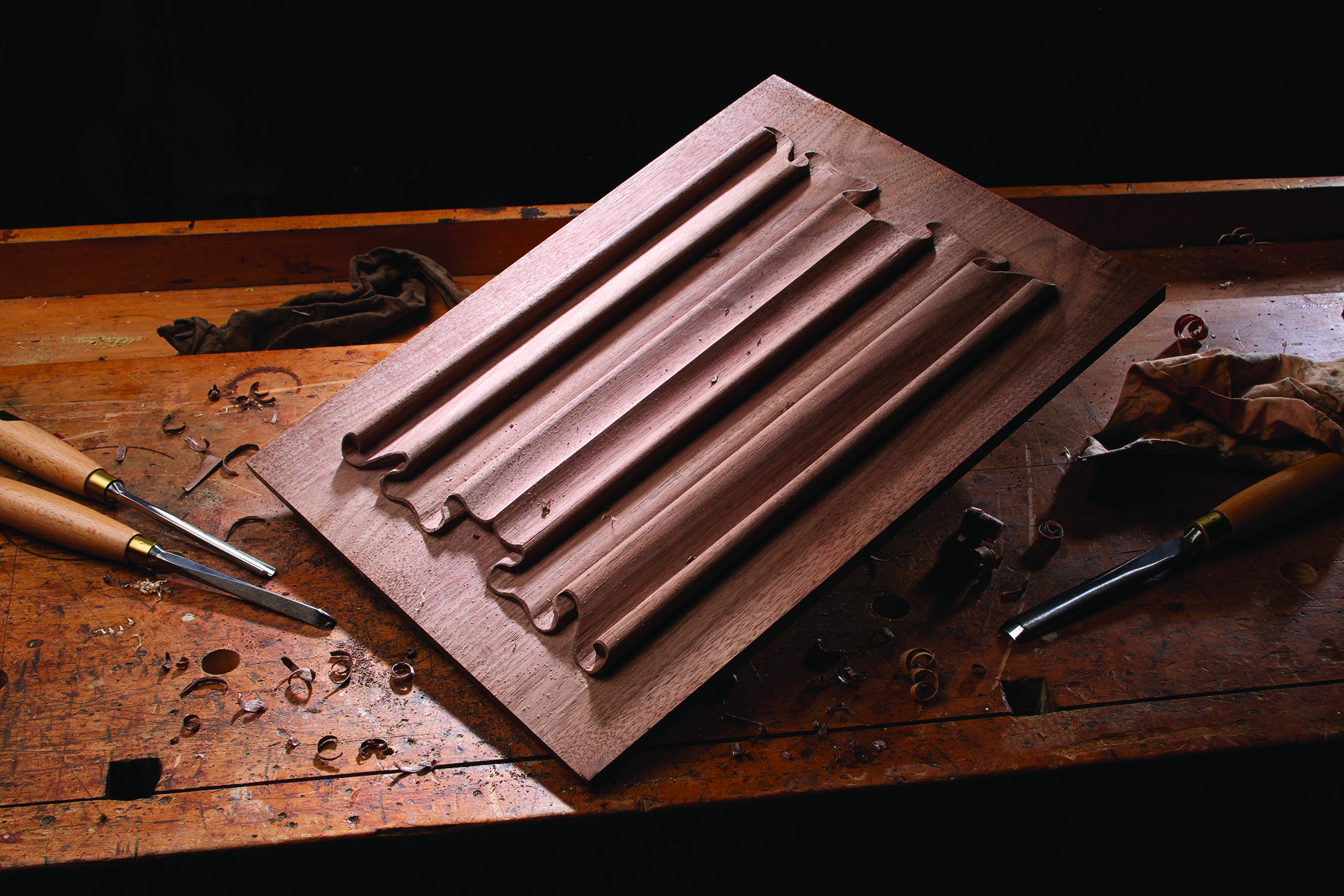
Learn the techniques to carve this traditional flowing drapery design.
Backpacking across Europe as a college student, I experienced the awe-inspiring splendor of magnificent cathedrals and castles. I took every opportunity I could to visit these buildings, and I was afraid to blink for fear of missing some intricate and important detail; I just could not get enough. Without realizing it, this was the start of my passion and love for the art of woodcarving.
The walls in these splendid buildings were often covered in carved oak panels with a flowing drapery design that are referred to as “linenfold panels” or “parchment folds.” This design fascinated me as I studied how the delicately carved ends gave the appearance of cloth that gently twisted and folded over itself. Even without experience in carving, I appreciated the challenge in creating this flowing illusion in wood.
The linenfold panel imitates draped altar cloths and was introduced in panel decoration during the last quarter of the 15th century in the early Gothic period; it’s often seen combined as multiples in larger, paneled walls or in doors. Individual panels sometimes have their edges tapered to fit into grooves in furniture, walls or door frames.
The process of creating the linenfold shape offers many challenges. It is an excellent project that teaches how to give the illusion of perspective in shallow relief.
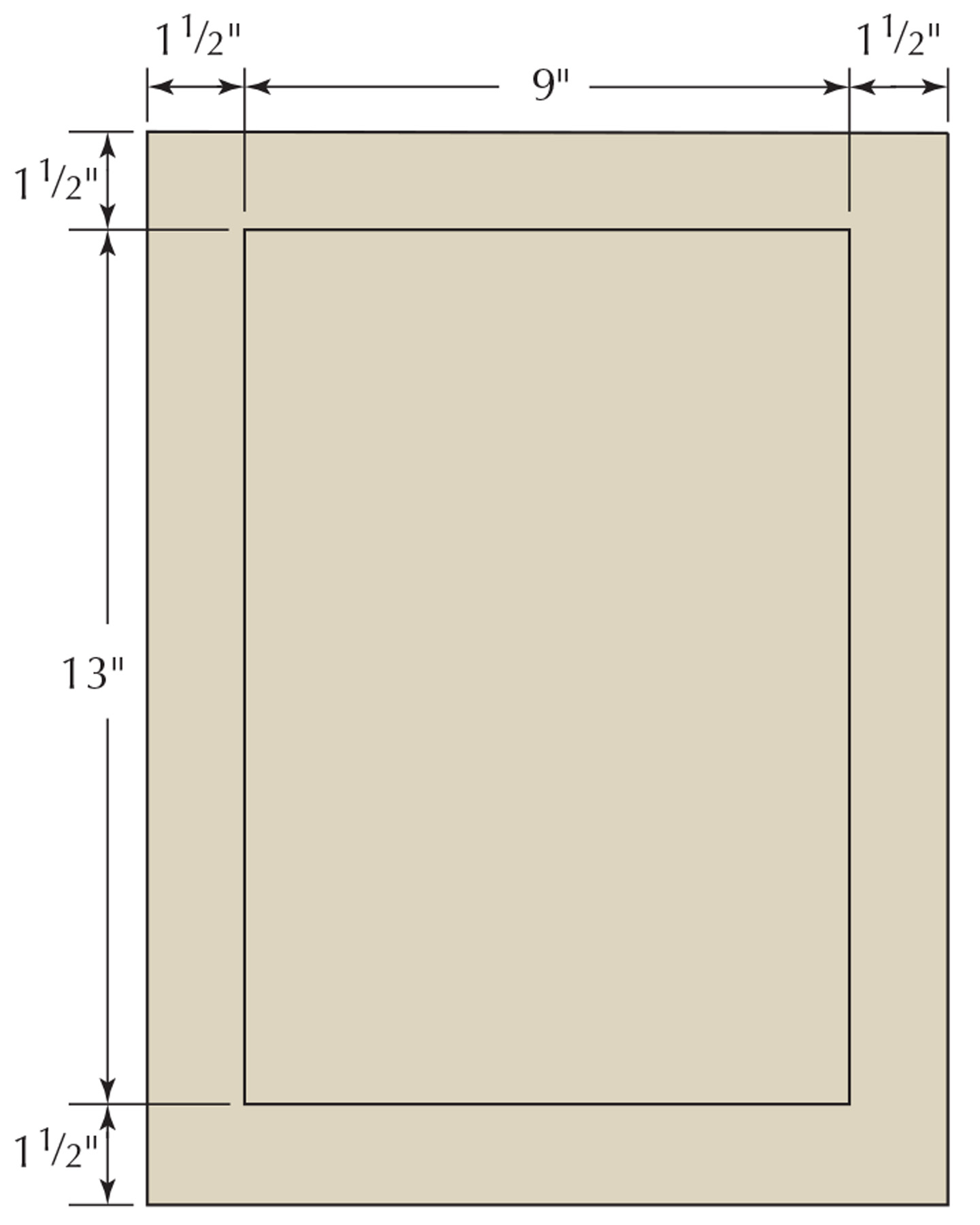
Elevation
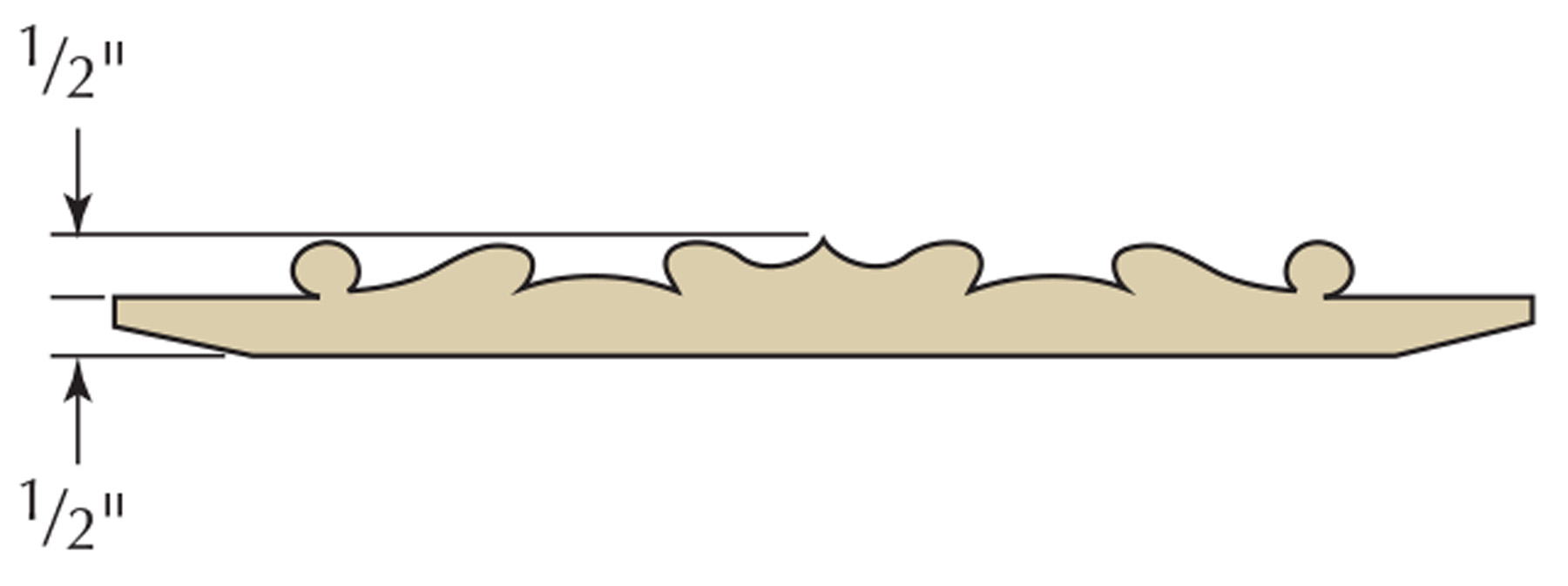
Plan
Work in Large Scale
One suggestion as you learn to carve this design is to make a small section of the design on a larger scale. Carving the S-curve section helps you figure out some of the common problems that come up. It can be a real brain tease, but once you figure out how to achieve the illusion of flowing and twisting cloth, linenfold is a wonderful and satisfying accomplishment.
Who knows – you may get so encouraged, you’ll decorate your own walls with it! If you do, call me… I’ll give you some pointers.
Prepare the Panel
While the delicate carved details on the ends of the linenfold design demand precise carving abilities, lowering the background and preparing the curved profile of the panel requires an equal amount of skill using handplanes. Professional furniture maker Dan Hamilton, of Beaufort, S.C., demonstrates the techniques he used to prepare the wood for me on this project. This panel is made of walnut.
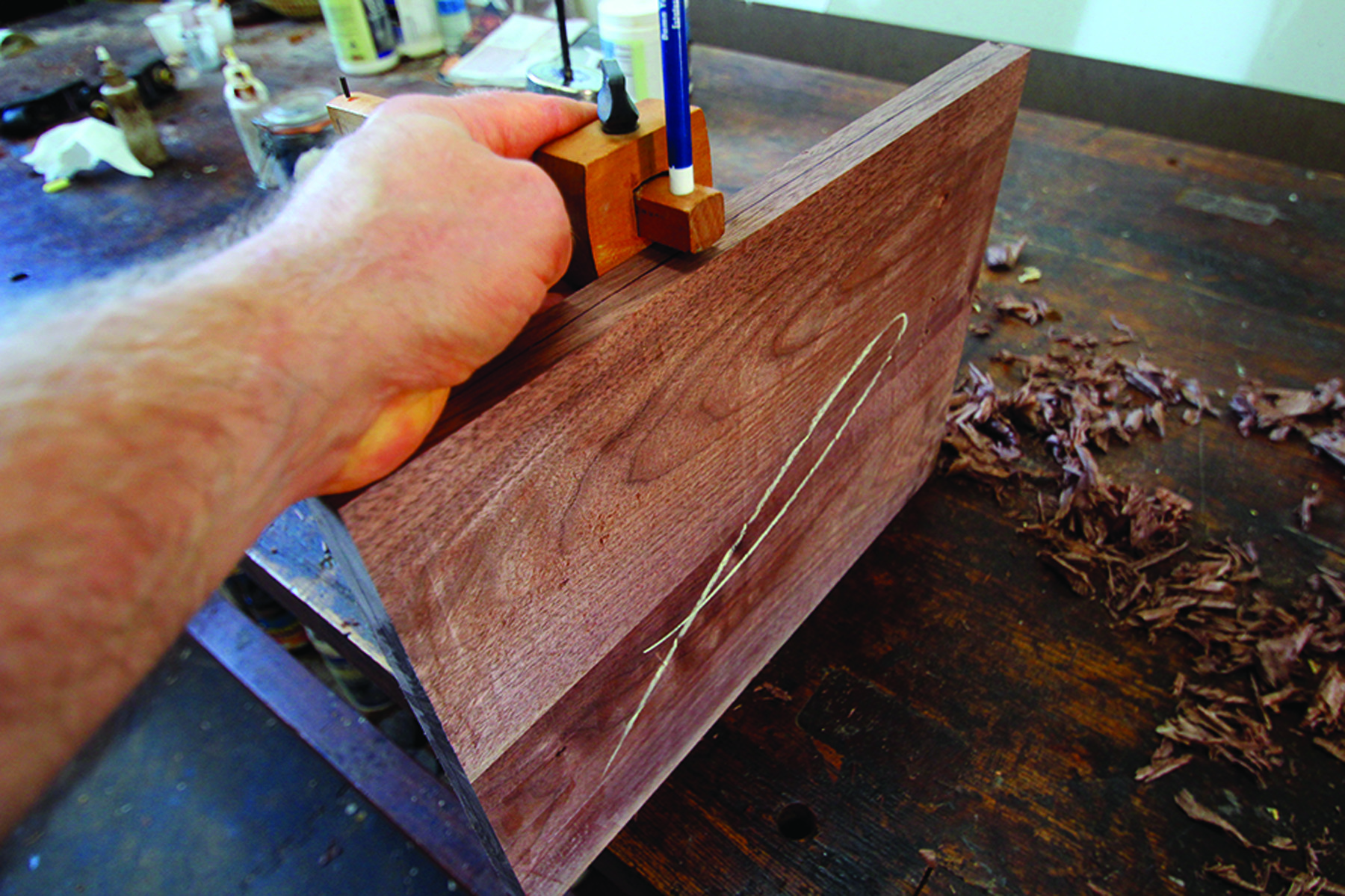
Draw a depth line. Draw a gauge line to locate the depth to which the panel edge is planed. The depth of this particular design is 1⁄2″.
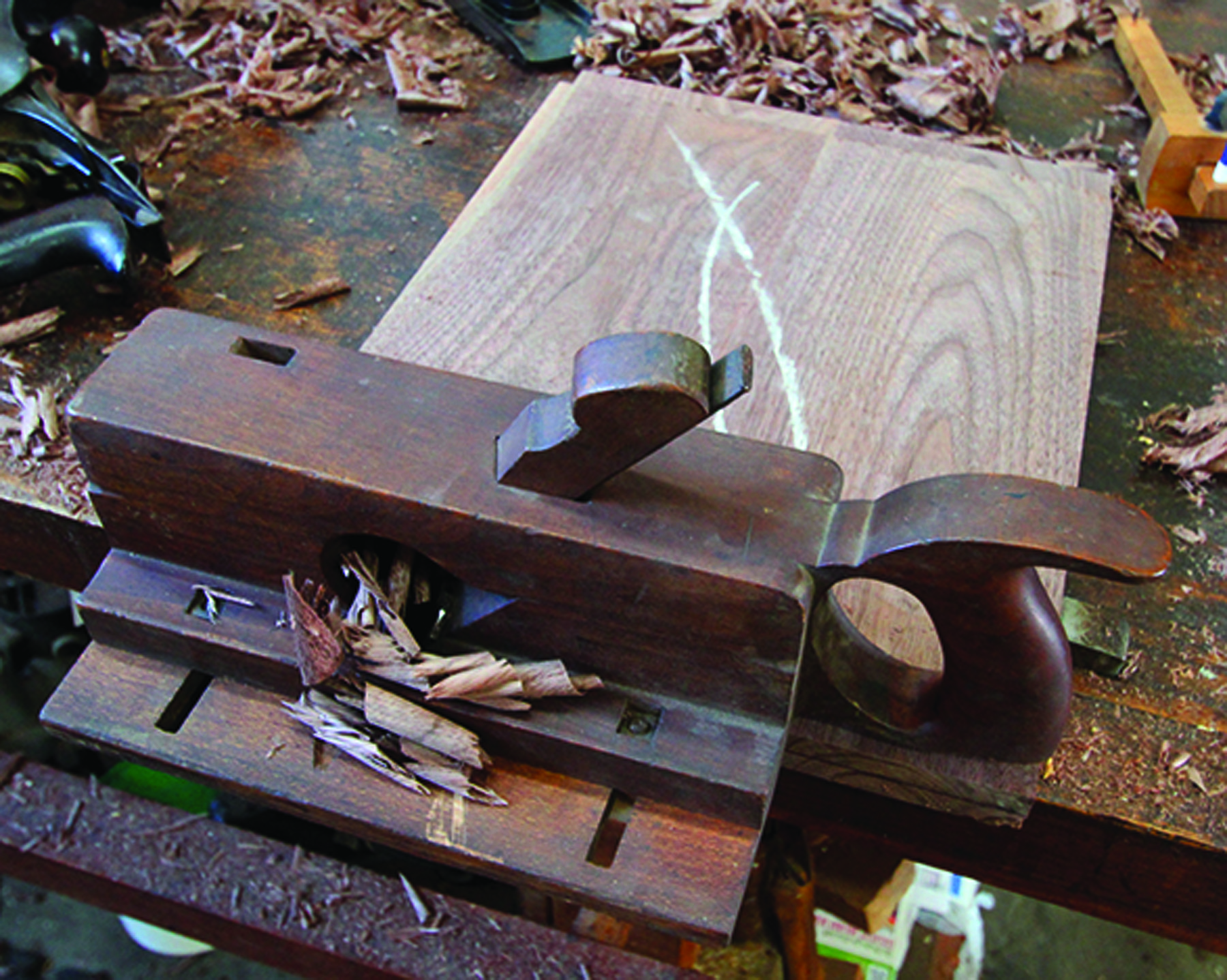
Lower the cross-grain edge. With a moving fillister plane, remove the cross-grain waste just short of the 1⁄2″ depth, so any spelching can be removed when the long-grain waste is removed. The skewed blade of the fillister plane is great for hogging away waste quickly. Next, clean down to the gauge line using a rabbet plane set to take a fine cut.

Draw the profile. Draw the profile of the linenfold design on the ends of the panel to locate the position of the folds in the cloth. Use a plow plane to remove wood between the folds. Set the plane’s fence based on the linenfold pattern drawn on the edge of the wood. (These cuts can also be made at a table saw.) Make sure you do not cut them too deep; they should be just short of the background.
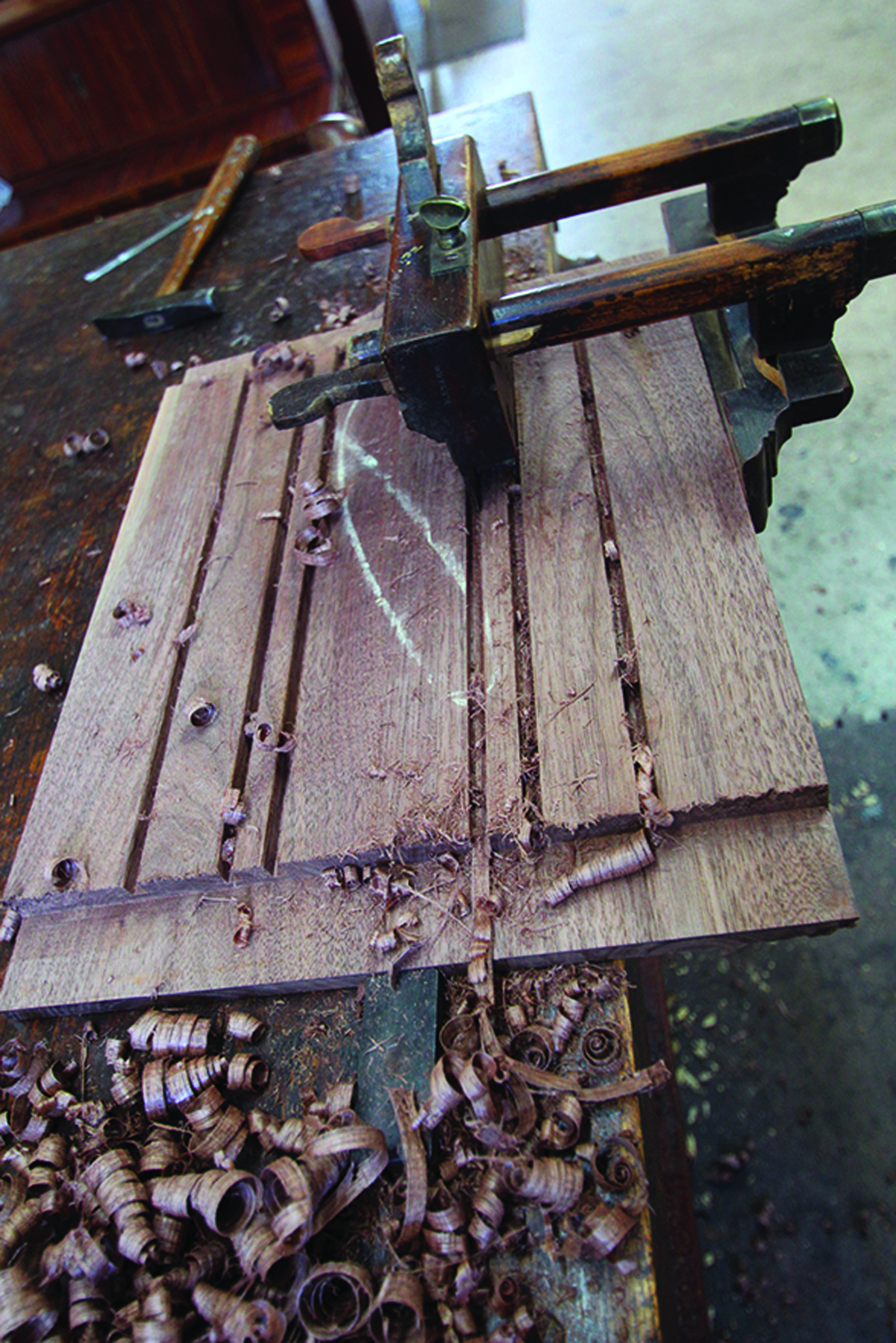
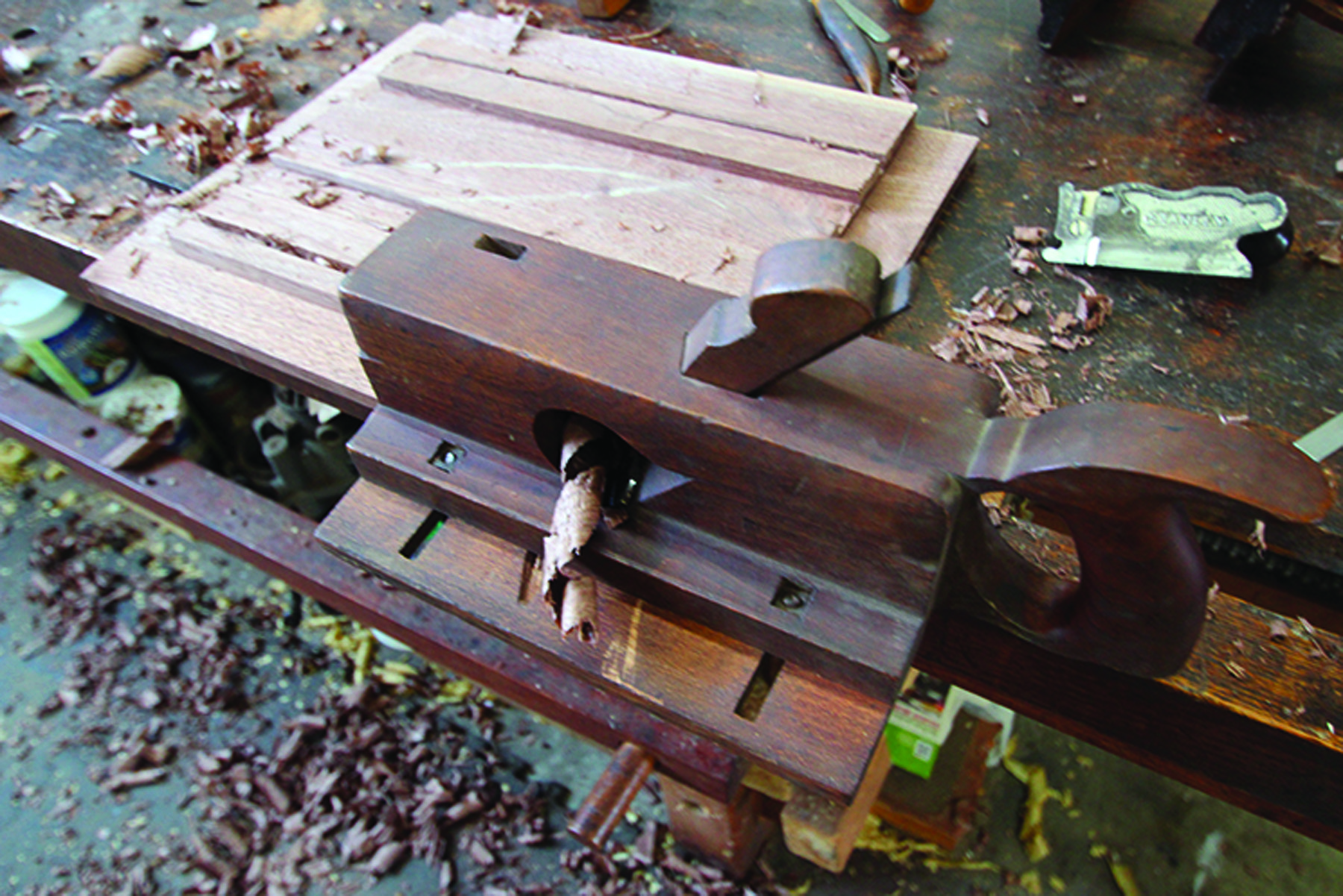
Lower the long-grain edge. When all the grooves between the folds are completed, use a fillister plane to bring down the two long edges to just short of the 1⁄2″ depth. At this time any spelching or splintering from the cross-grain rabbet work is planed away. Next, clean down to the depth of the gauge line with a fine-set rabbet plane to leave a smooth surface.
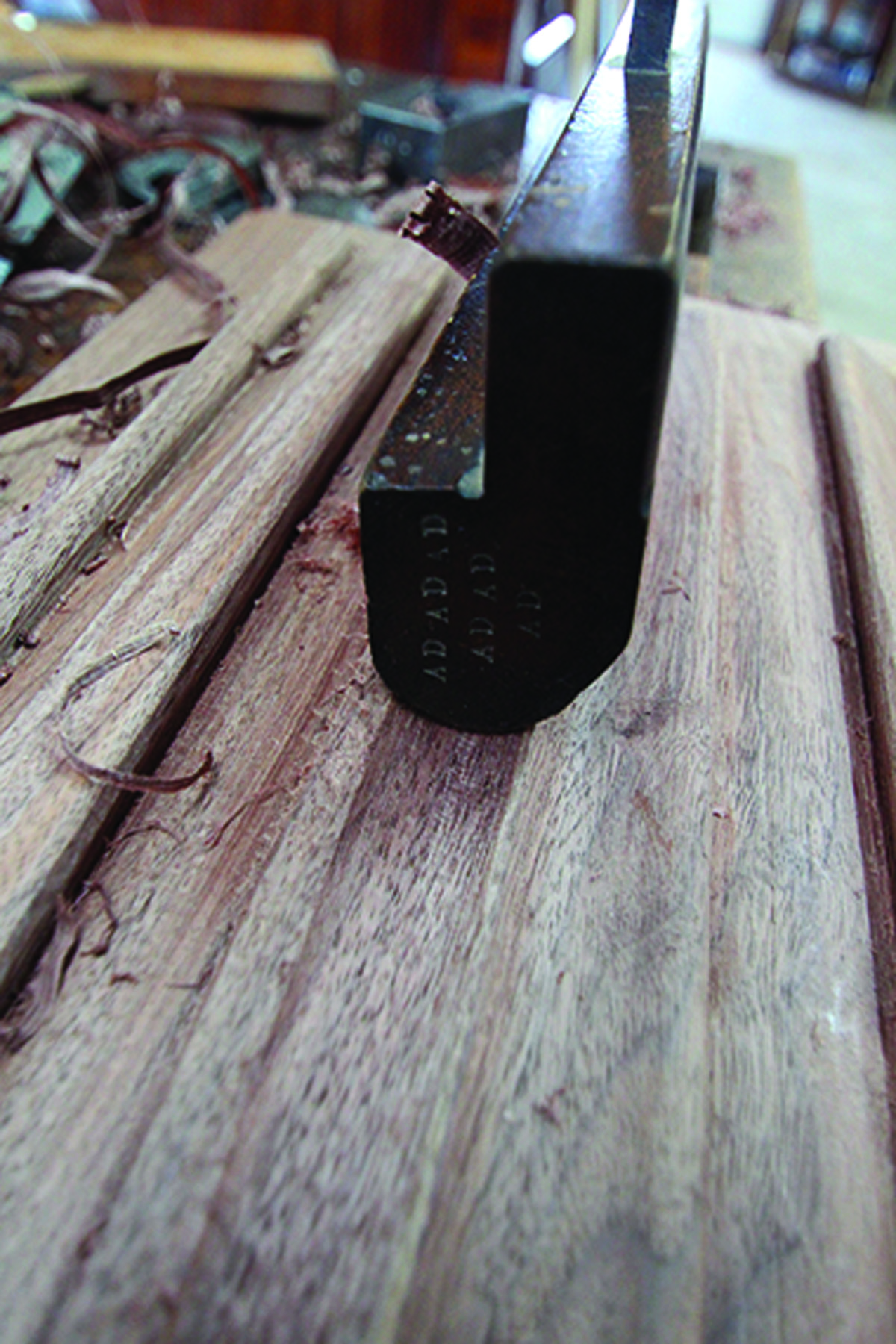
Form the profile. Use a large hollow moulding plane to create convex areas in the panel. Concave areas can be shaped using round planes, and some areas can be worked with a block plane to fair the surfaces together. You can also use various carving gouges to touch up and shape these profiles.
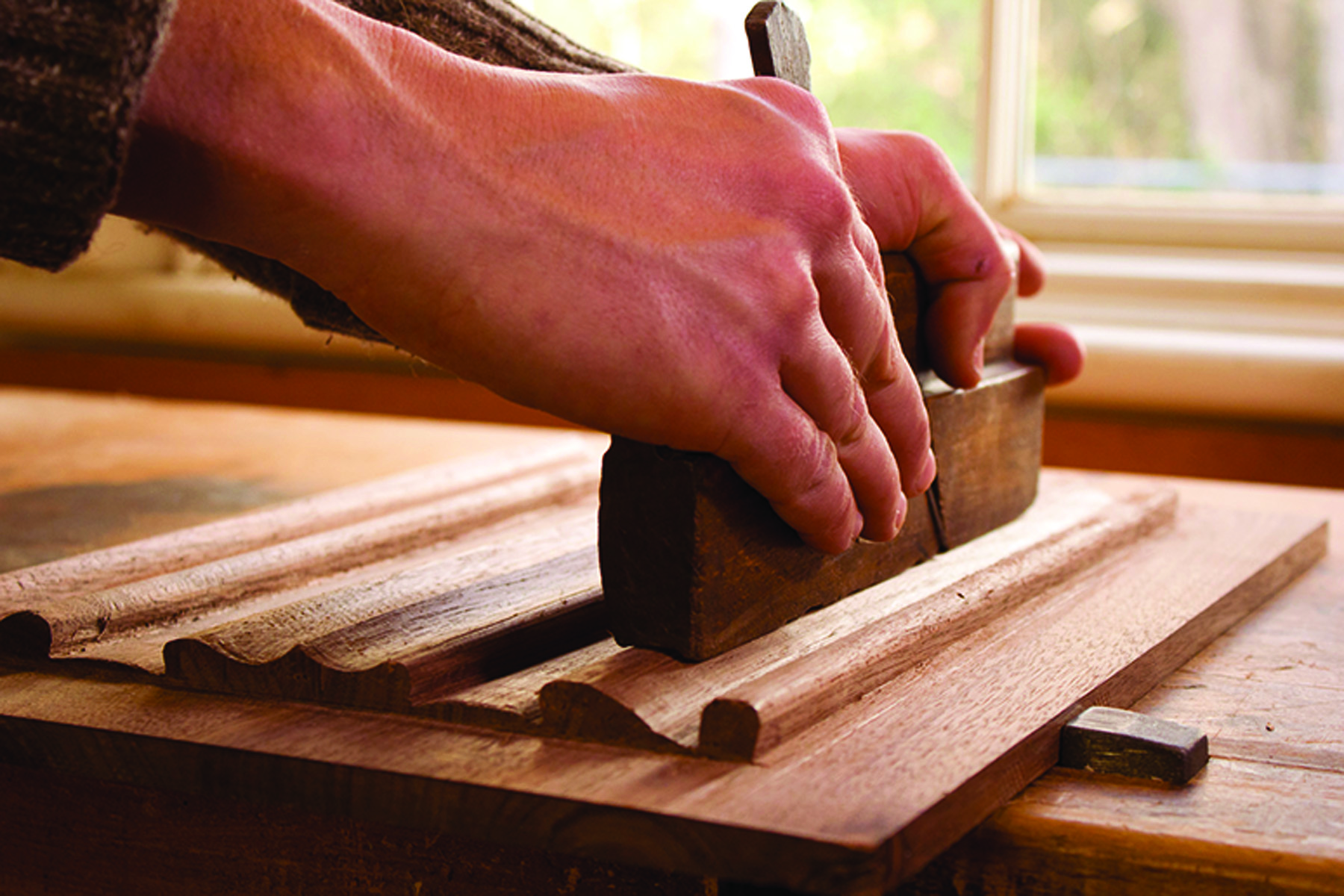
Tips for Carving
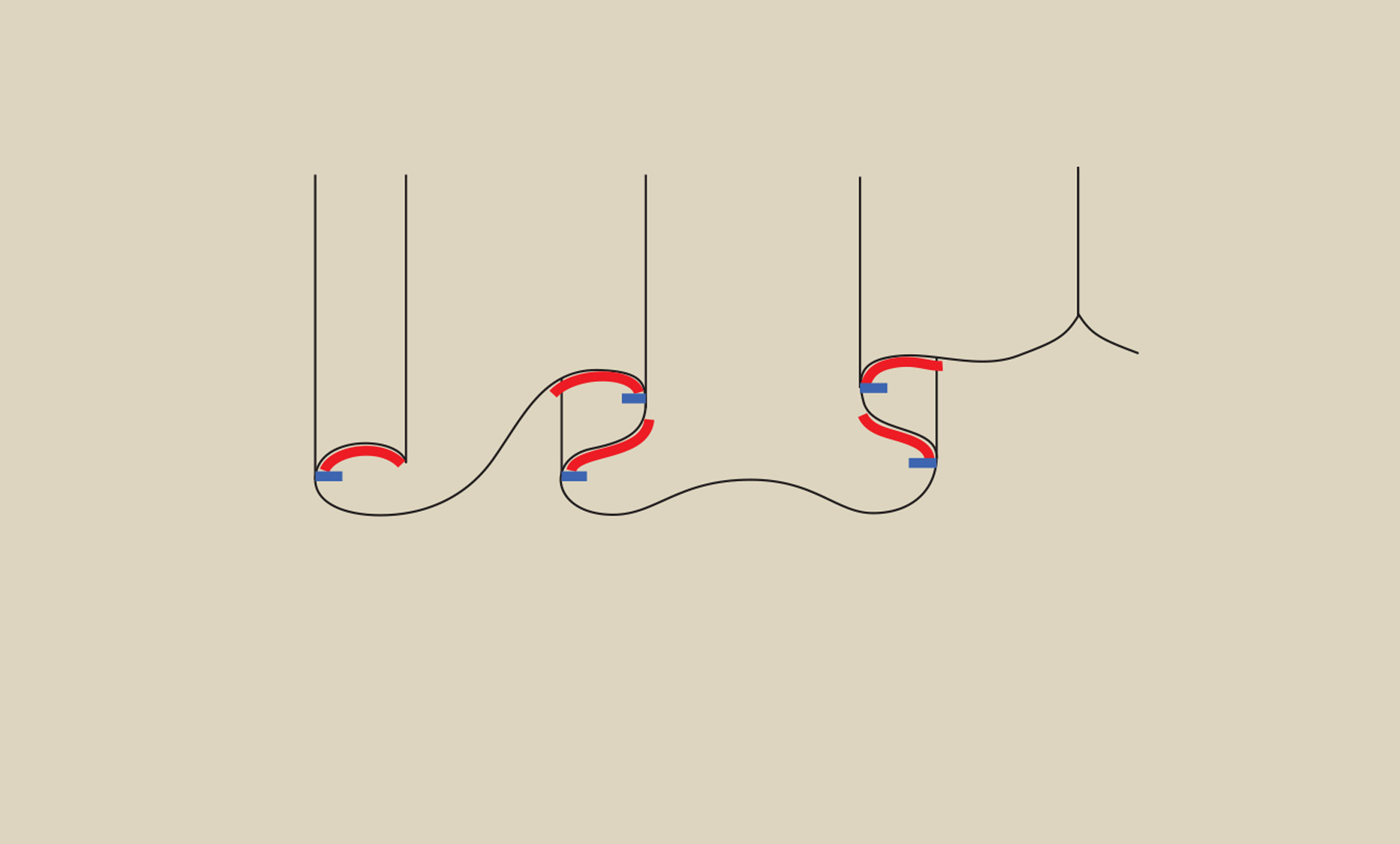
Use a vertical stop-cut to define the edges. This is where this carving often goes wrong. Make sure that when you make these vertical stop-cuts directly on the lines (shown in red), you do not let the gouges cross or extend over the curved edge of the fold because this would cause a break in the edge of the linenfold. Stop this cut just inside this edge (at the blue line).
Much of the carving on the edge of the linenfold design is an optical illusion. Viewing the panel from straight on should give the illusion of depth in a minimal thickness of wood. The most critical line in this design is the flowing edge of the cloth. When carving this, there are a few rules to keep in mind:
■ Do not let any part of this line become straight; keep the edge flowing gently in a continuous curve.
■ Do not let any break or separation appear along this curved line.
■ Make sure that when you carve down the background sections, there is no visible step or transition where it joins the background that was lowered with the handplanes.
■ The S shapes on the fold should not have any sharp corners, but should flow gently.
■ One option, not mentioned in the step-by-step instructions, is to make the vertical stop-cuts at a slight undercut angle; the edge will create a dramatic shadow line. Be careful not to make these undercuts at too much of an angle or the edges will become too fragile.
A Carved Room
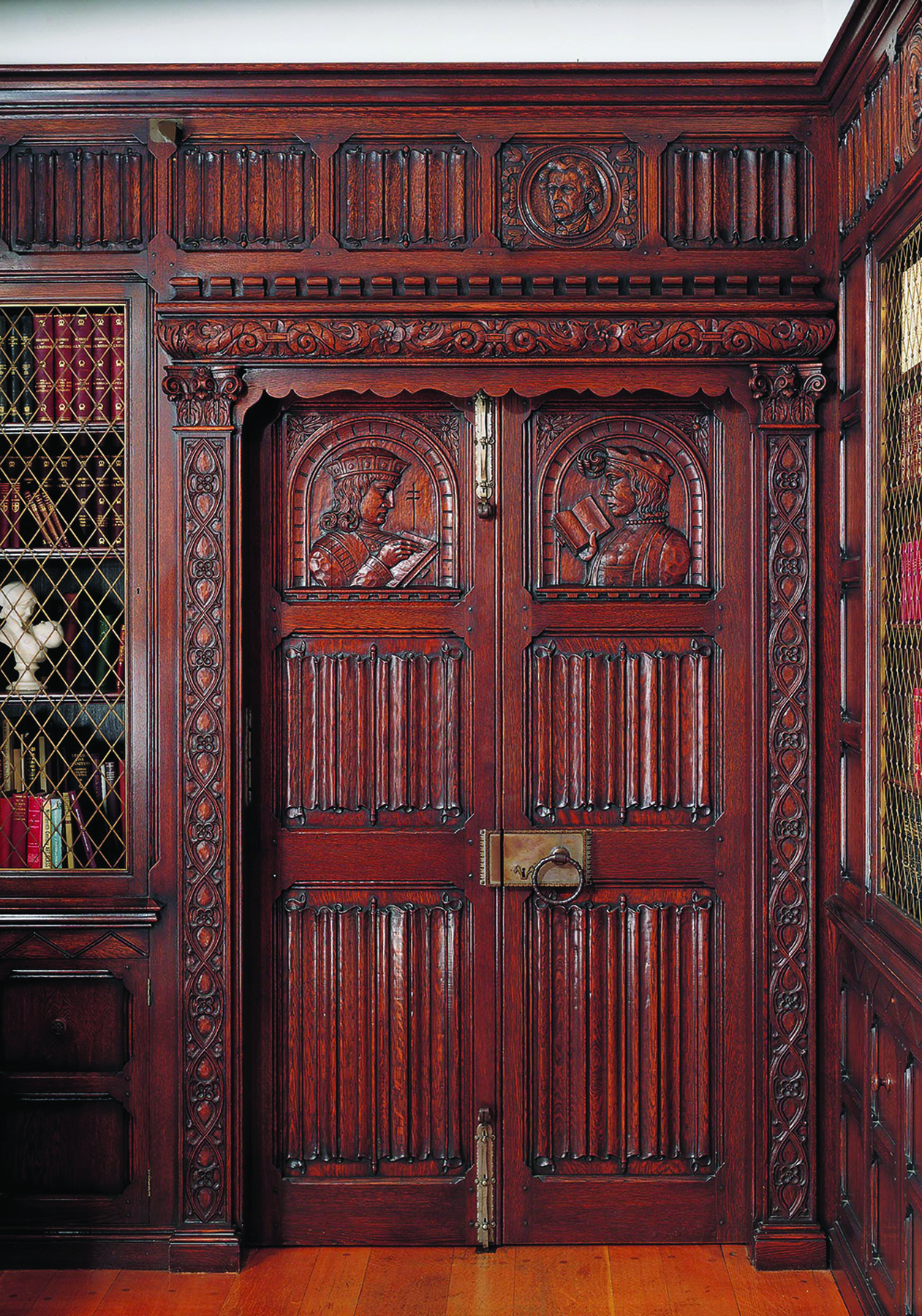
The carved entryway in the library of Meadow Brook Hall in Rochester, Mich., (above) is a stunning example of linenfold carving.
The linenfold design I chose to carve for this project is based on the wall panel details (below) of this historic house. It can be seen in the room known as “Alfred’s Study.”
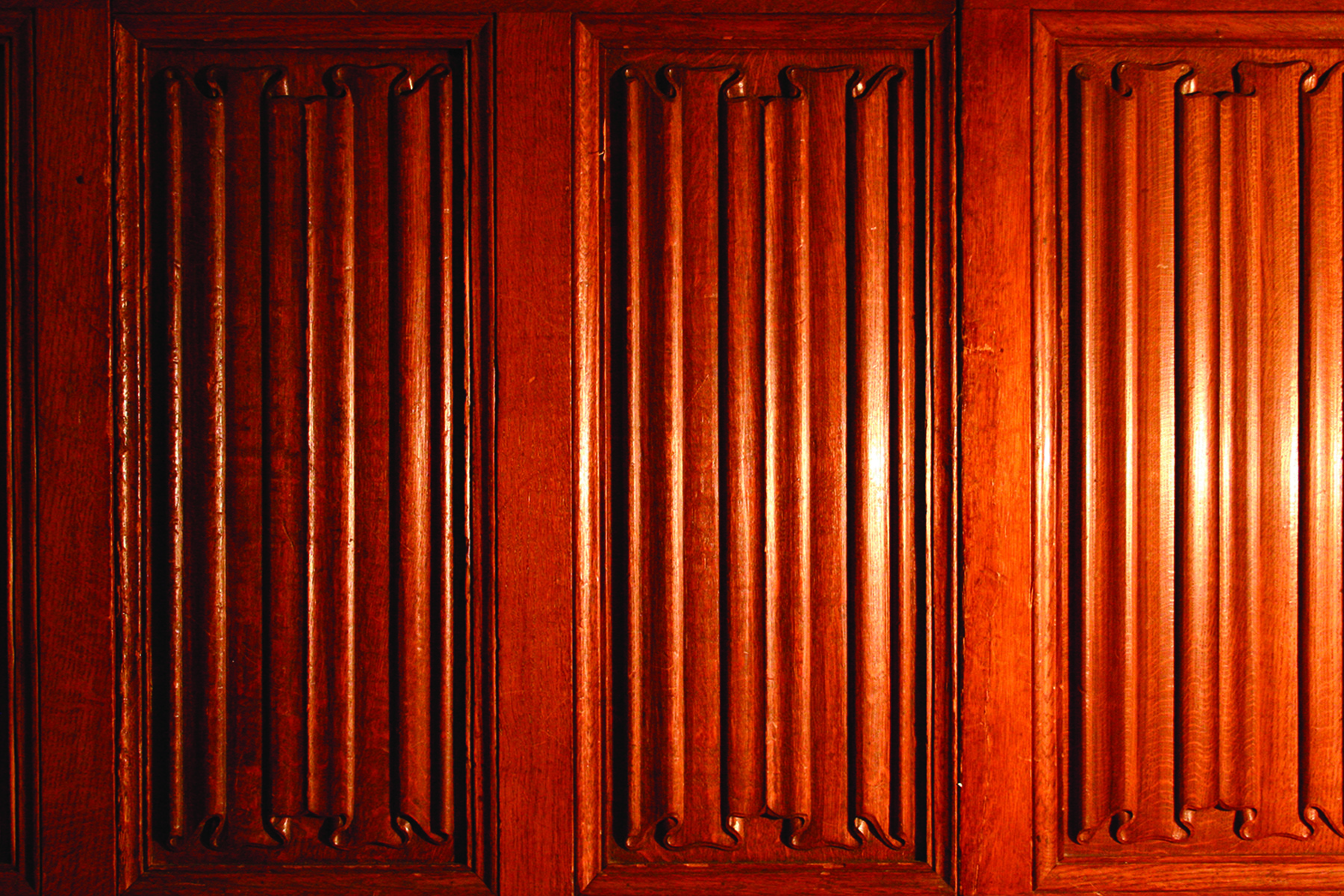
Tools You Need
German-, Swiss- and Austrian-made tools are generally quality examples. Long-handled gouges are safer and easier to control than palm gouges. The “No.” in the list below refers to “sweep” – as the number increases, so does the blade curvature:
■ Moving fillister plane
■ Rabbet plane
■ Plow plane or saw
■ Various hollow and round
Planes
■ Mallet
■ 6mm V-chisel (60º angle)
■ 6mm No. 3 gouge
■ 14mm No. 3 gouge
■ 12mm No. 4 gouge
■ 6mm No. 8 gouge
All of the woodcarving gouges that I have used in this instruction are fishtail shaped, because they reach into tight corners more easily.
Other techniques and tools can be used, such as using a table saw to lower the outside edges.
— MM
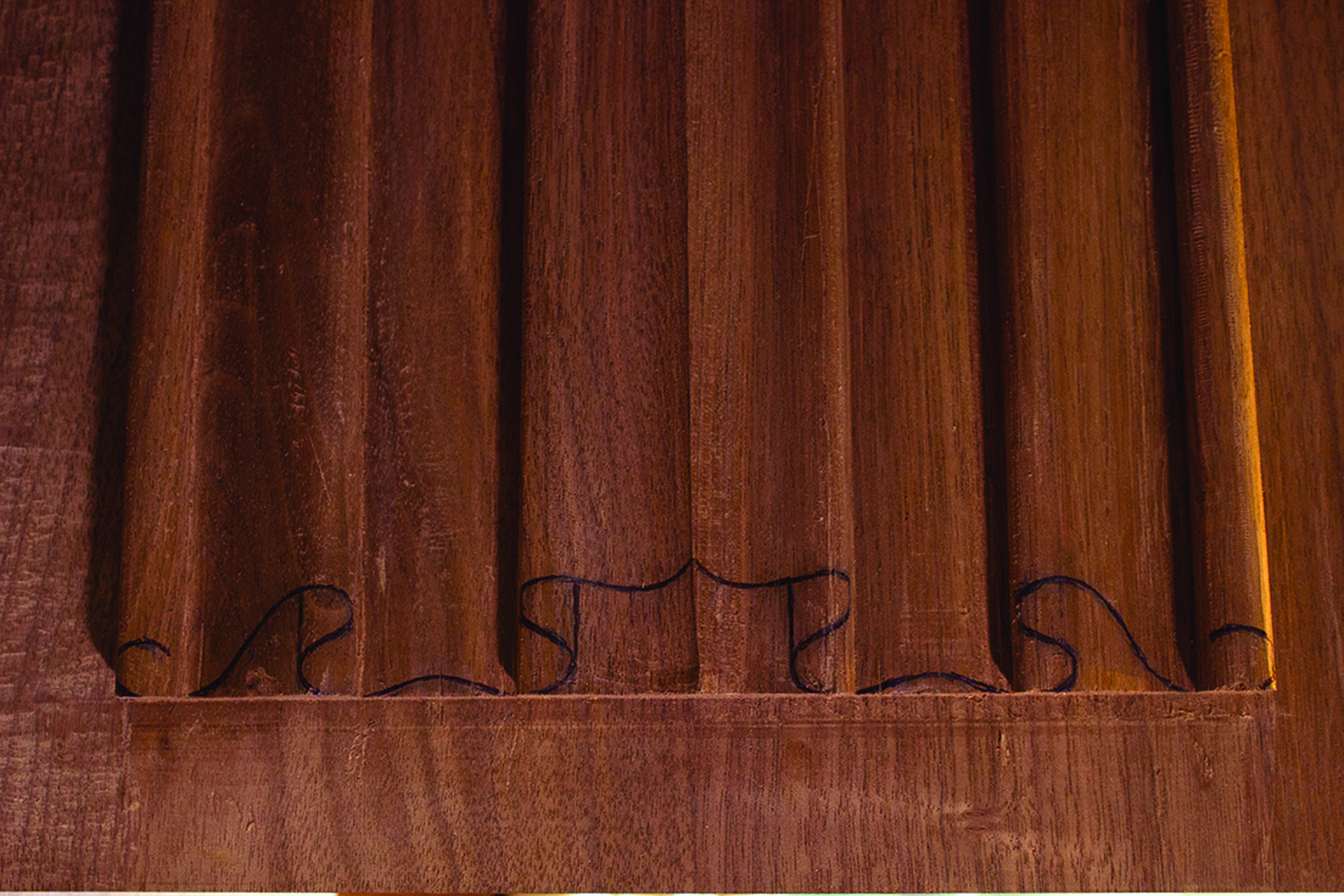
1. Draw the linenfold profile on the top surface of the wood. Make sure that the lines go completely to the edges of the curved profiles.
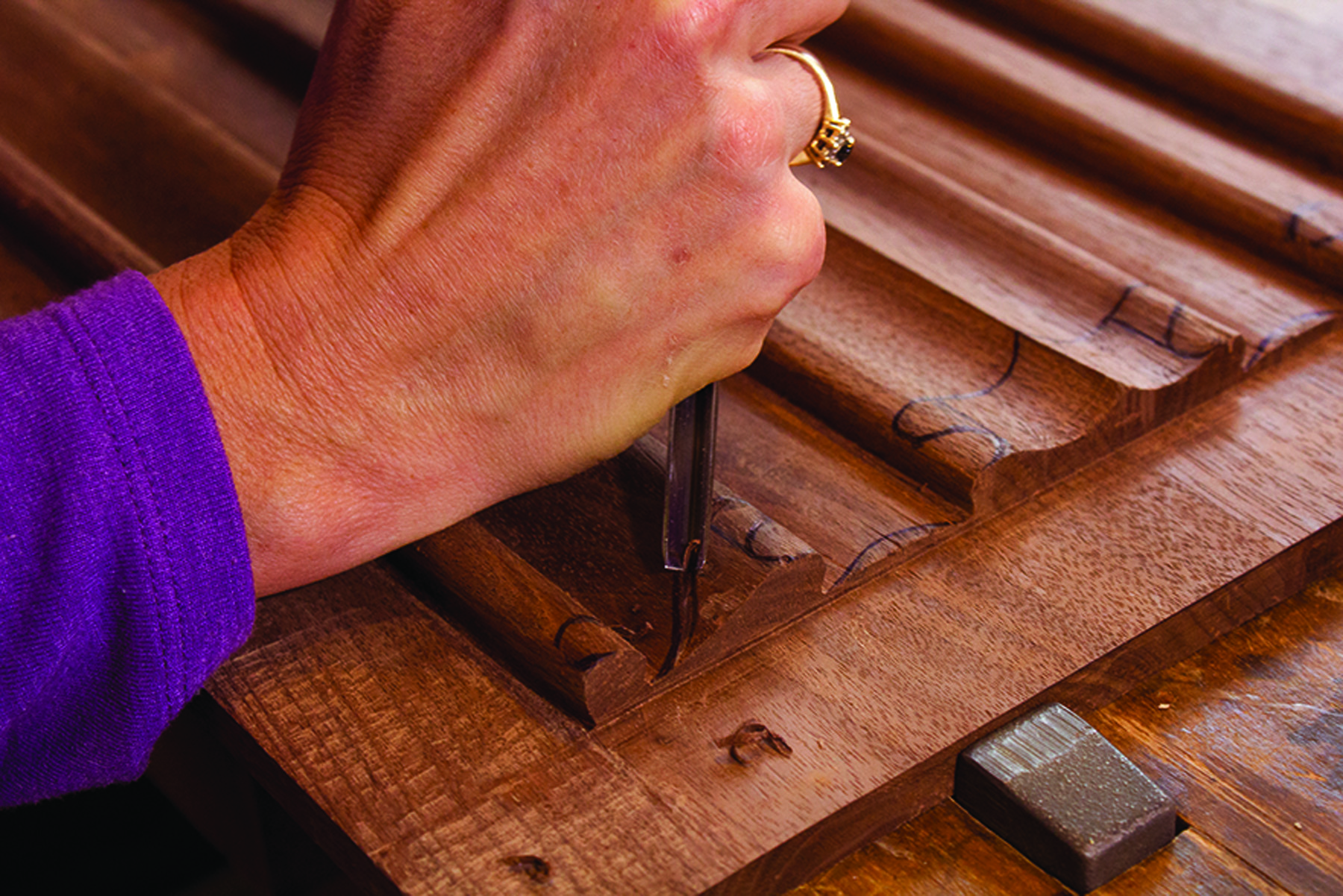
2. Use a 6mm V-chisel to make a cut at the edge of the linenfold just below the line, leaving the line visible. Go as deep as the chisel can safely go, approximately 3⁄16″. This cut begins to remove the bulk of the wood and starts to shape the cloth edge.
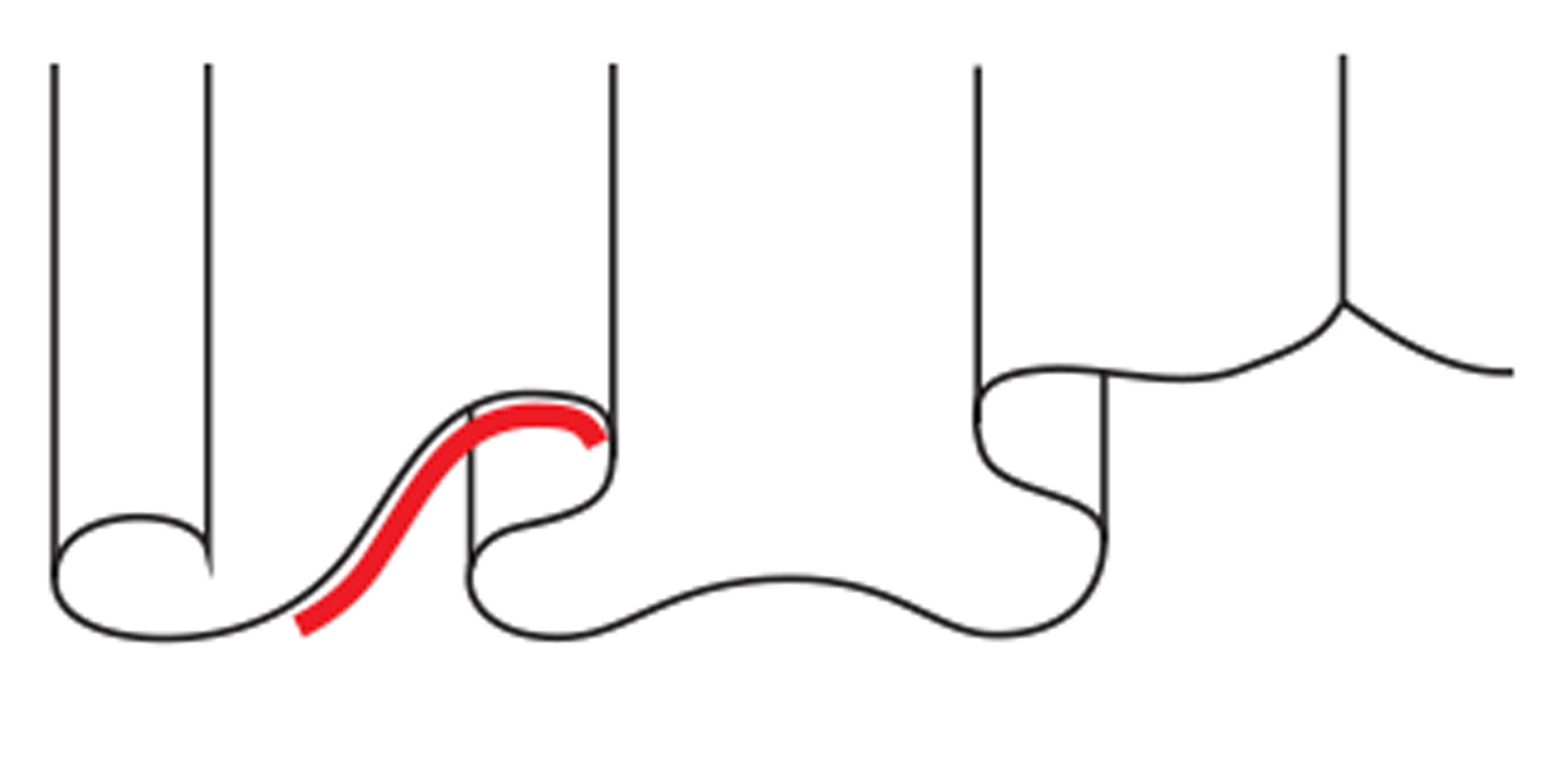
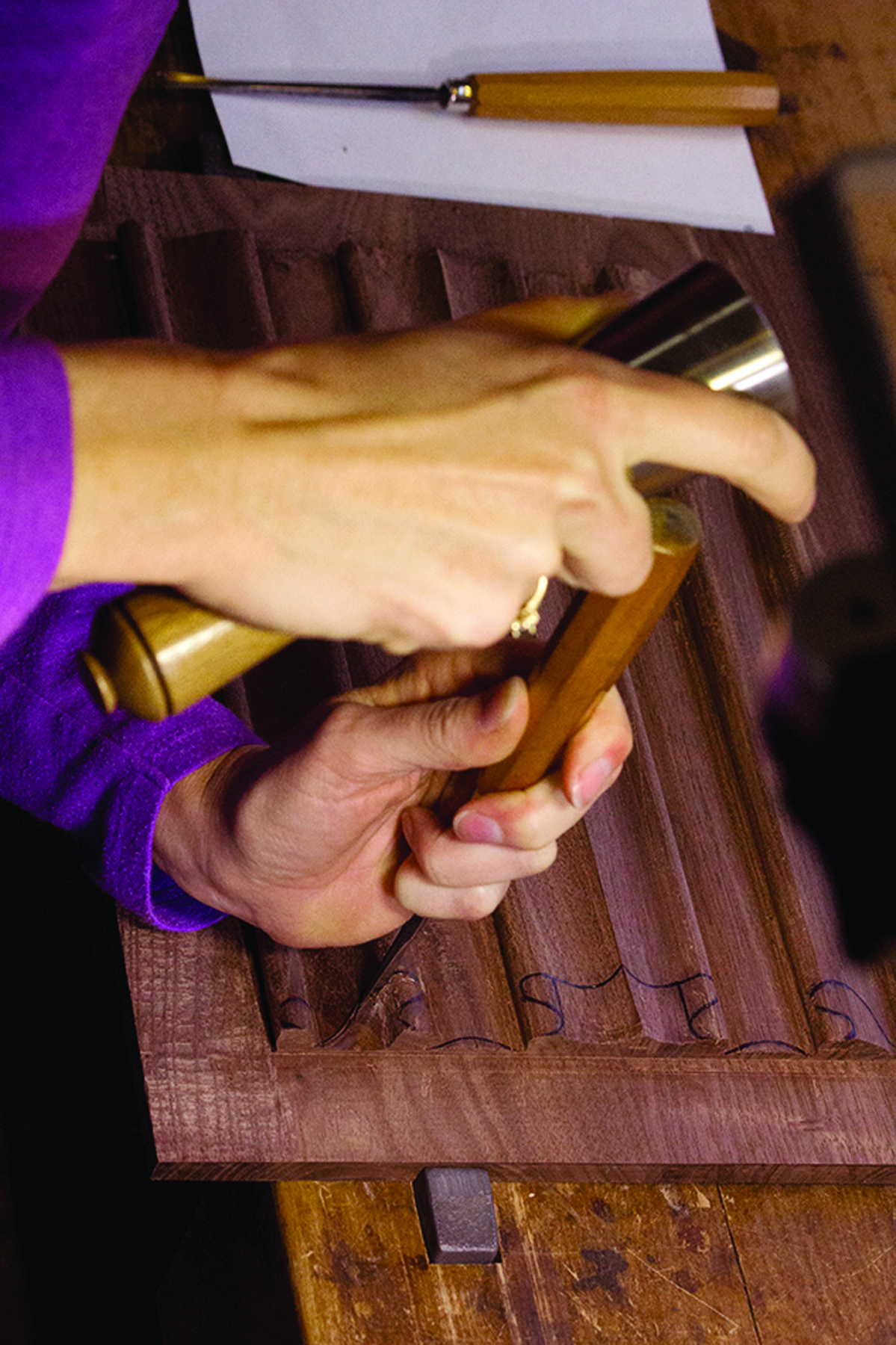
3. Use a 14mm No. 1 flat chisel and 14mm No. 2 gouge to define the edge of the linenfold where the background will be lowered. Make this a vertical stop-cut directly on the line and cut it all the way to the background.
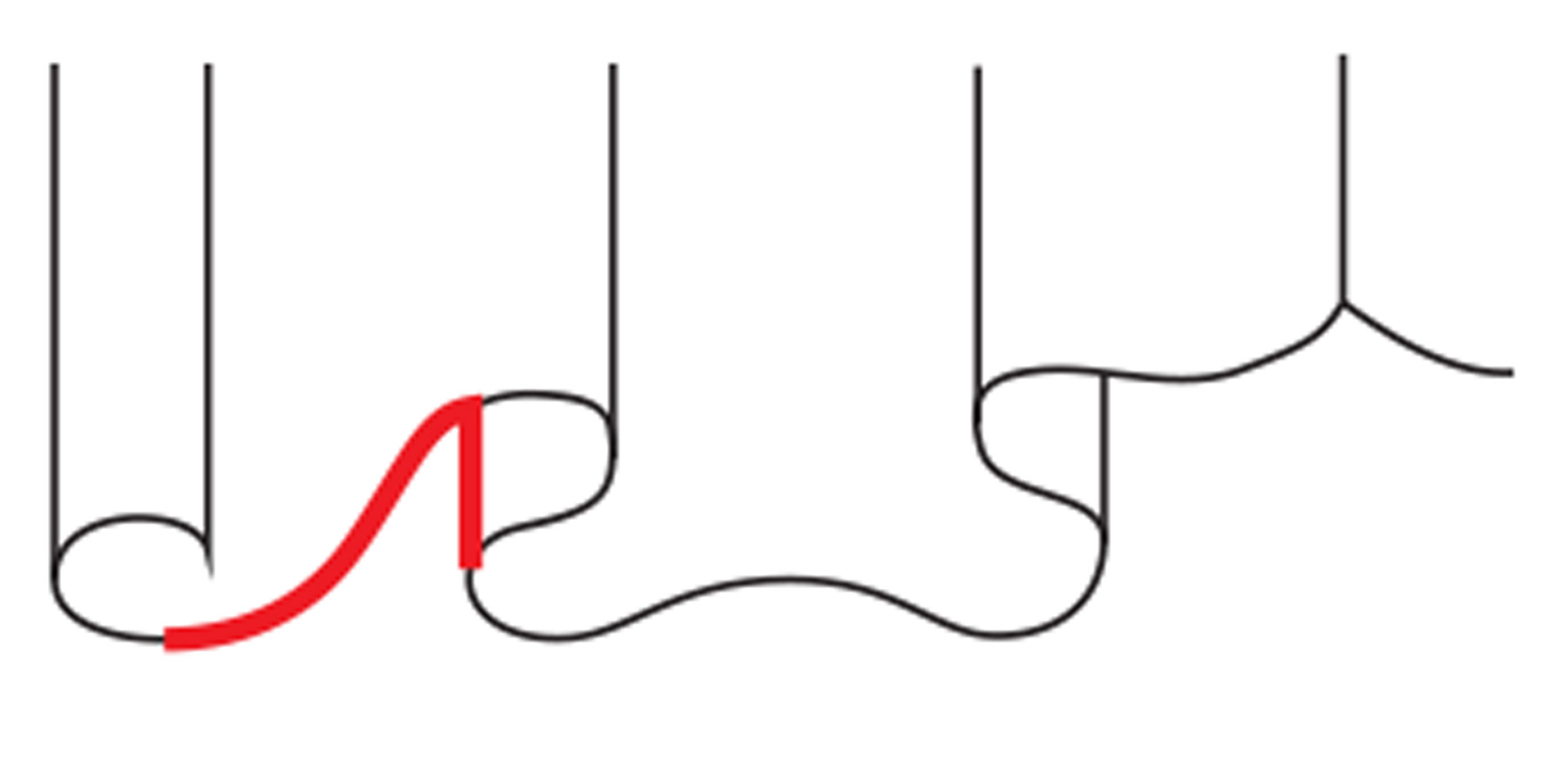
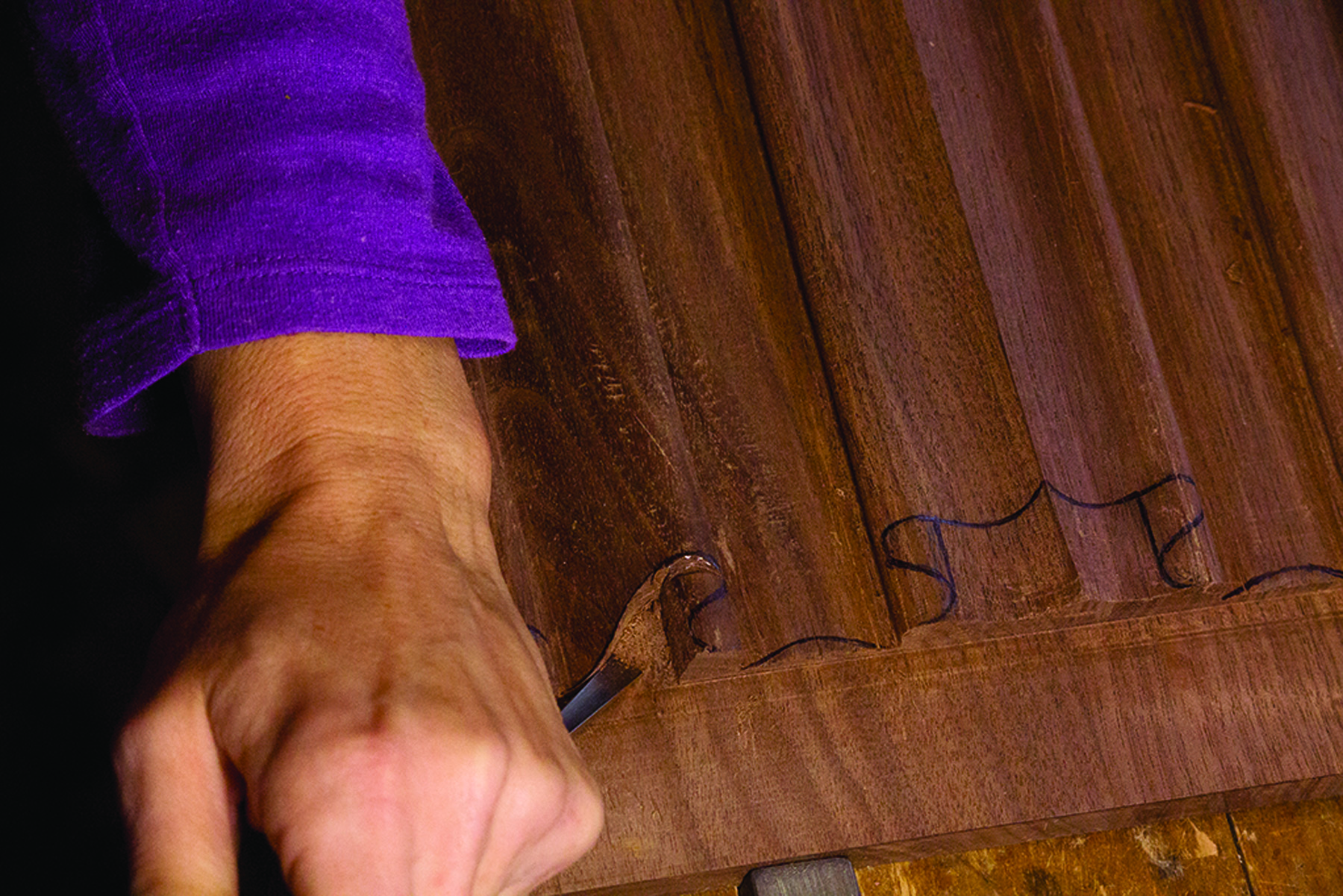
4. Use a 6mm No. 3 gouge to flatten the background and clean up this triangle-shaped area. This section should finish at the same depth as the edges of the panel and should blend smoothly into this background.
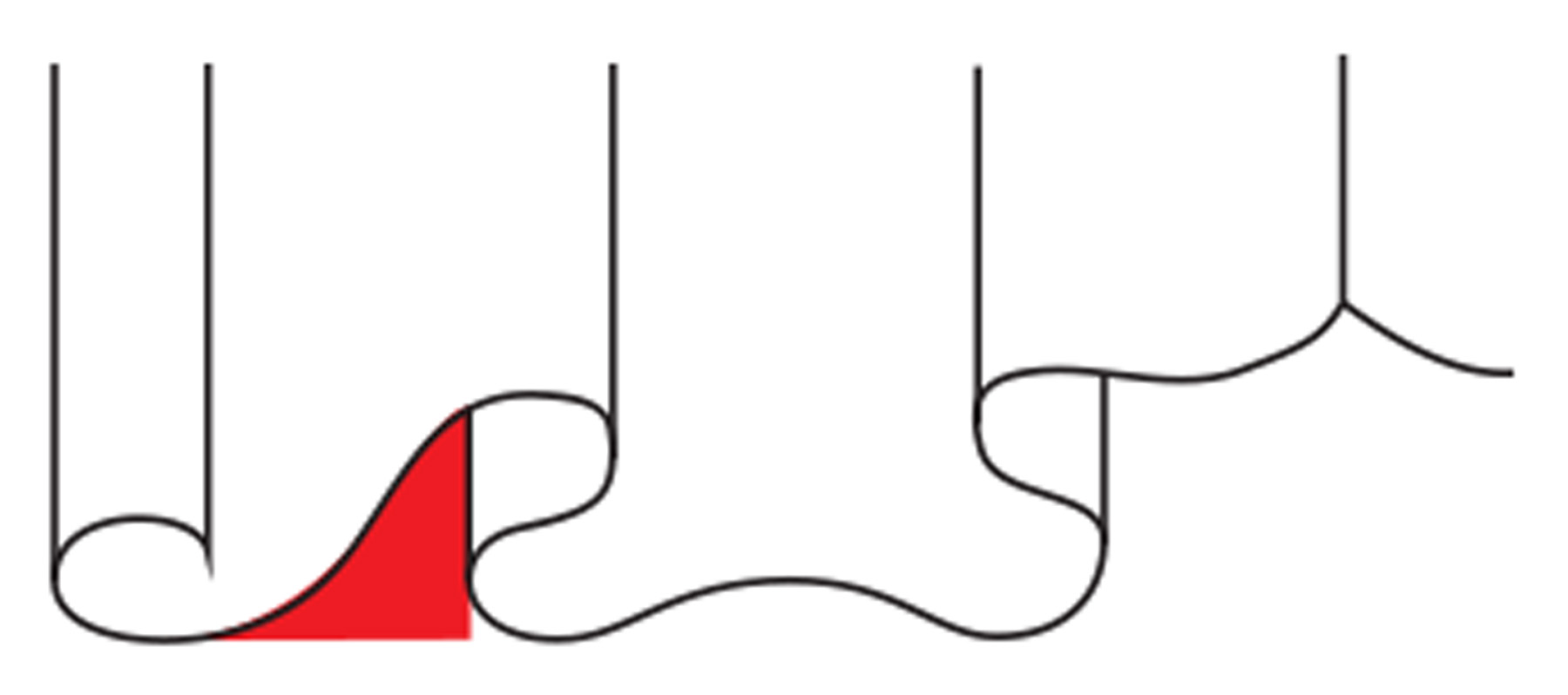
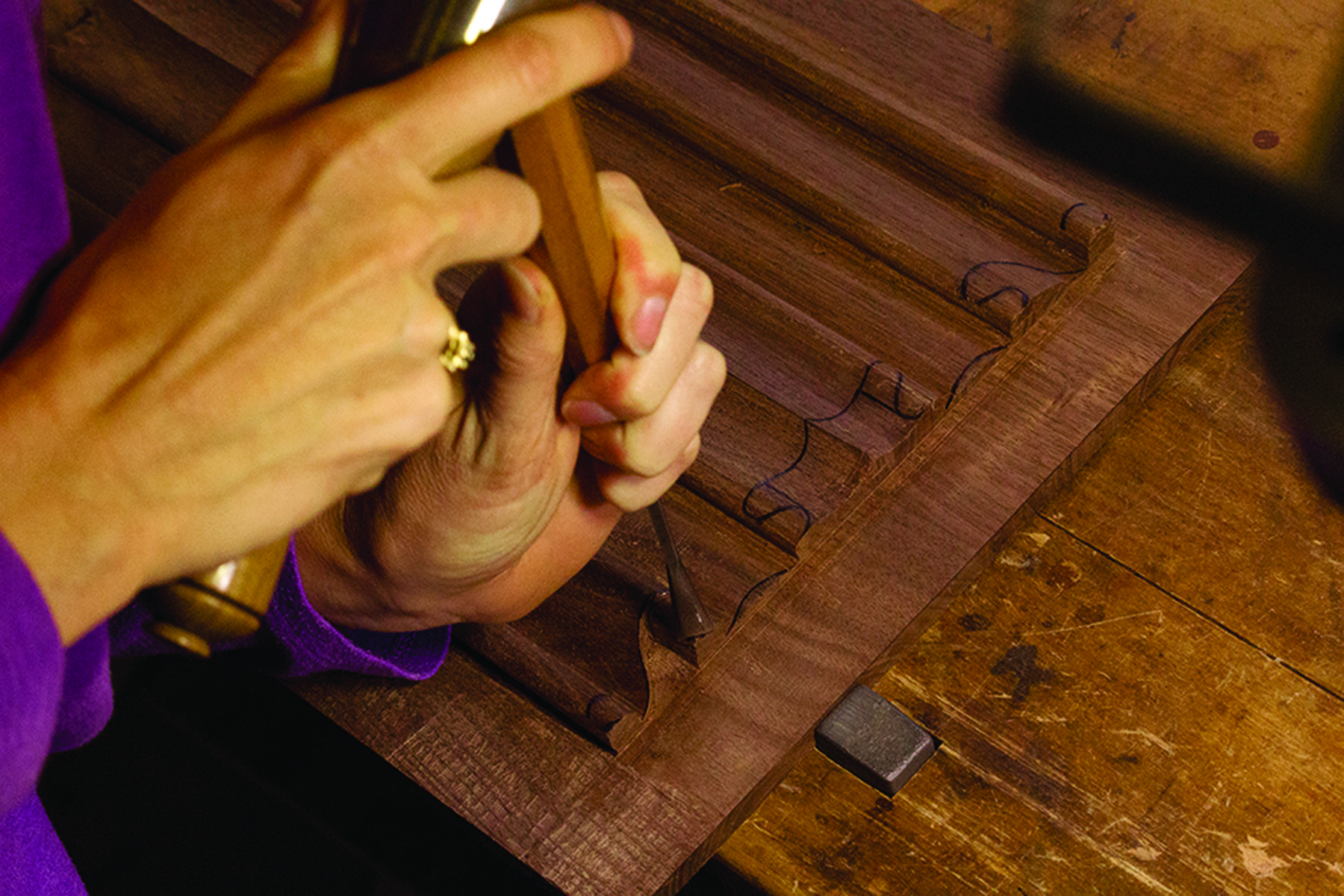
5. Using a 12mm No. 4 gouge, round this corner down to the background then clean up the background surface.
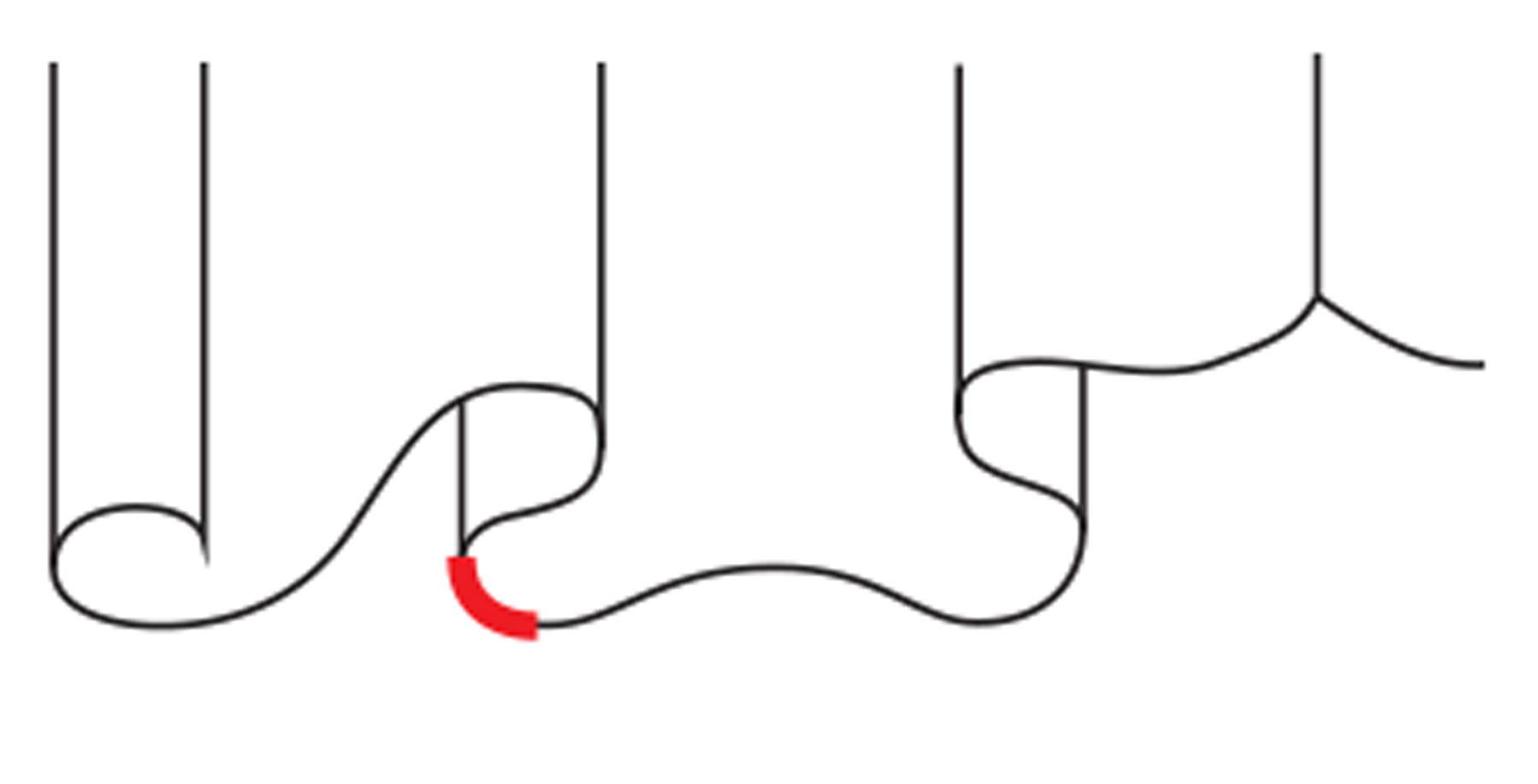
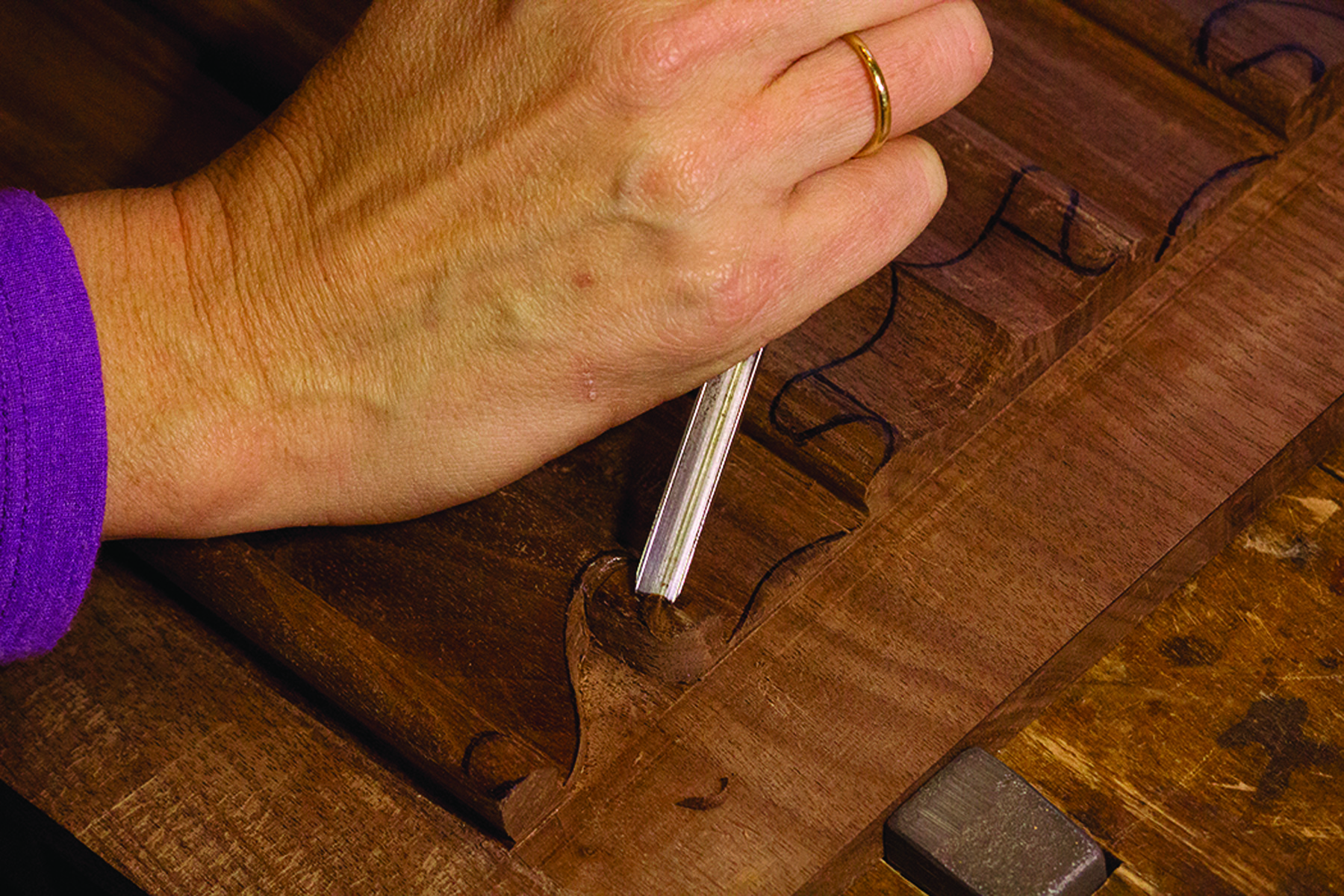
6. With a 6mm V-chisel, make a cut to define the middle twist in the cloth, and leave the line visible. Make this cut approximately 3⁄16″ deep.
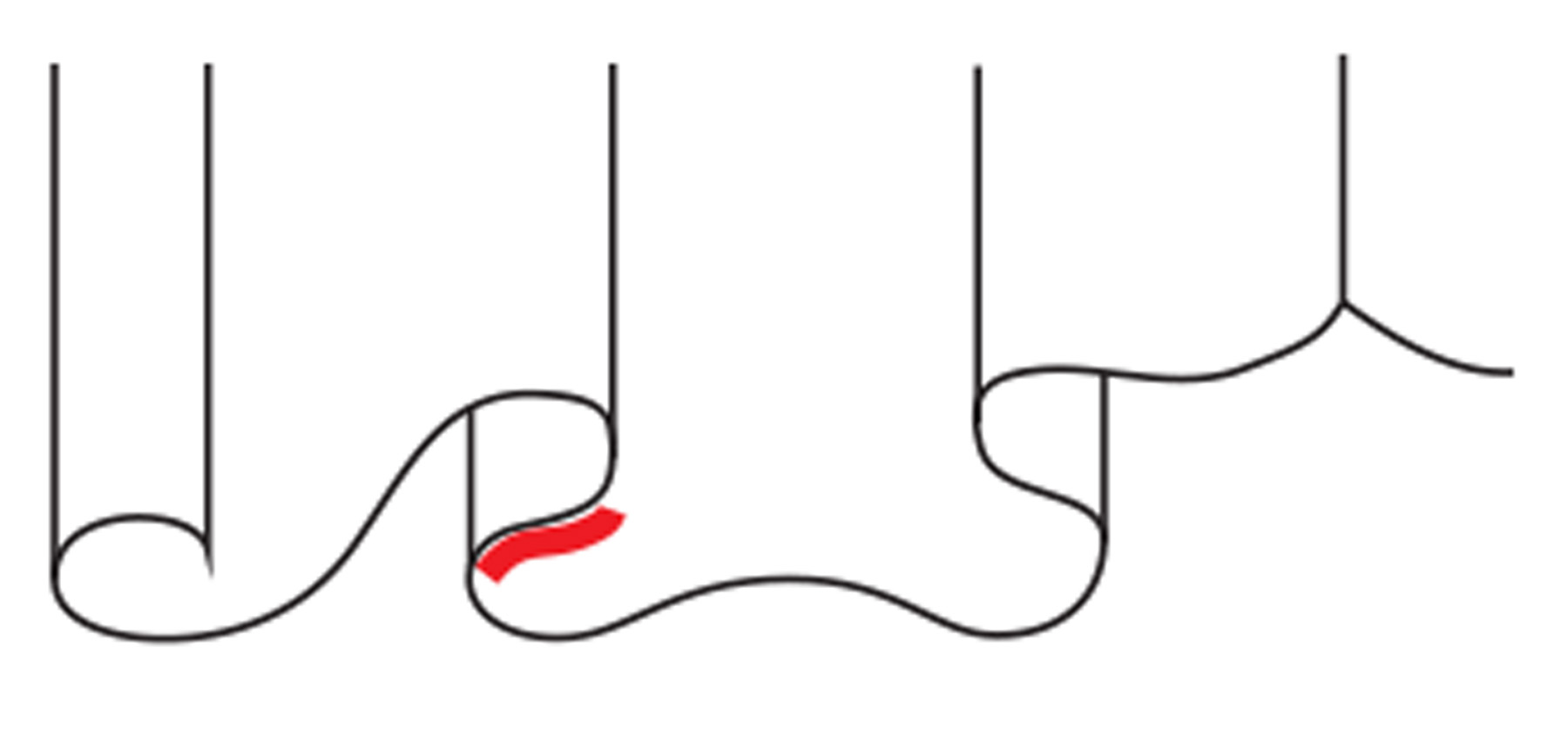
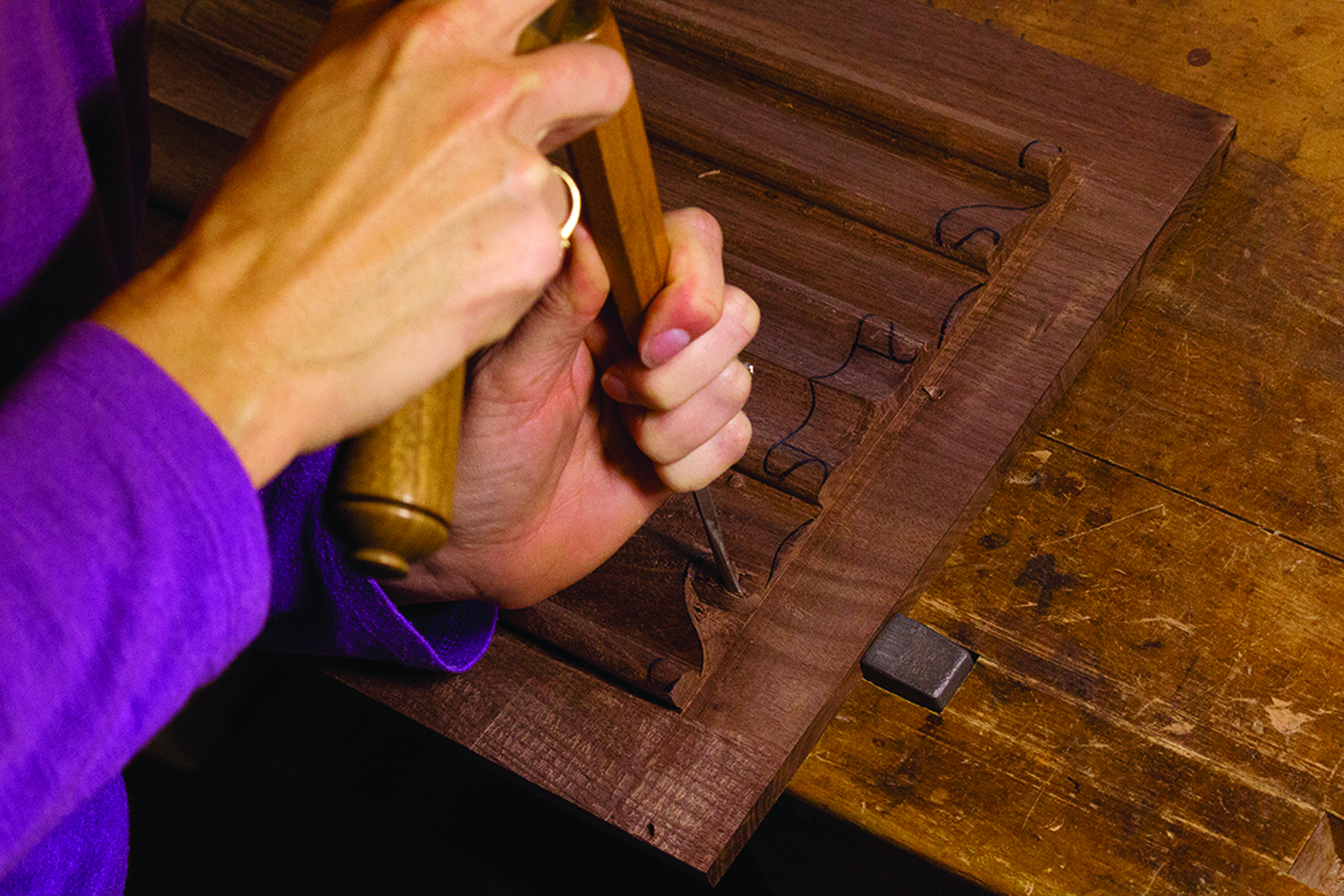
7. Use a 12mm No. 4 gouge and a 6mm No. 8 gouge to define the edge of the twist with a vertical stop-cut directly on the line. Make sure this cut does not go over the curved edge or it will break the continuous flow. This cut should go only to the depth of the lower twist (approximately 3⁄16″ deep).
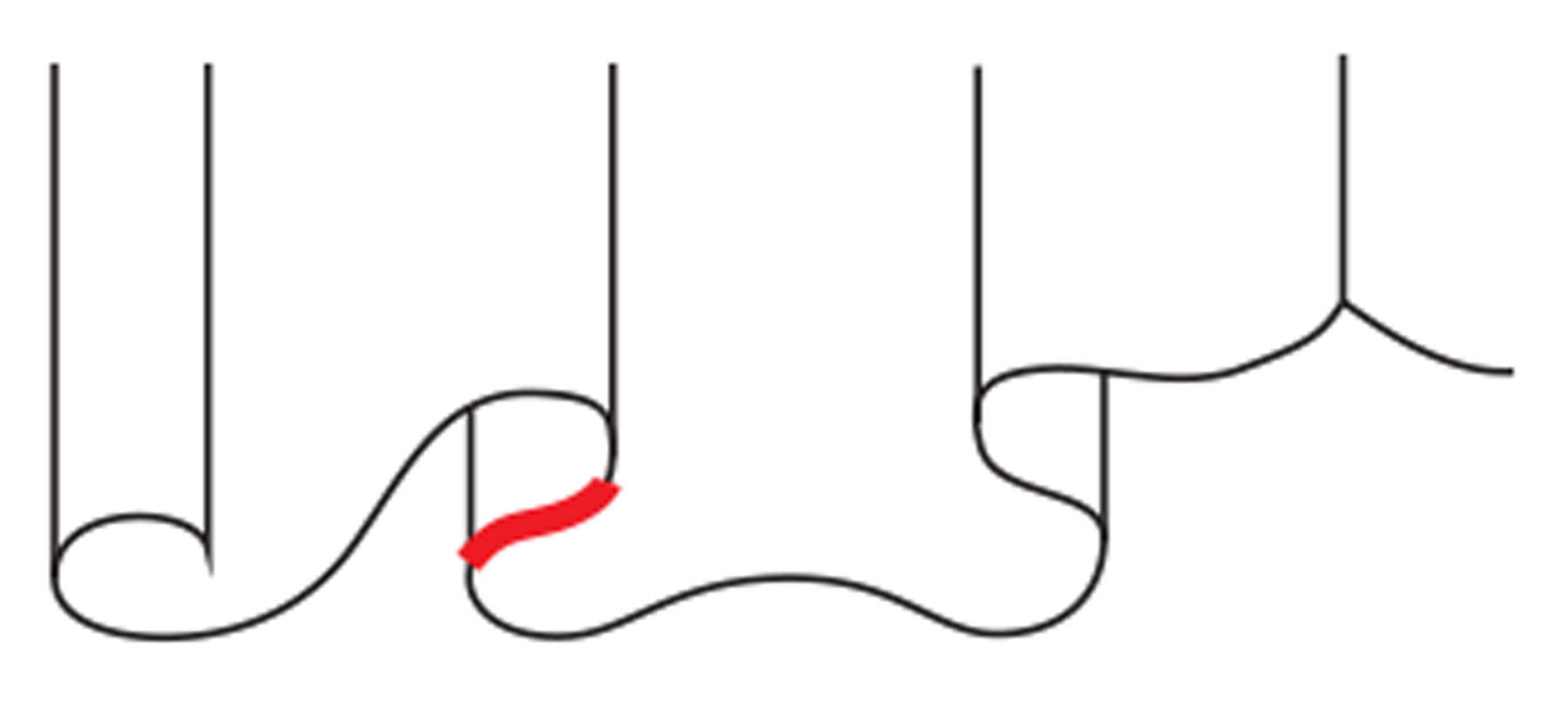
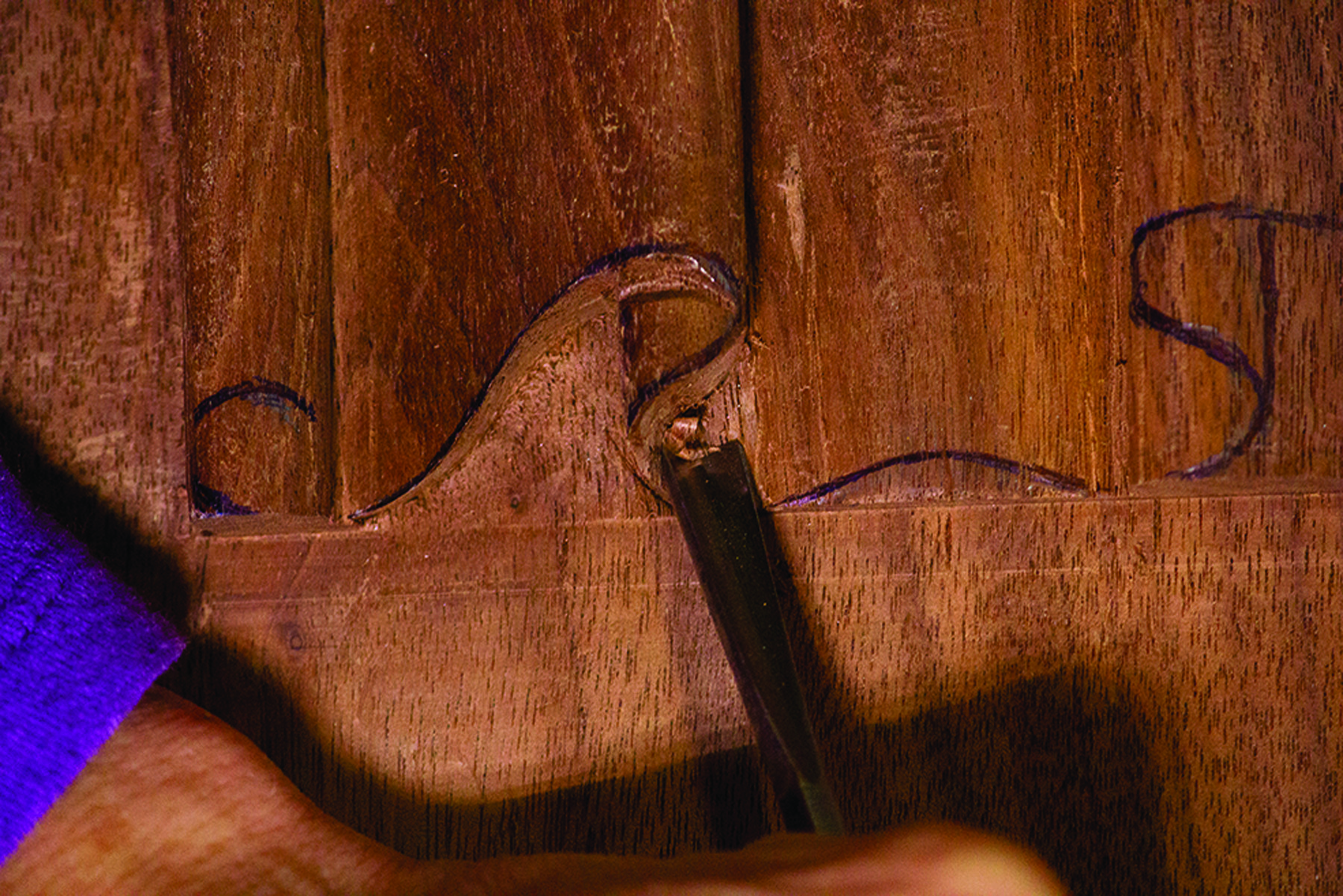
8 With a 6mm No. 8 gouge, hollow out this lower folded section. Make sure this flows smoothly into the next section of the cloth (that was shaped using a round moulding plane).
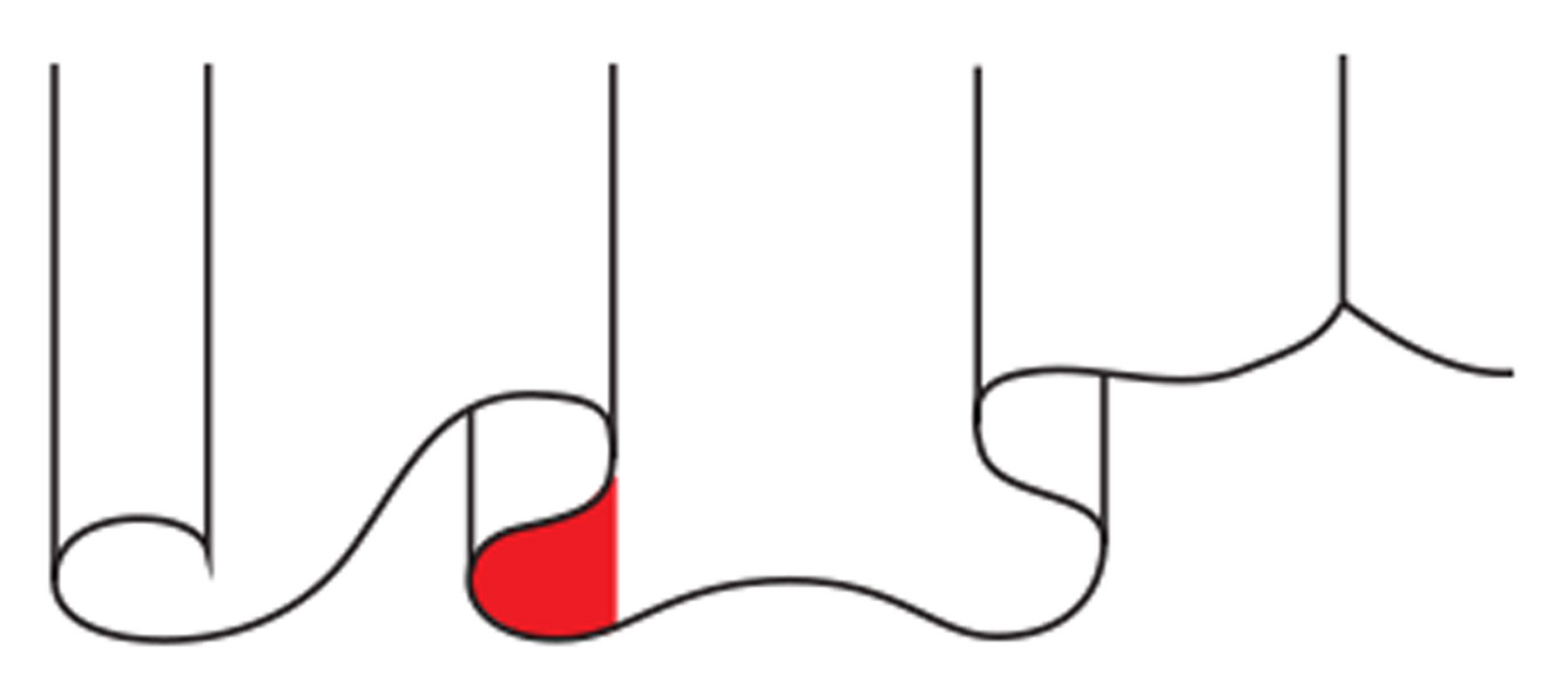
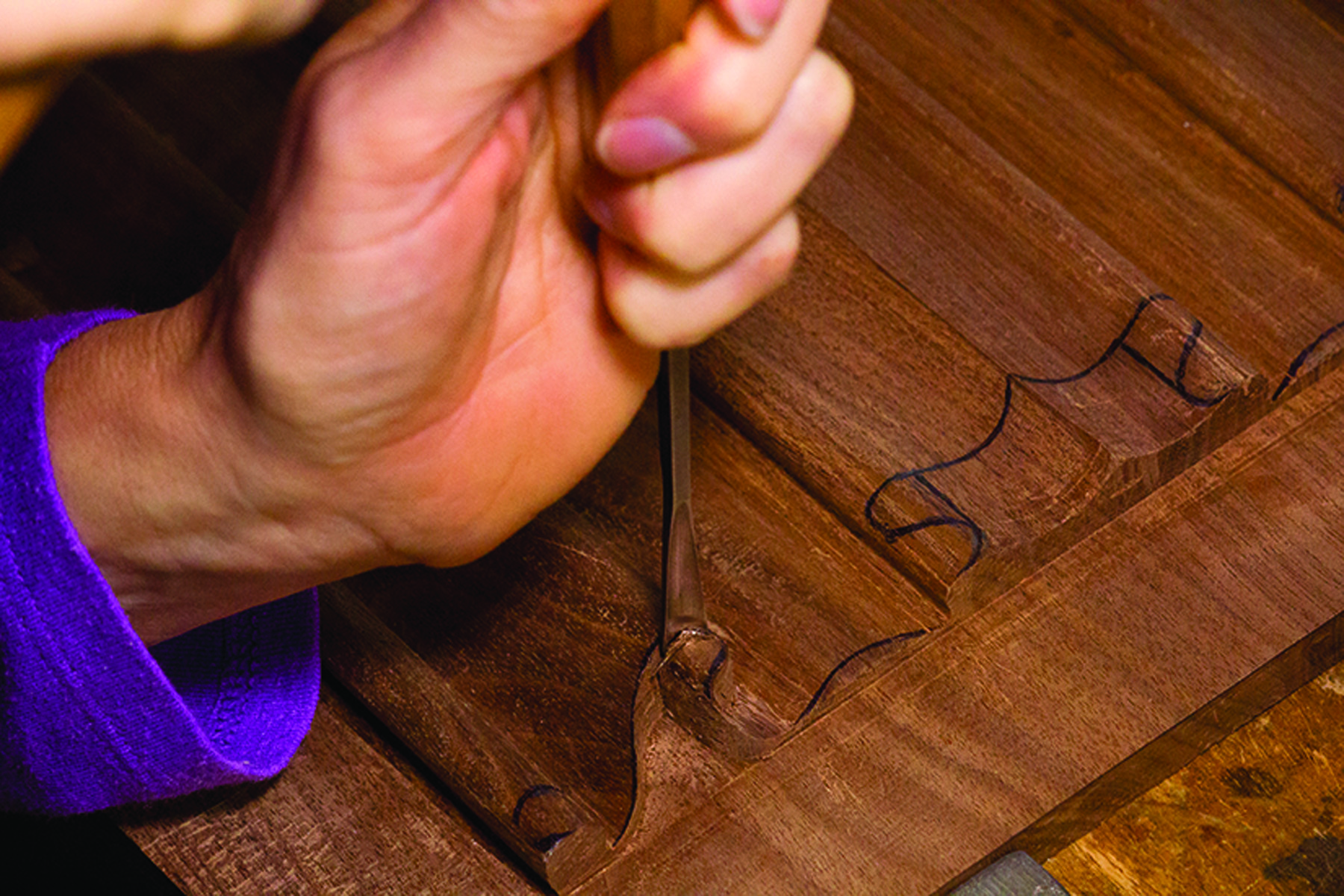
9. With a 12mm No. 4 gouge and a 6mm No. 8 gouge, define the top curve of the fold with a vertical stop-cut to the depth of the middle twist (3⁄16″). Make sure it does not go over the curved edge, or it will break the continuous linenfold edge.
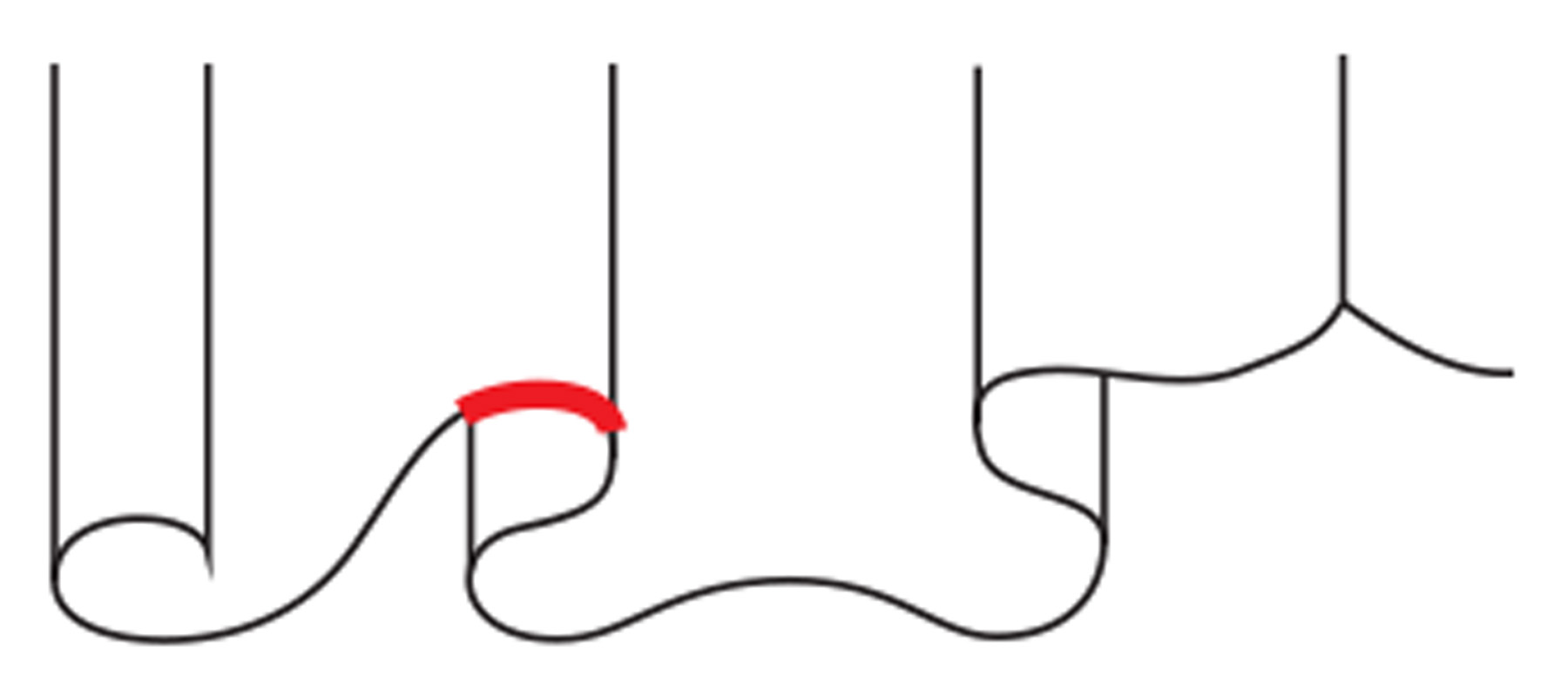
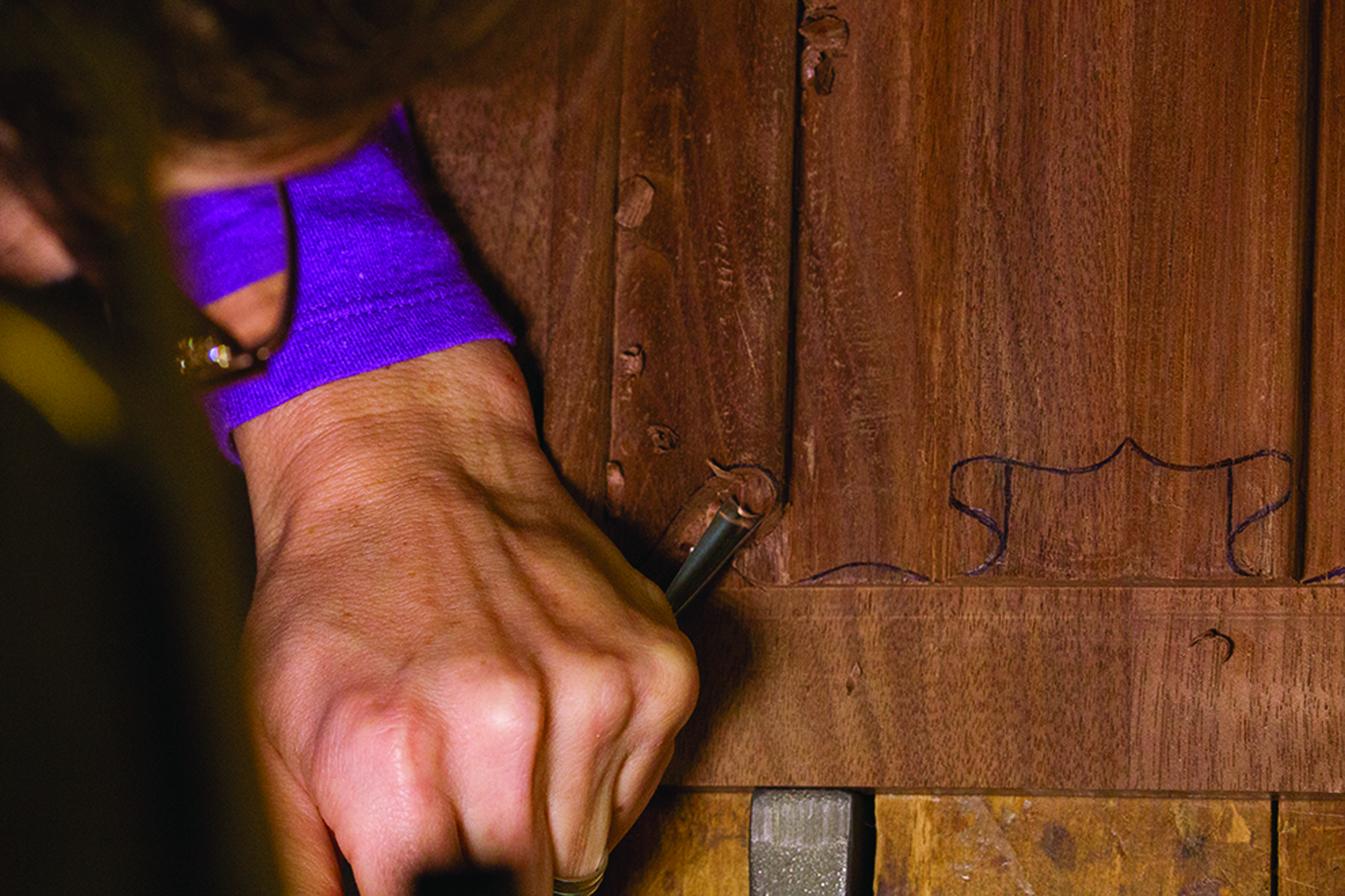
10. Using a 6mm No. 8 gouge, hollow out the upper section of the fold.
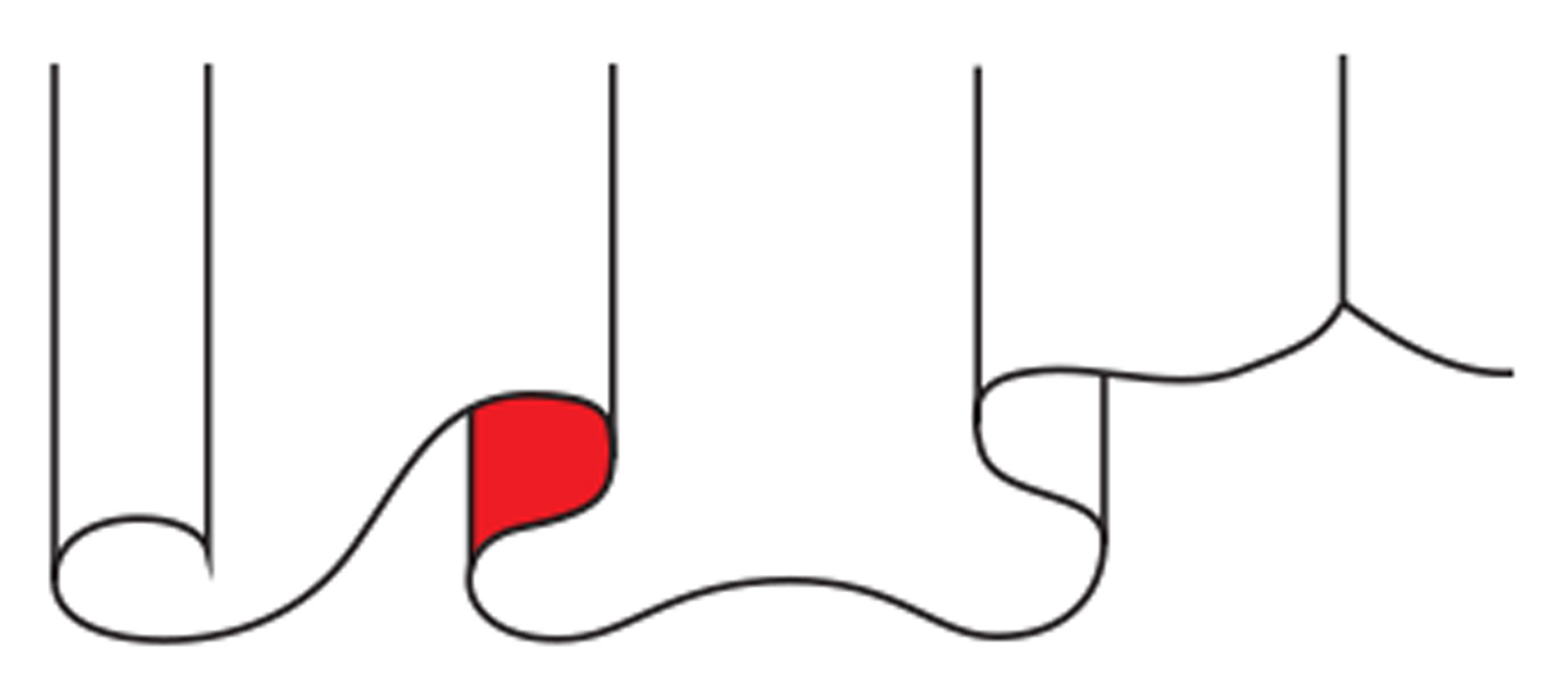
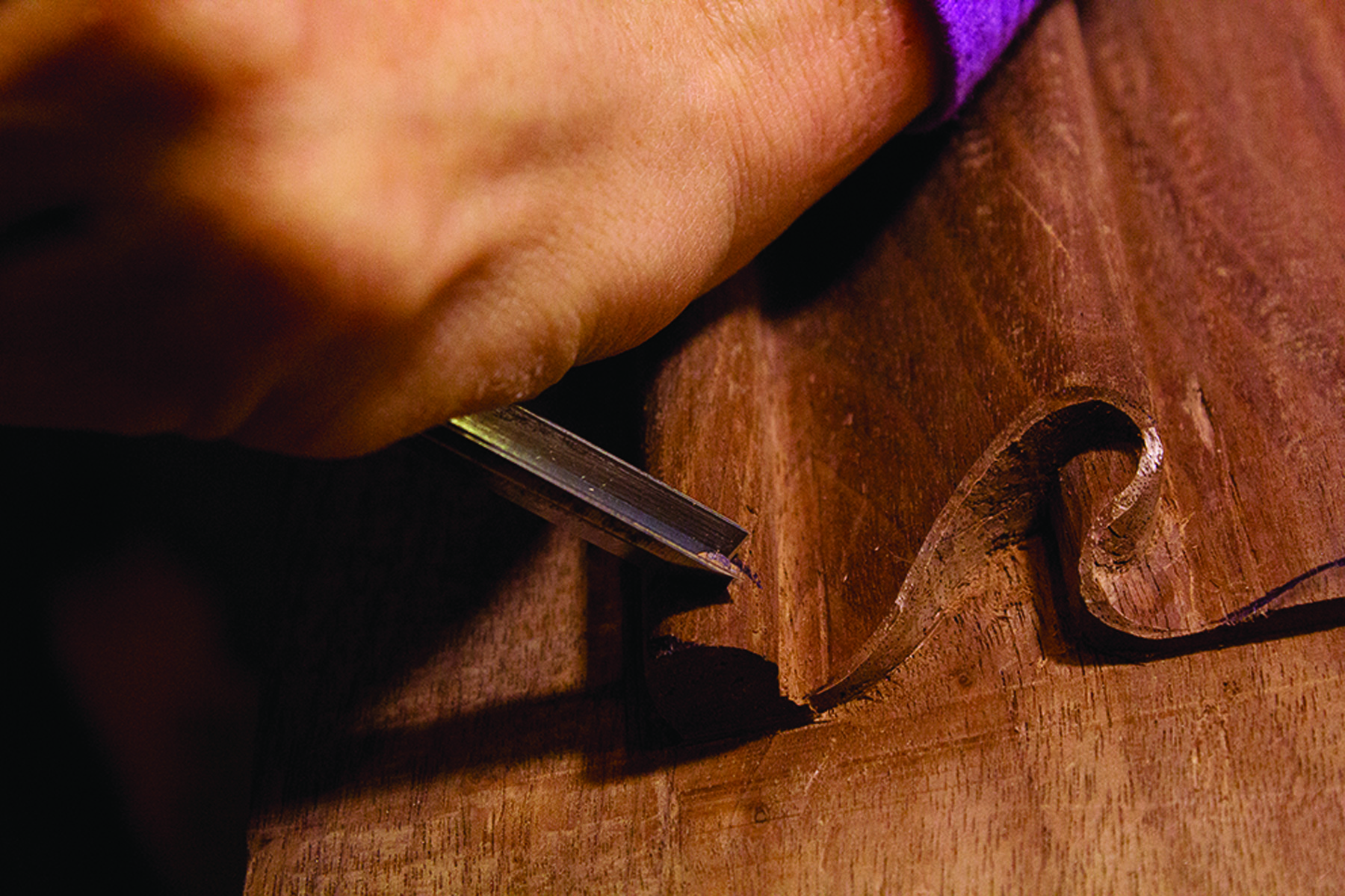
11. With a 6mm V-chisel, make a cut along the edge of the curl at the end of the cloth, leaving the line visible.
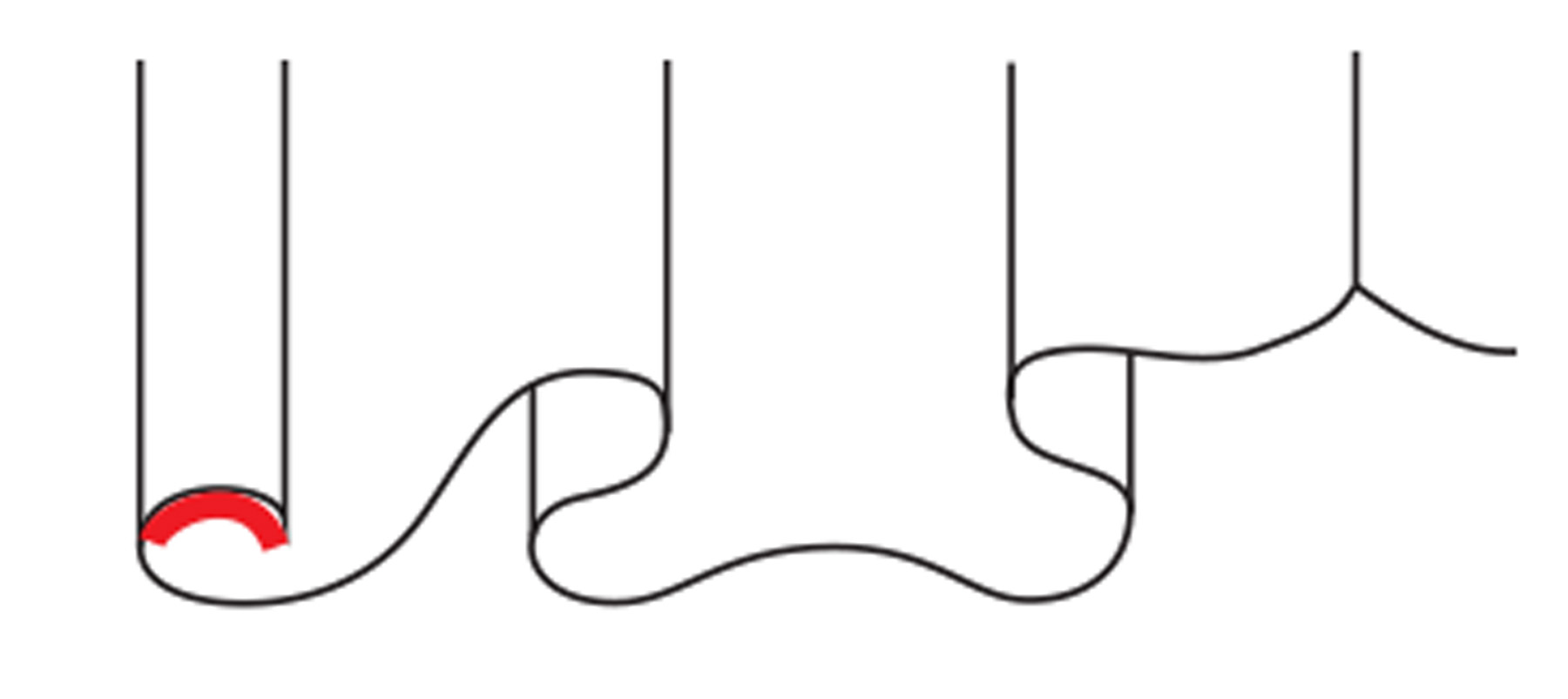
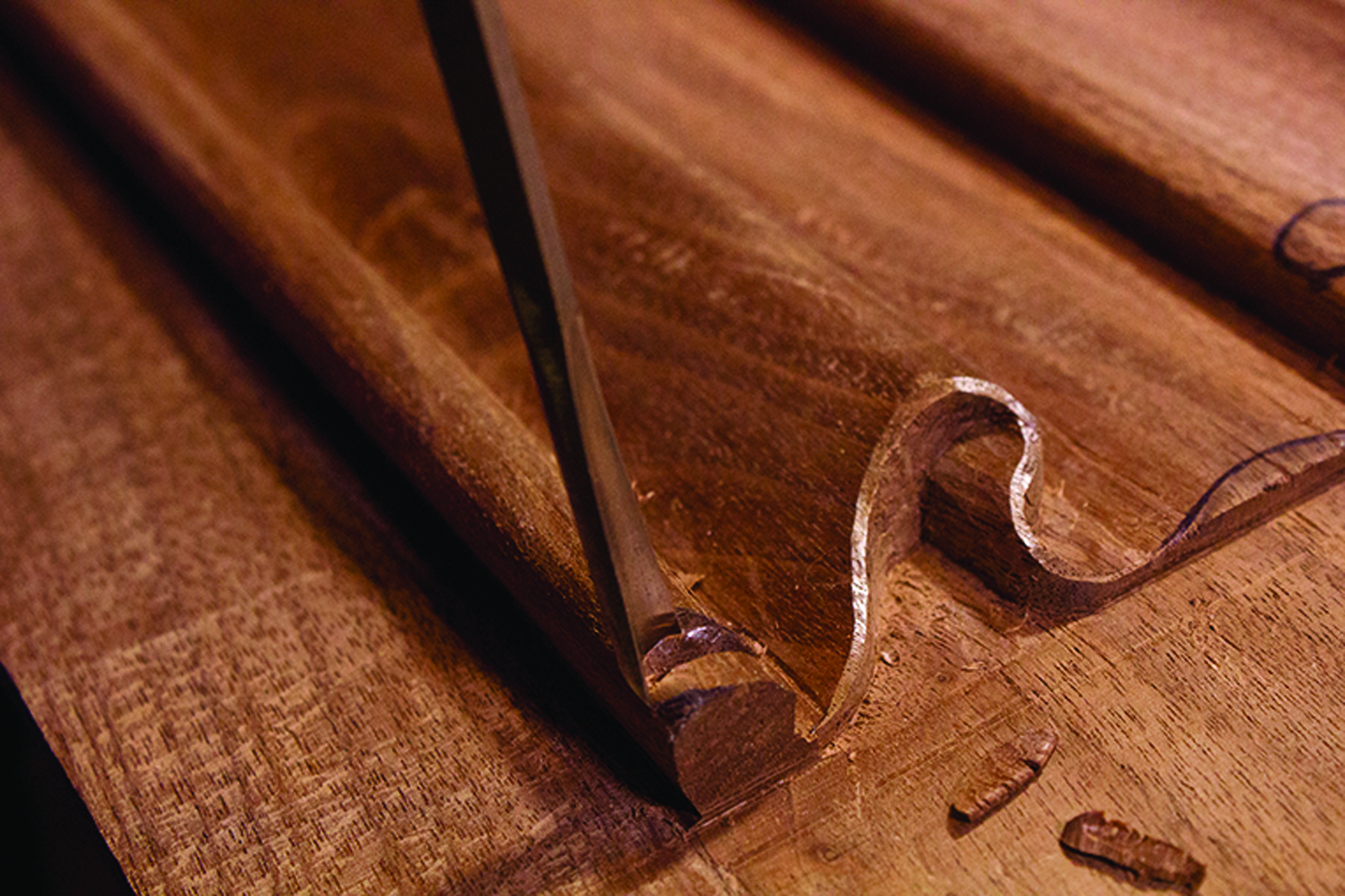
12. With a 6mm No. 8 gouge, make a vertical cut directly on this line to define the twisting edge. Again, leave this cut just short of the background and make sure it does not go beyond the curved edge to preserve the continuous linenfold edge.
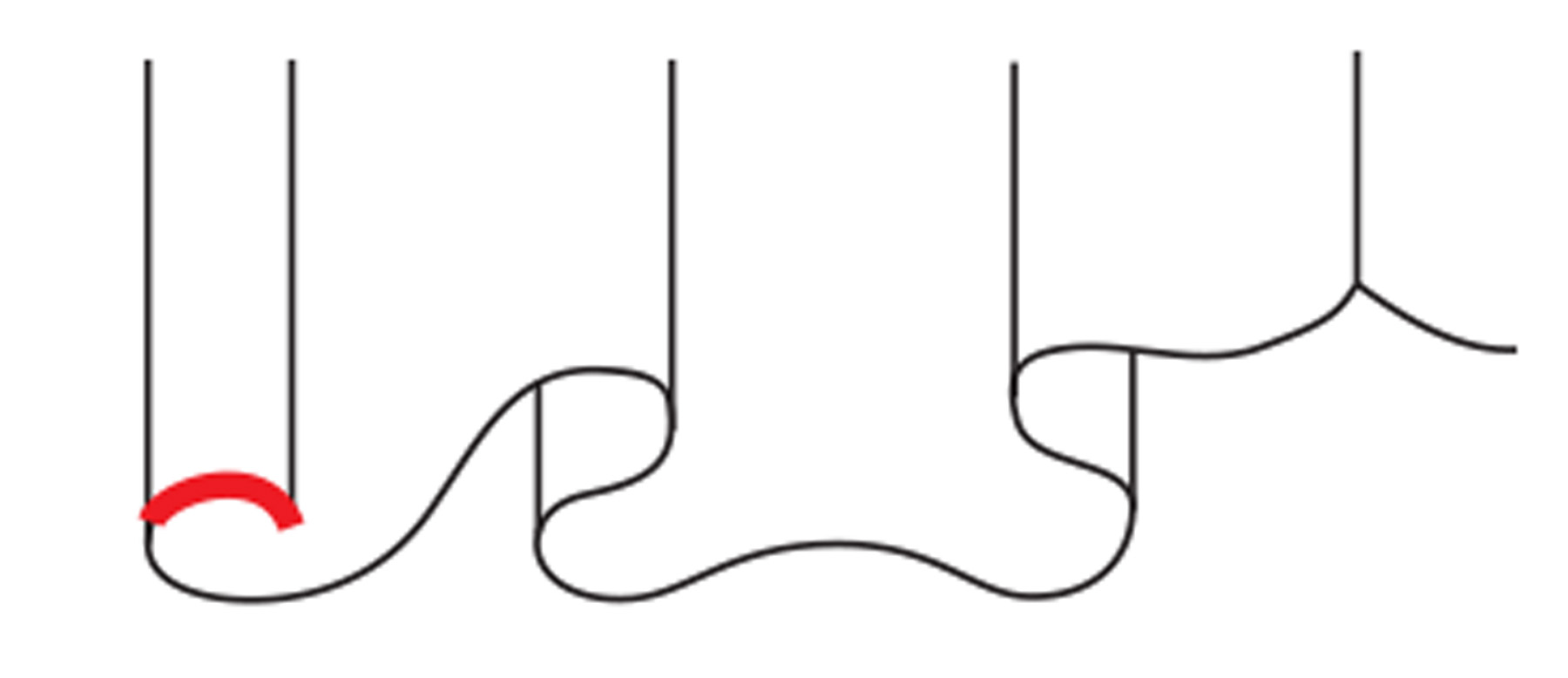
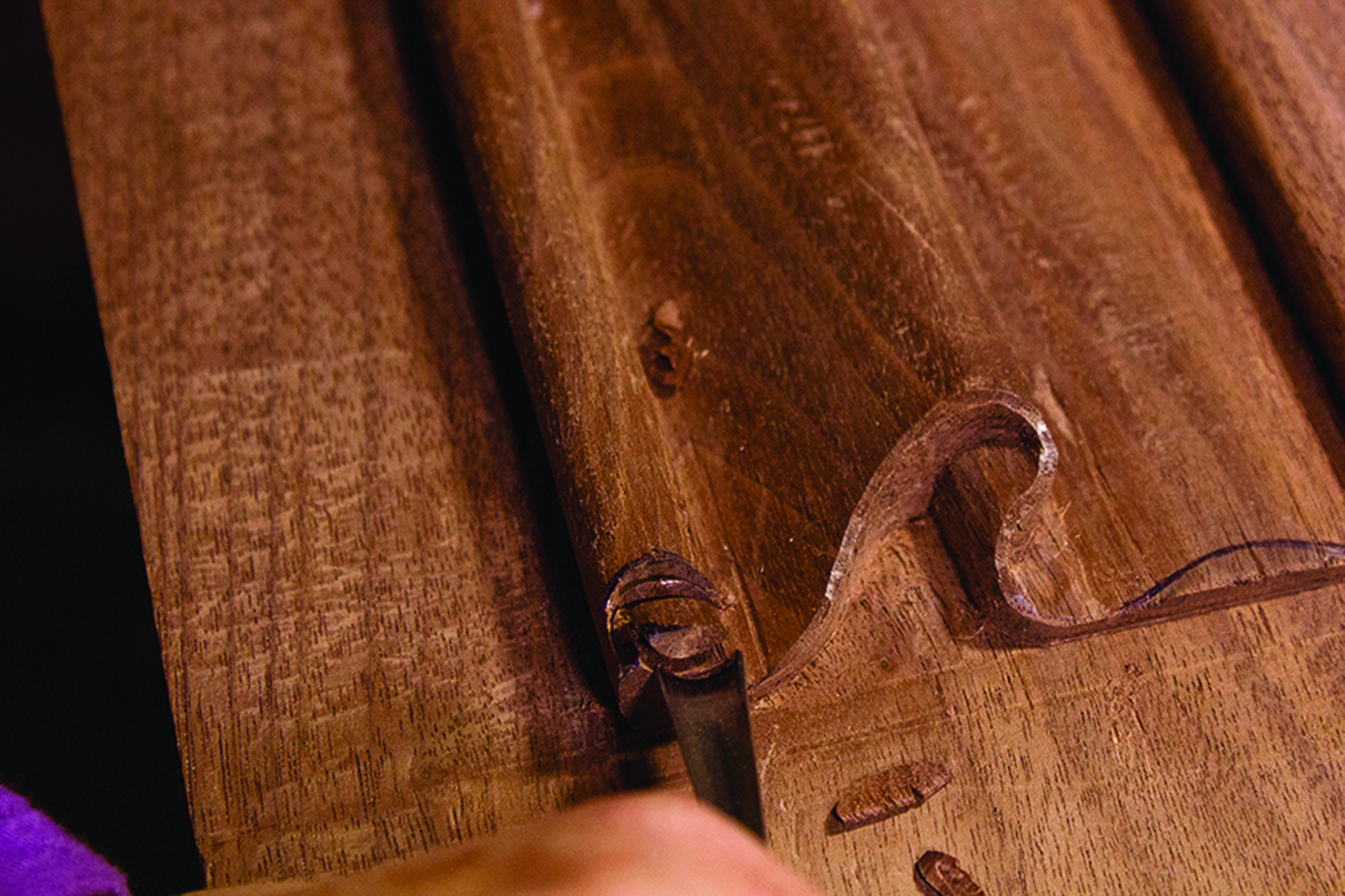
13. With a 6mm No. 8 gouge, carve out the section under this curved edge so it gently flows into the rest of the fold.
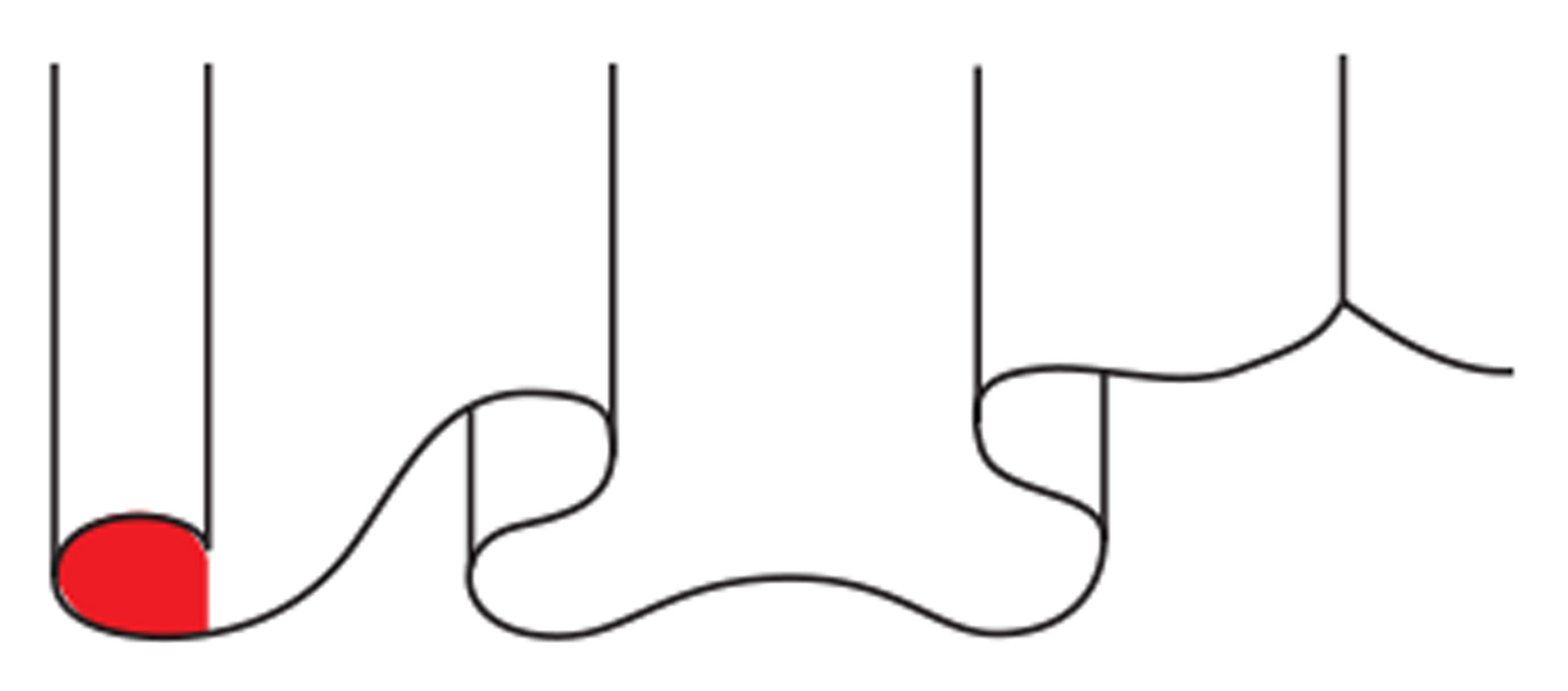
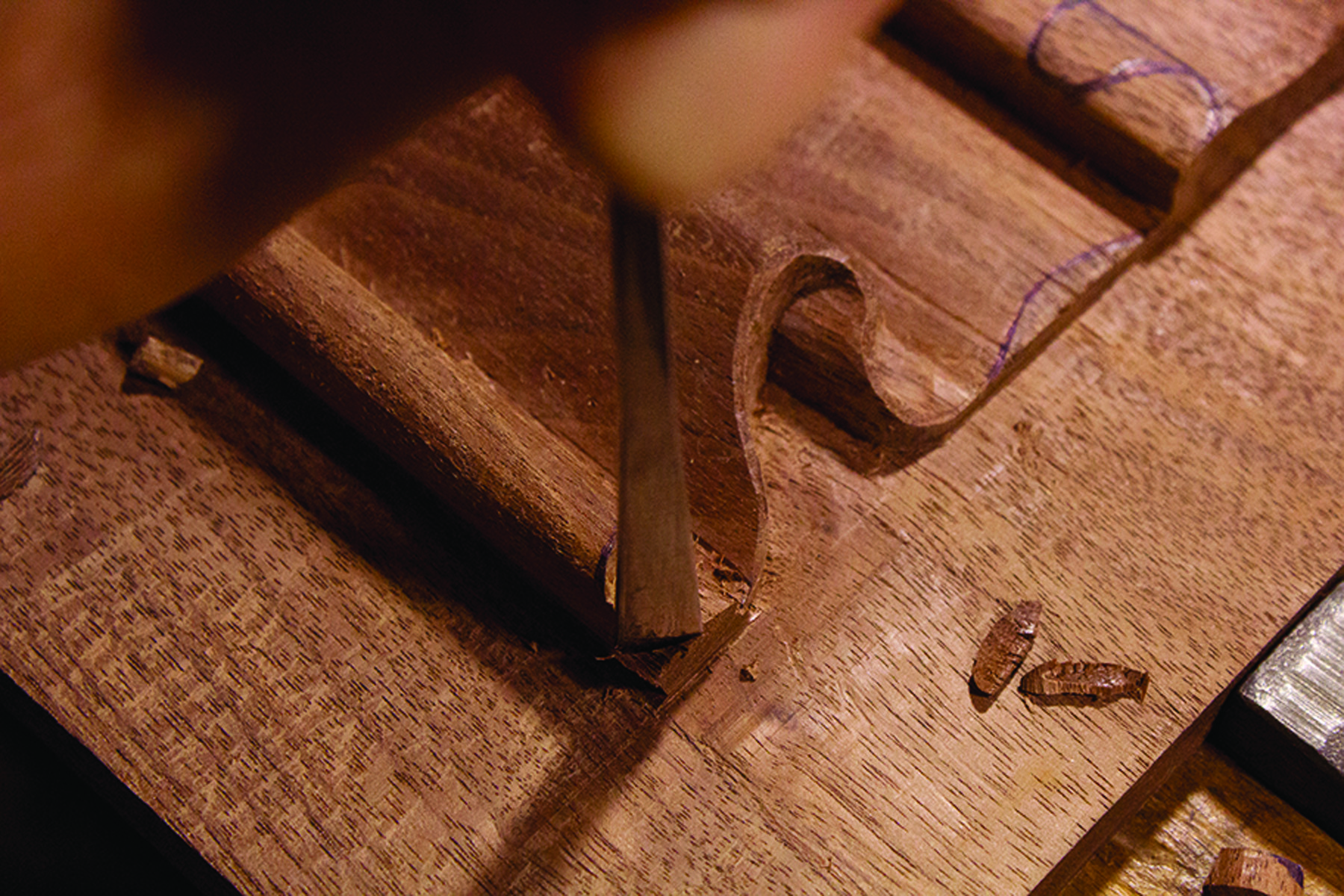
14. Use a 12mm No. 4 gouge to round off the outside corner with a vertical cut down to the background. Clean up the background surface.
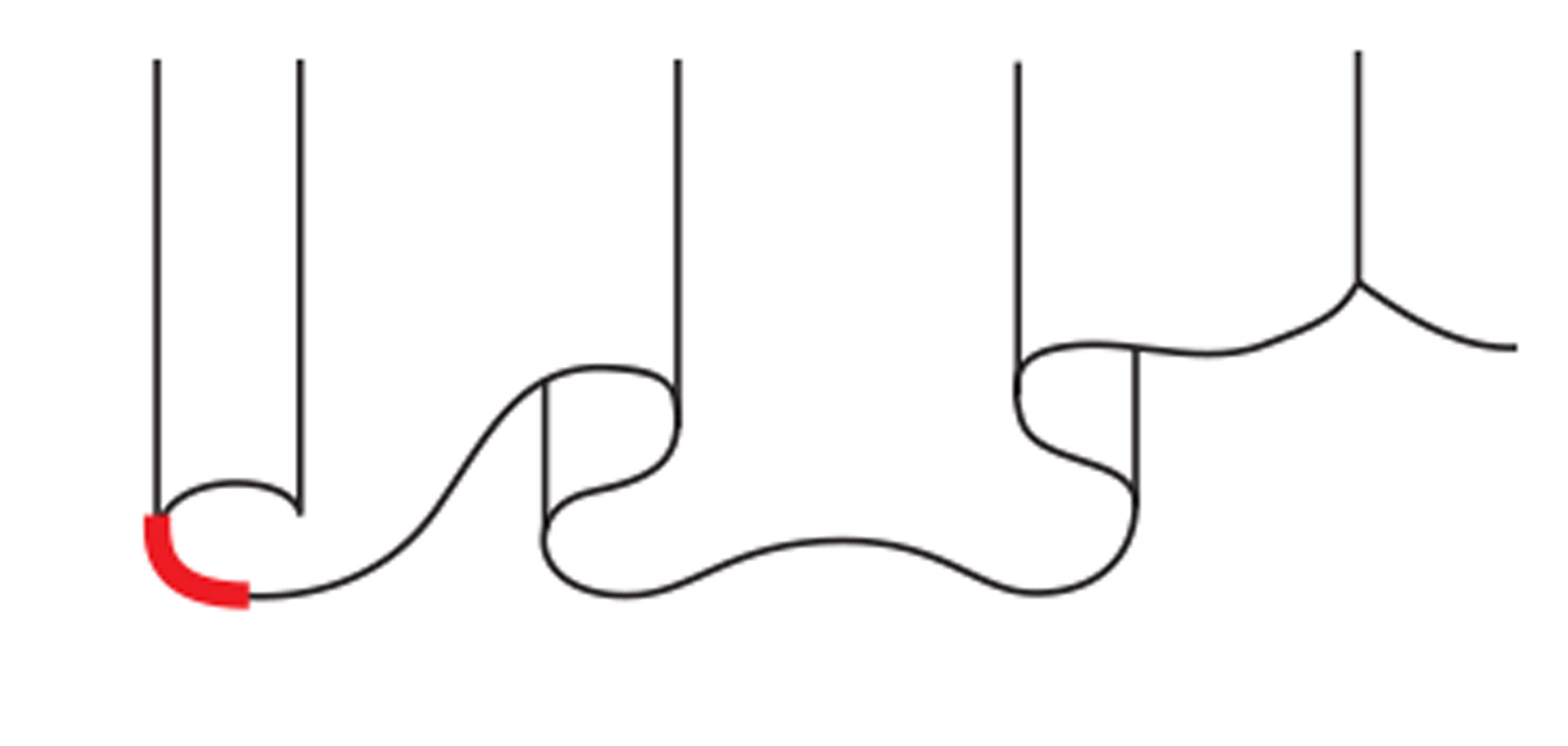
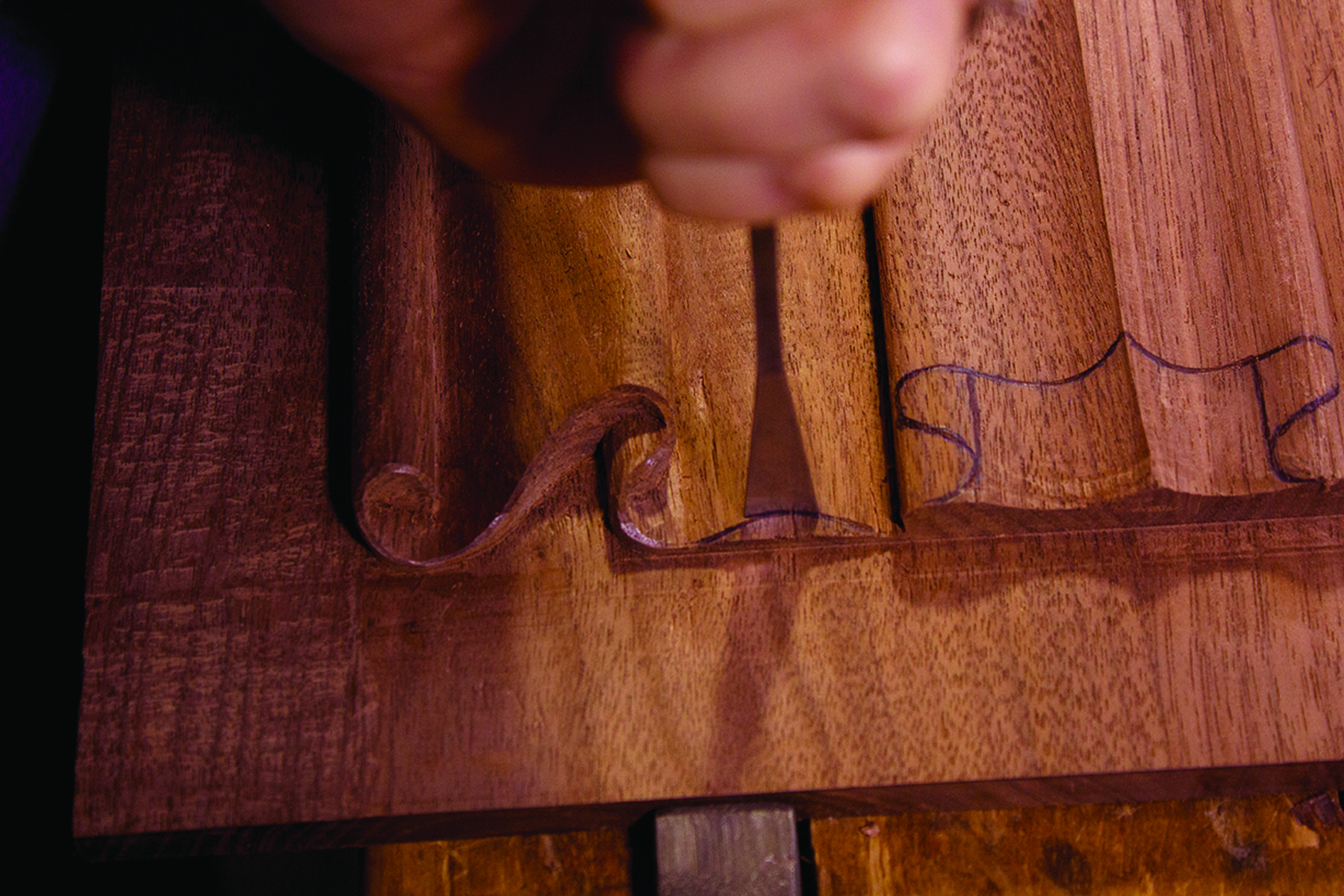
15. With a 12mm No. 4 gouge, make a vertical cut on this line all the way to the background. Be careful not to let any of this edge become a straight line.
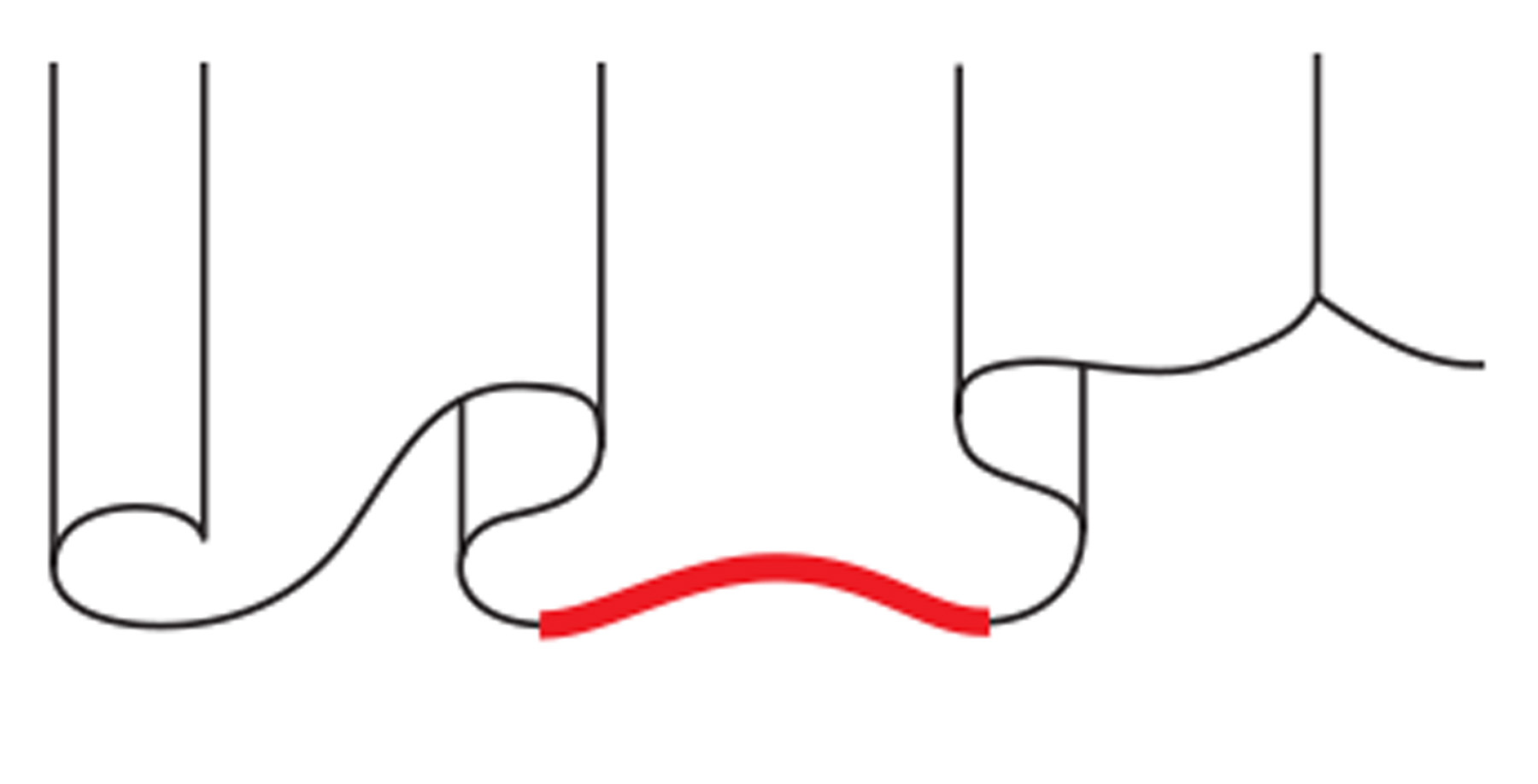
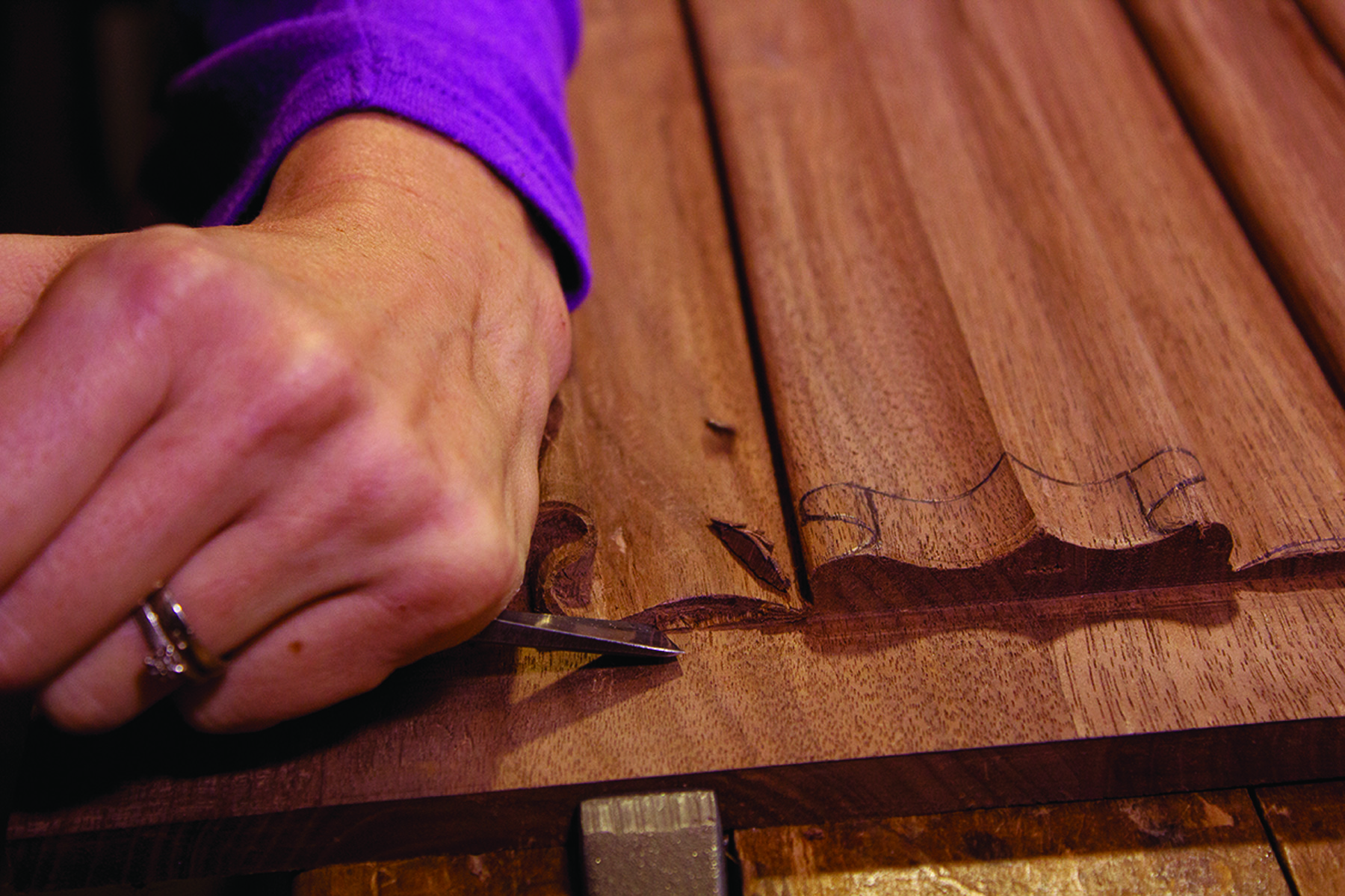
16. With a 14mm No. 3 gouge, lower this section to the background.
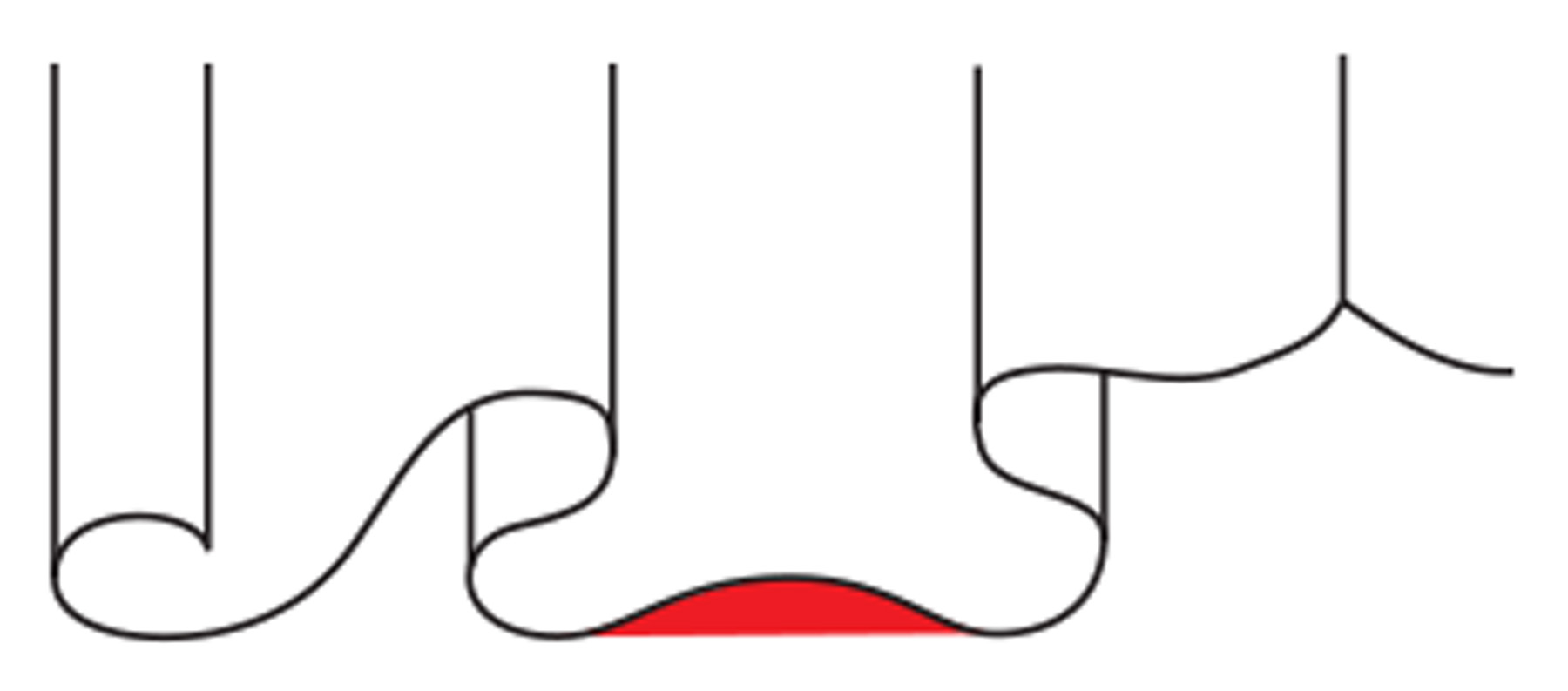
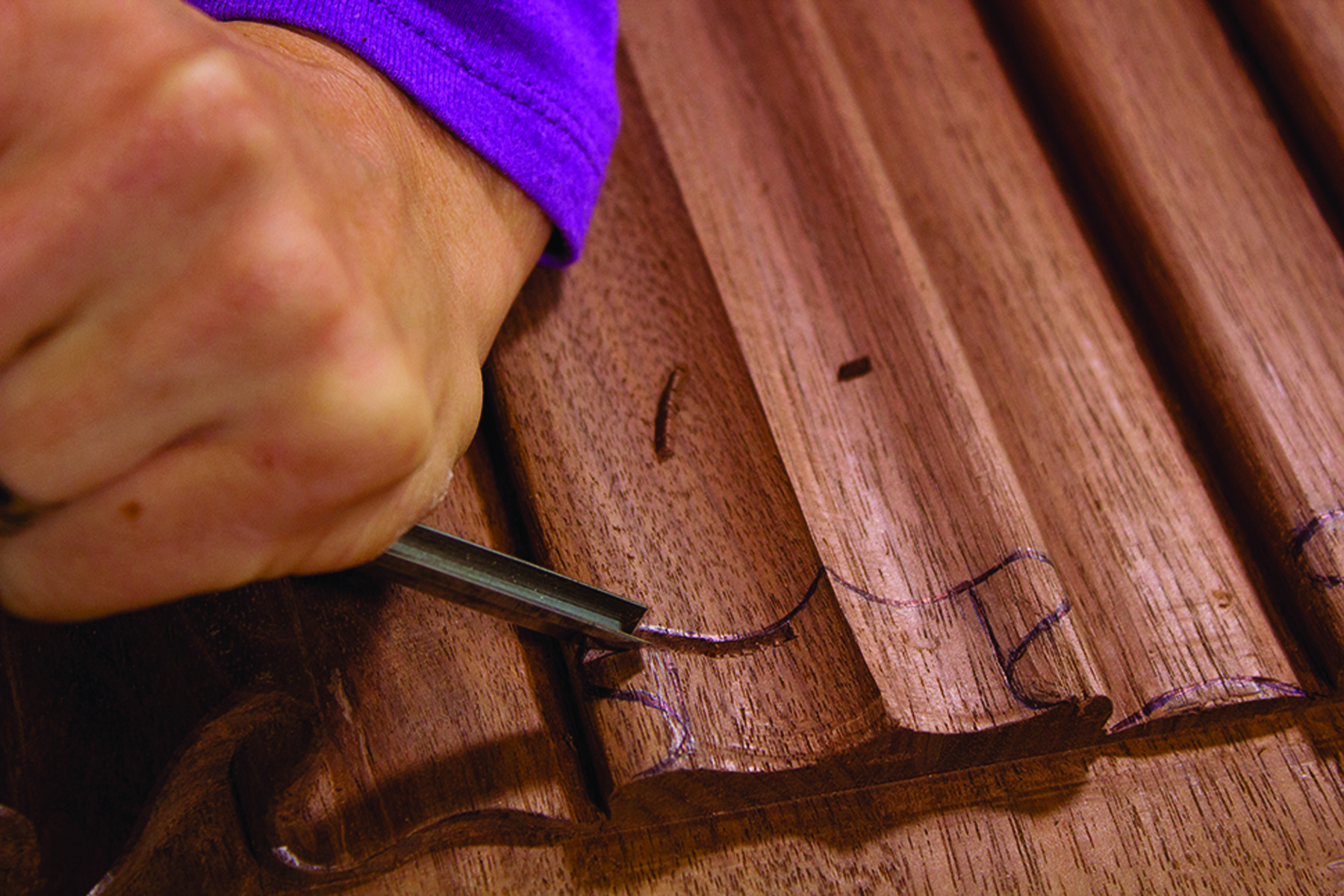
17. Use a 6mm V-chisel to carve along the edge of the cloth, leaving the line visible. Make this cut as deep as the chisel will cleanly cut; this is to remove the bulk of the wood to prepare for the vertical stop-cut as shown in step 19 (below).
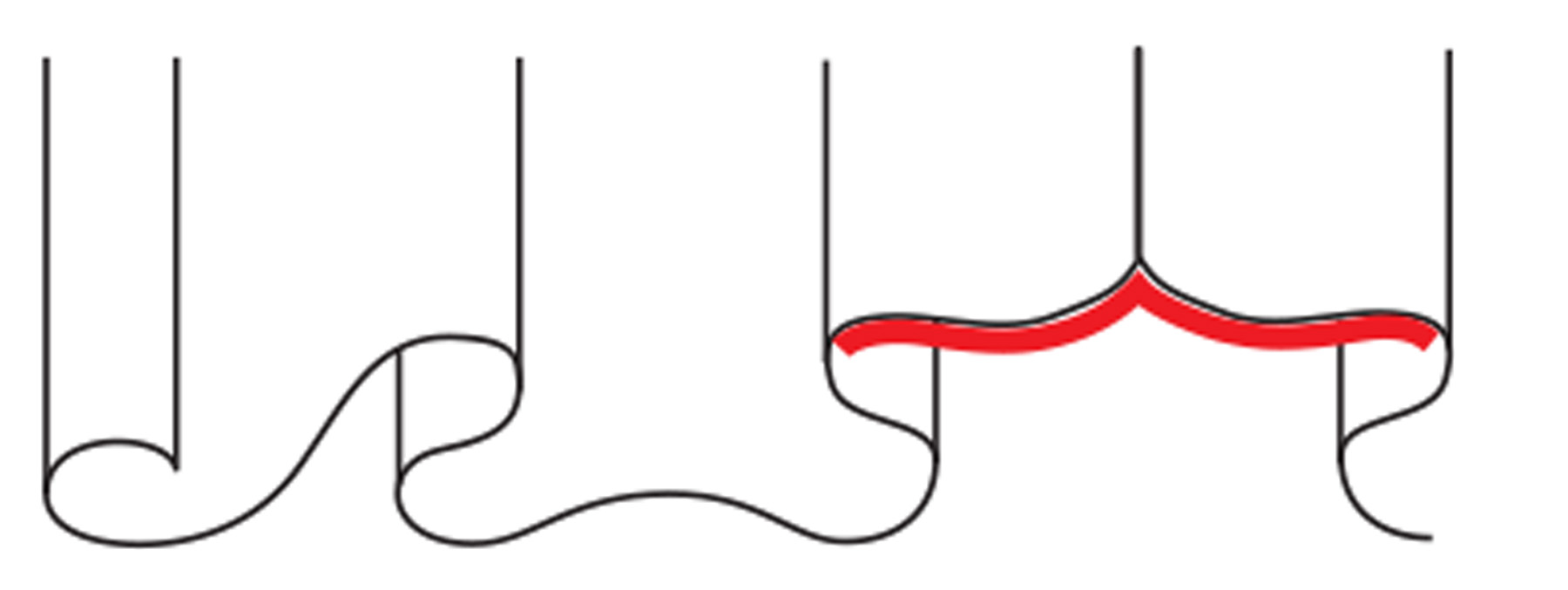
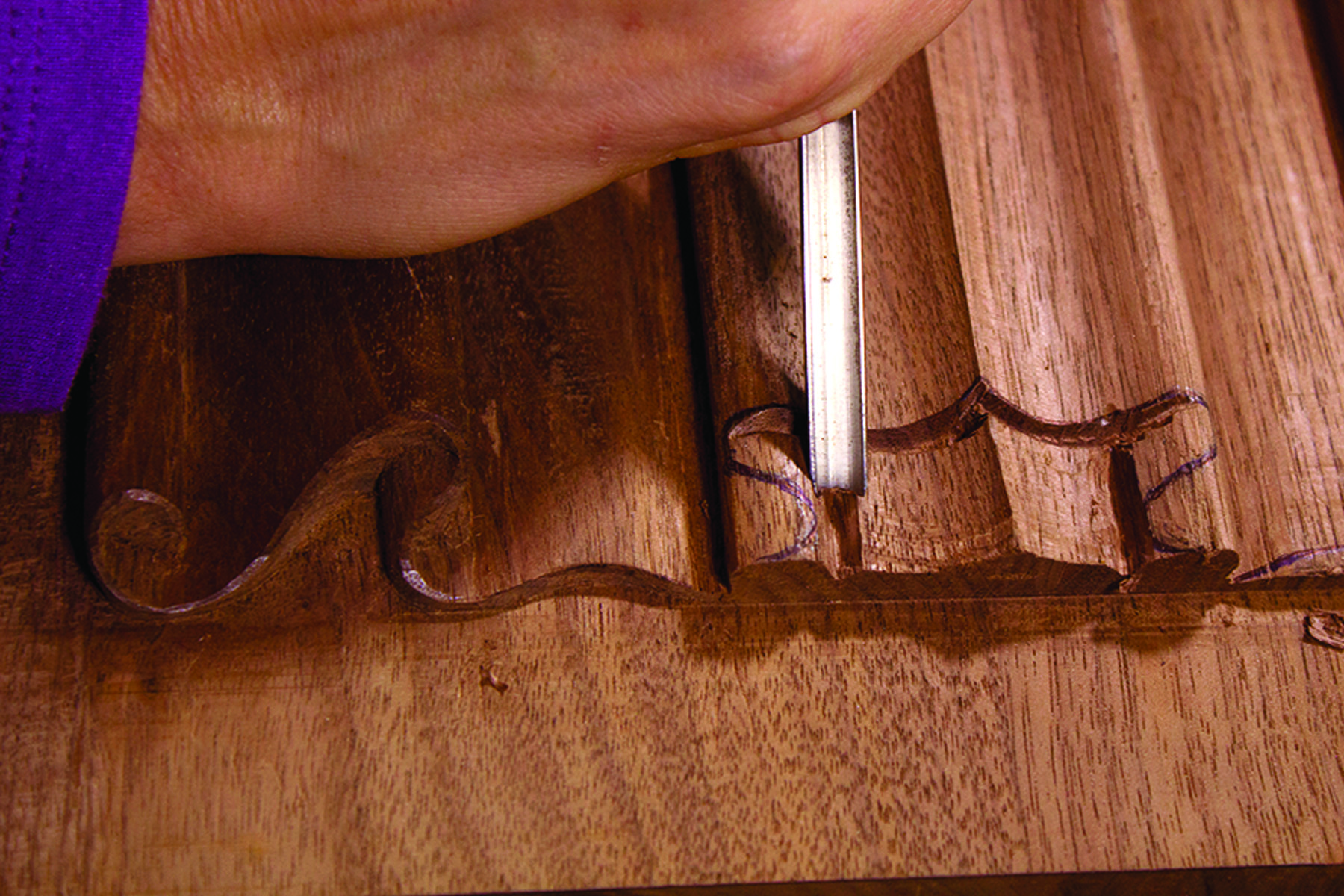
18. With a 6mm V-chisel, carve along these straight edges of the fold.
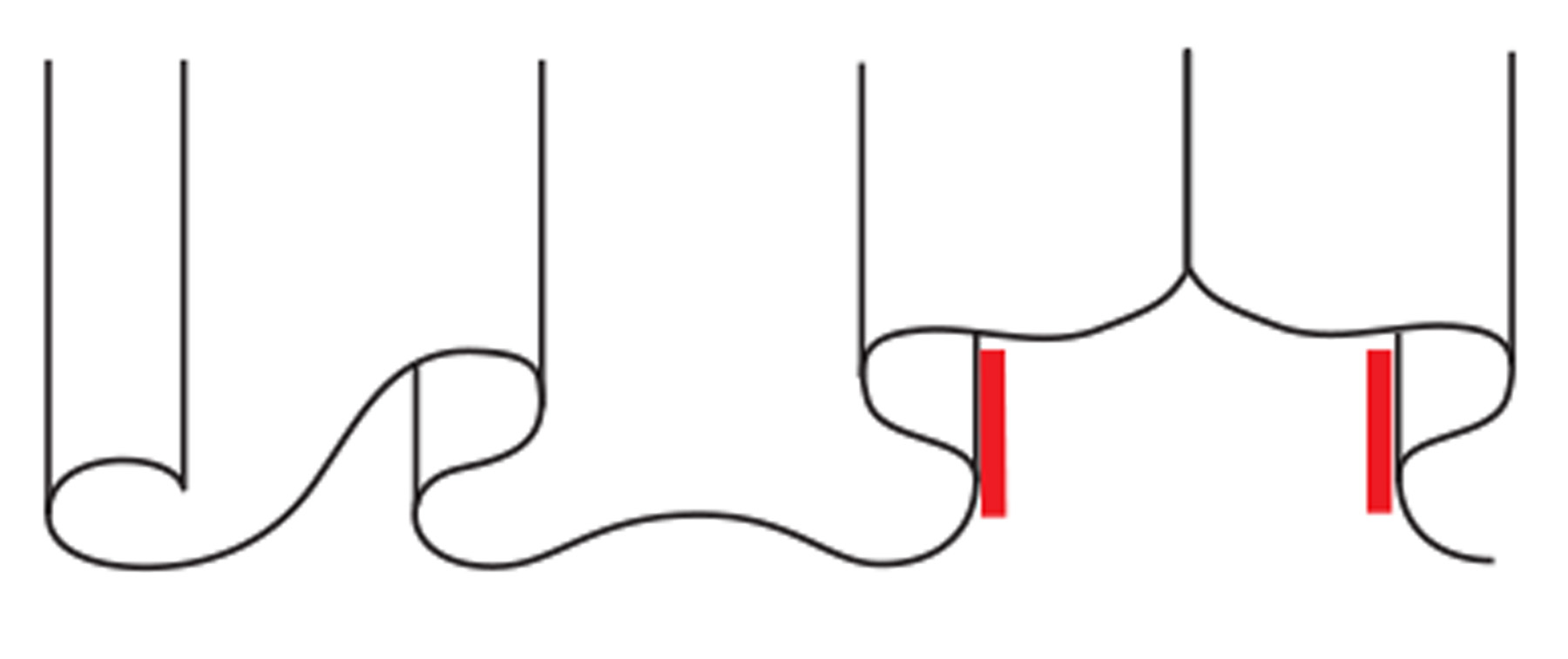
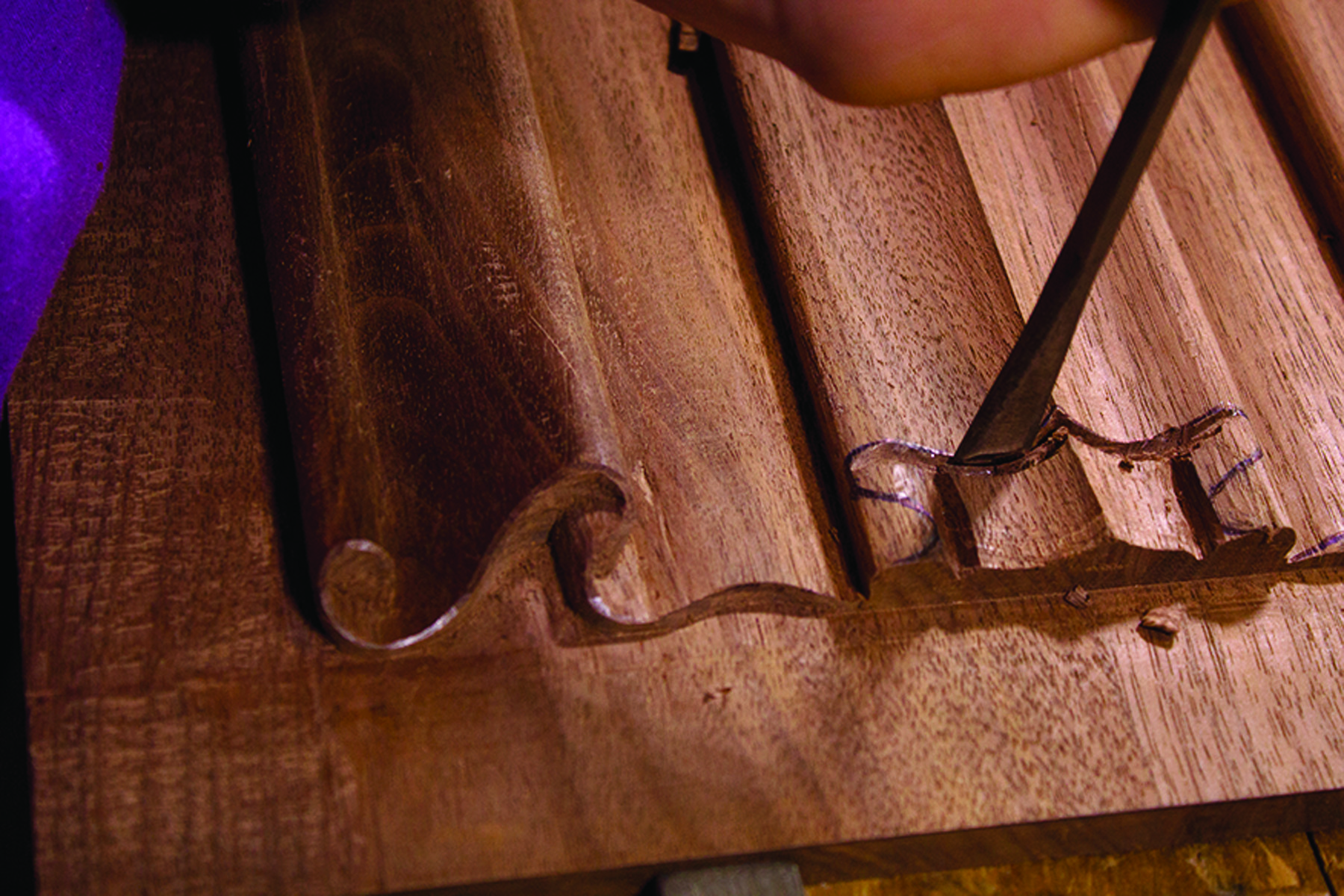
19. Pare with a 12mm No. 4 gouge and 6mm No. 8 gouge held vertically to define this edge of the cloth.
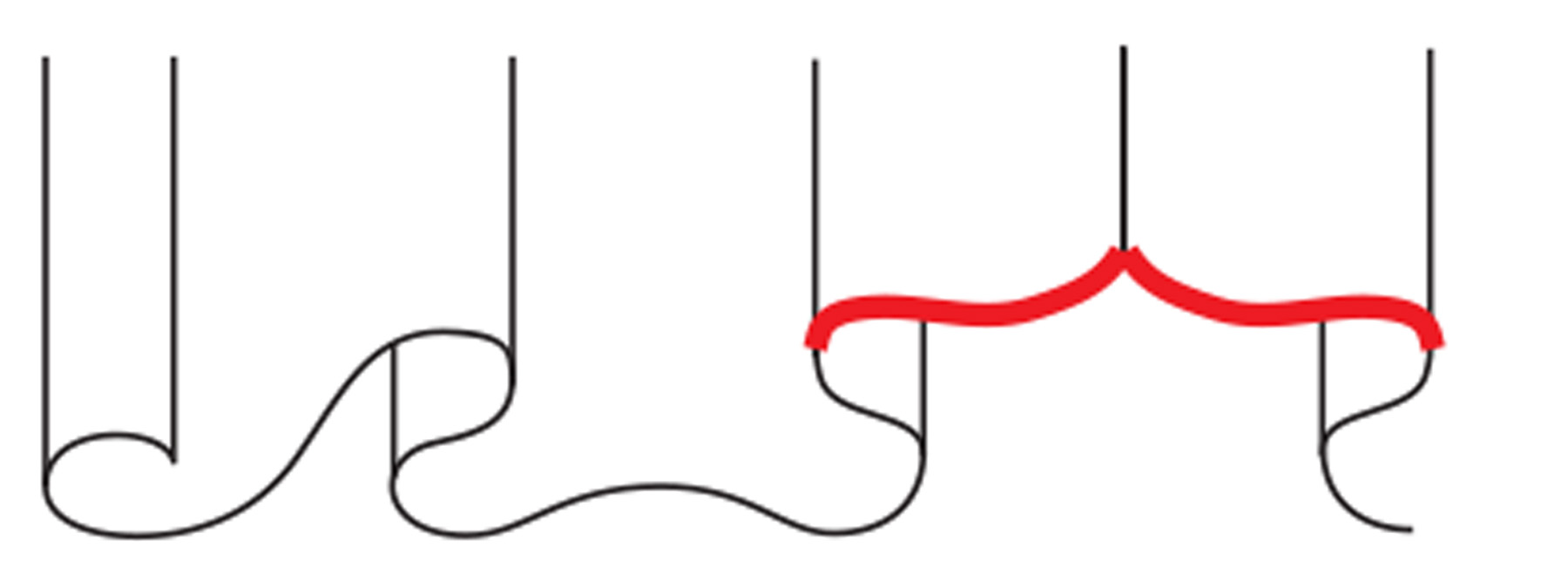
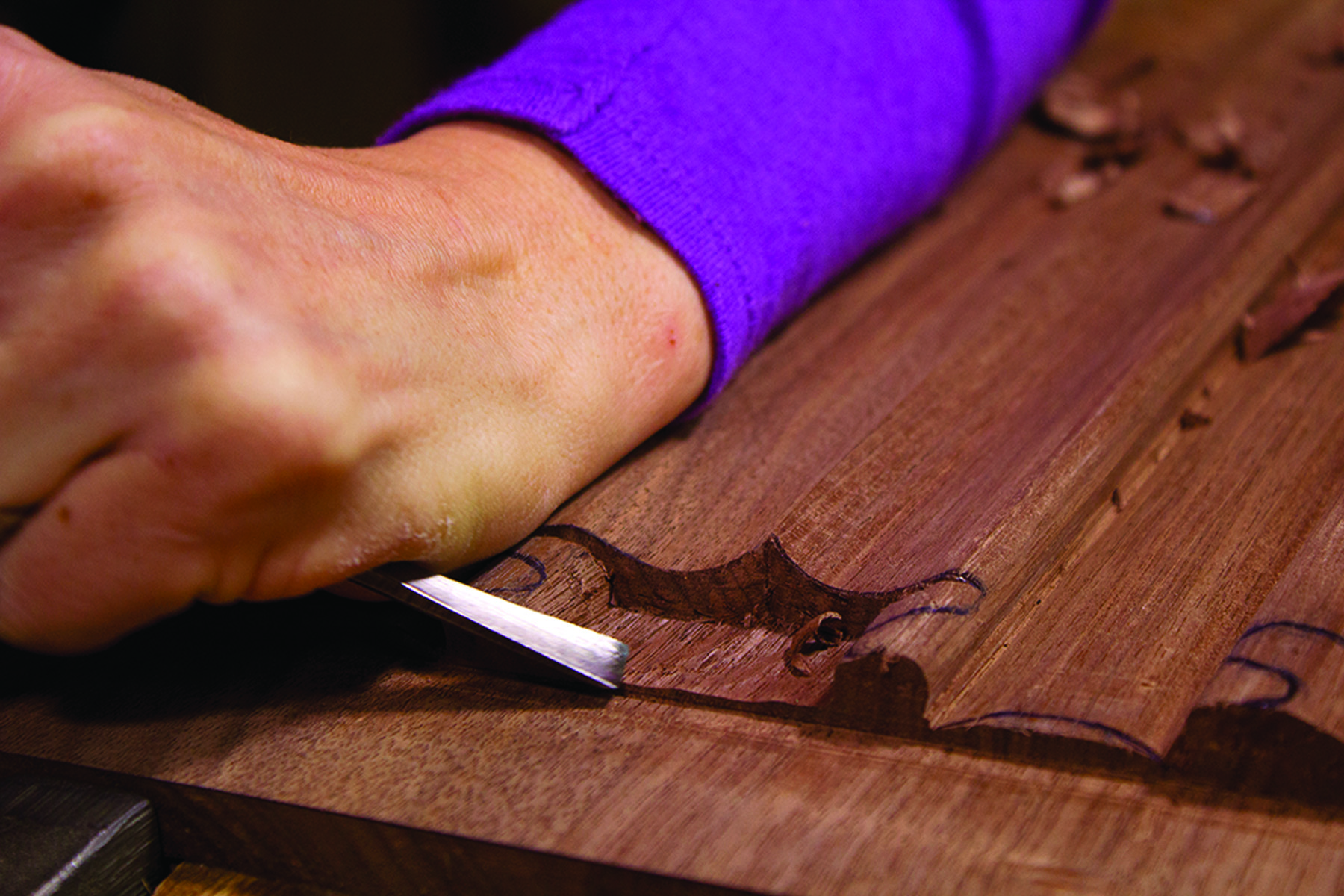
20. With a 14mm No. 3 gouge, lower this section to the background.
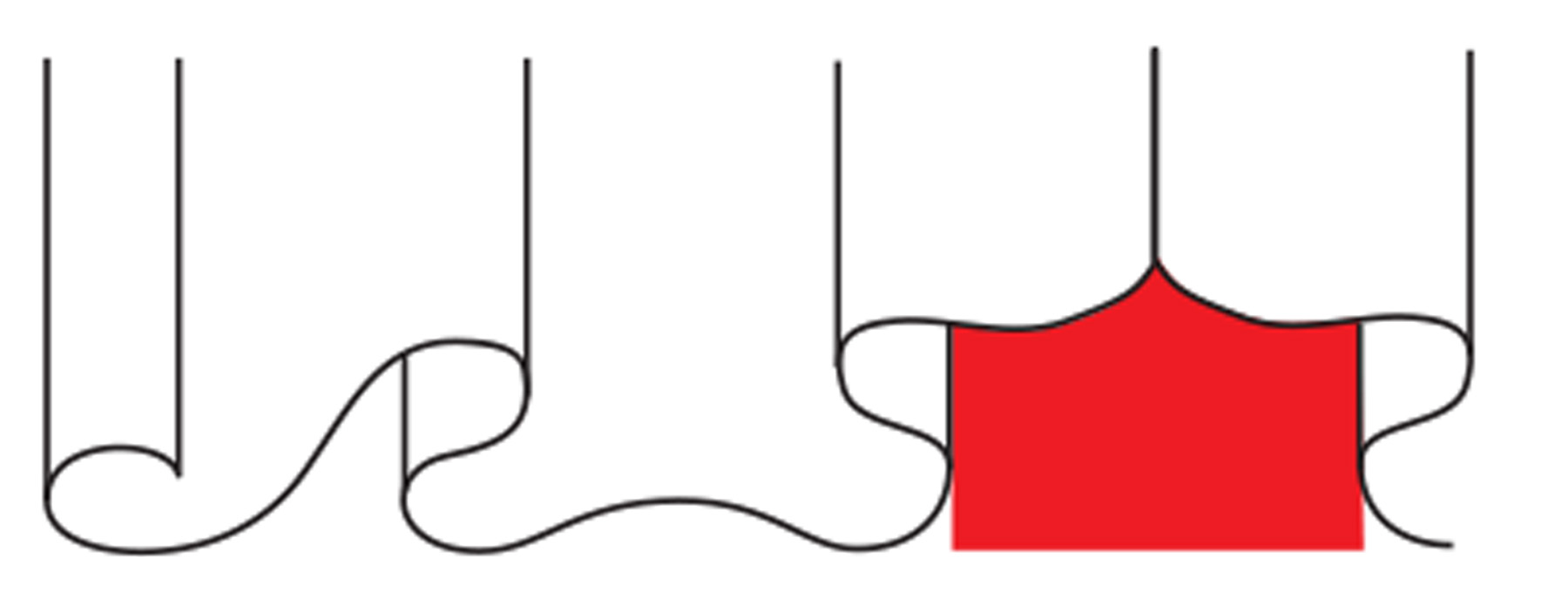
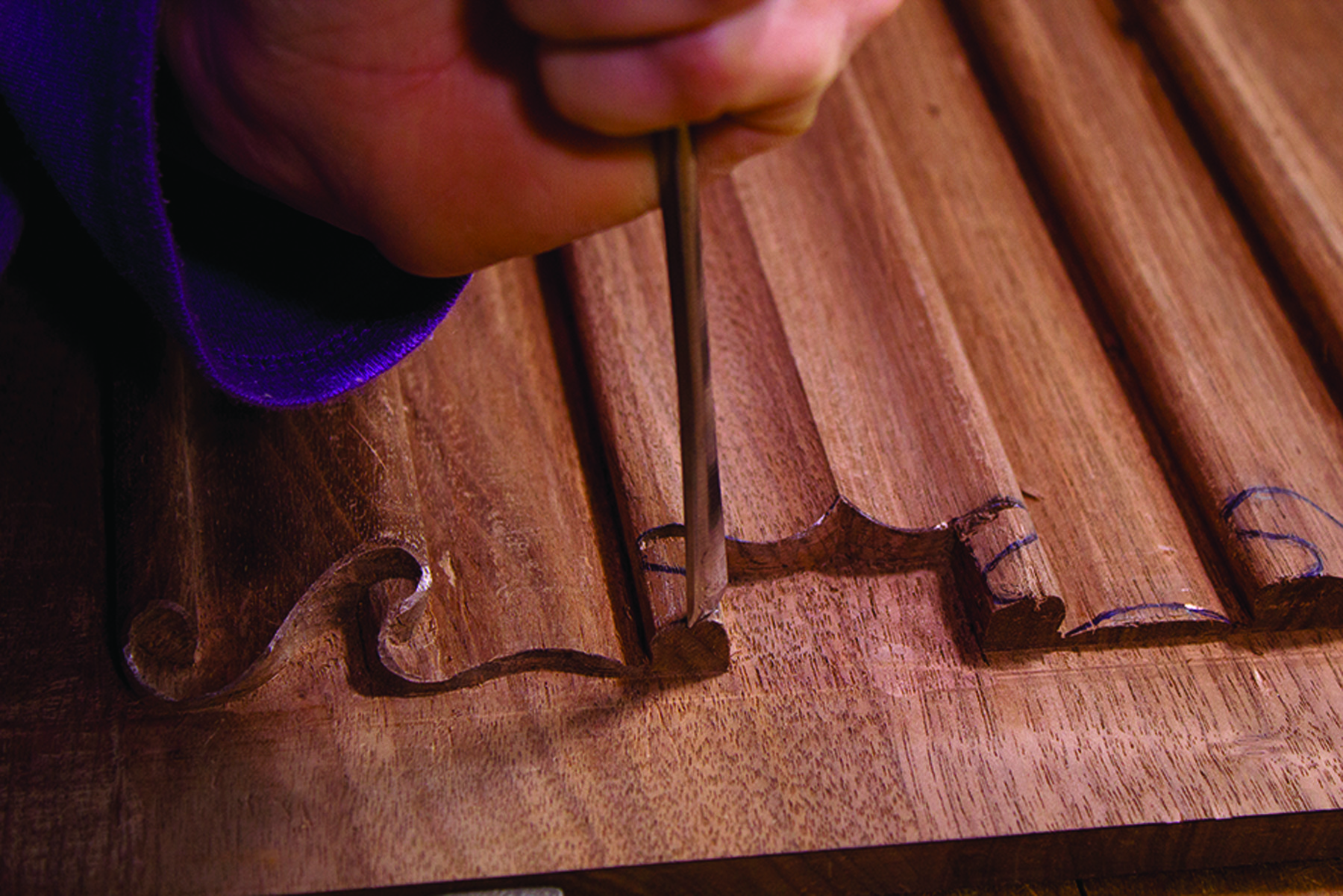
21. With a 12mm No. 4 gouge, round the two corners with a vertical cut to the background, then clean up the background surface.
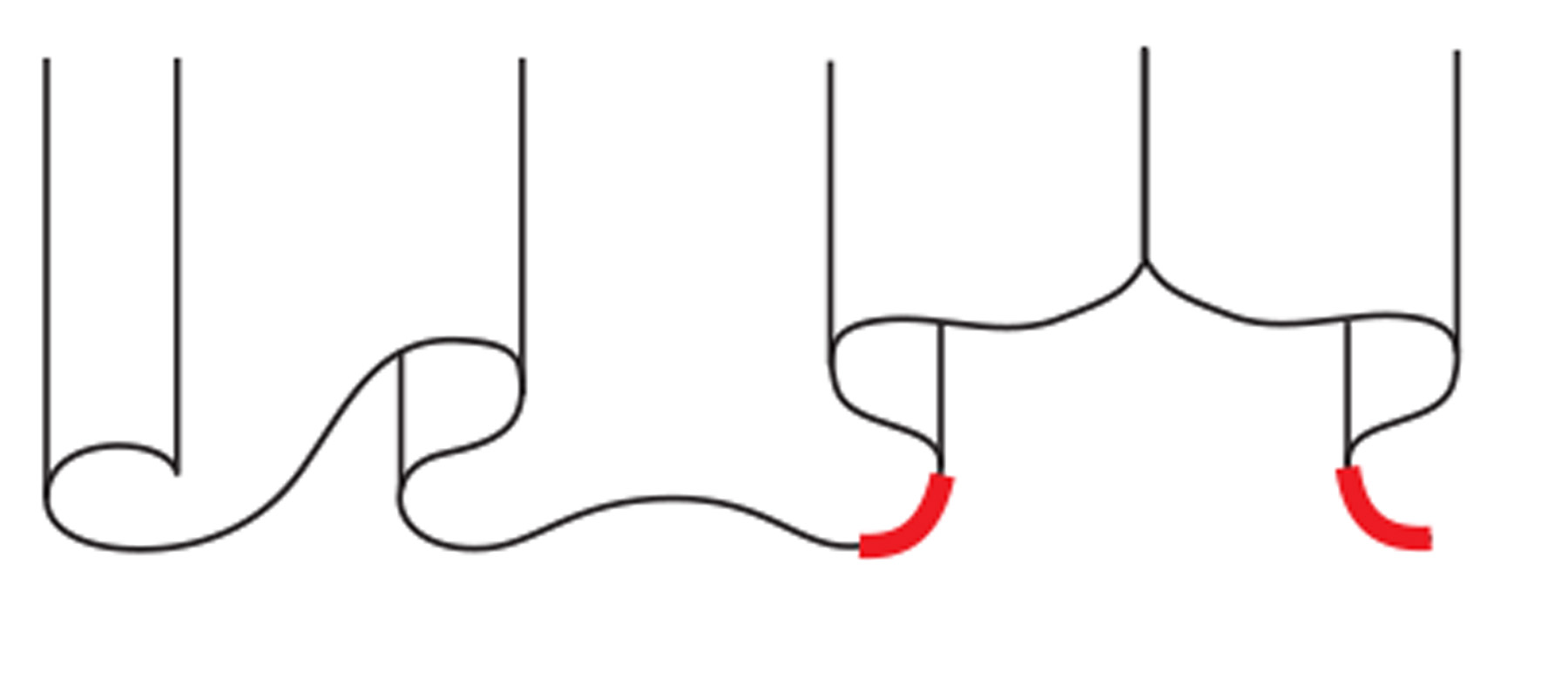
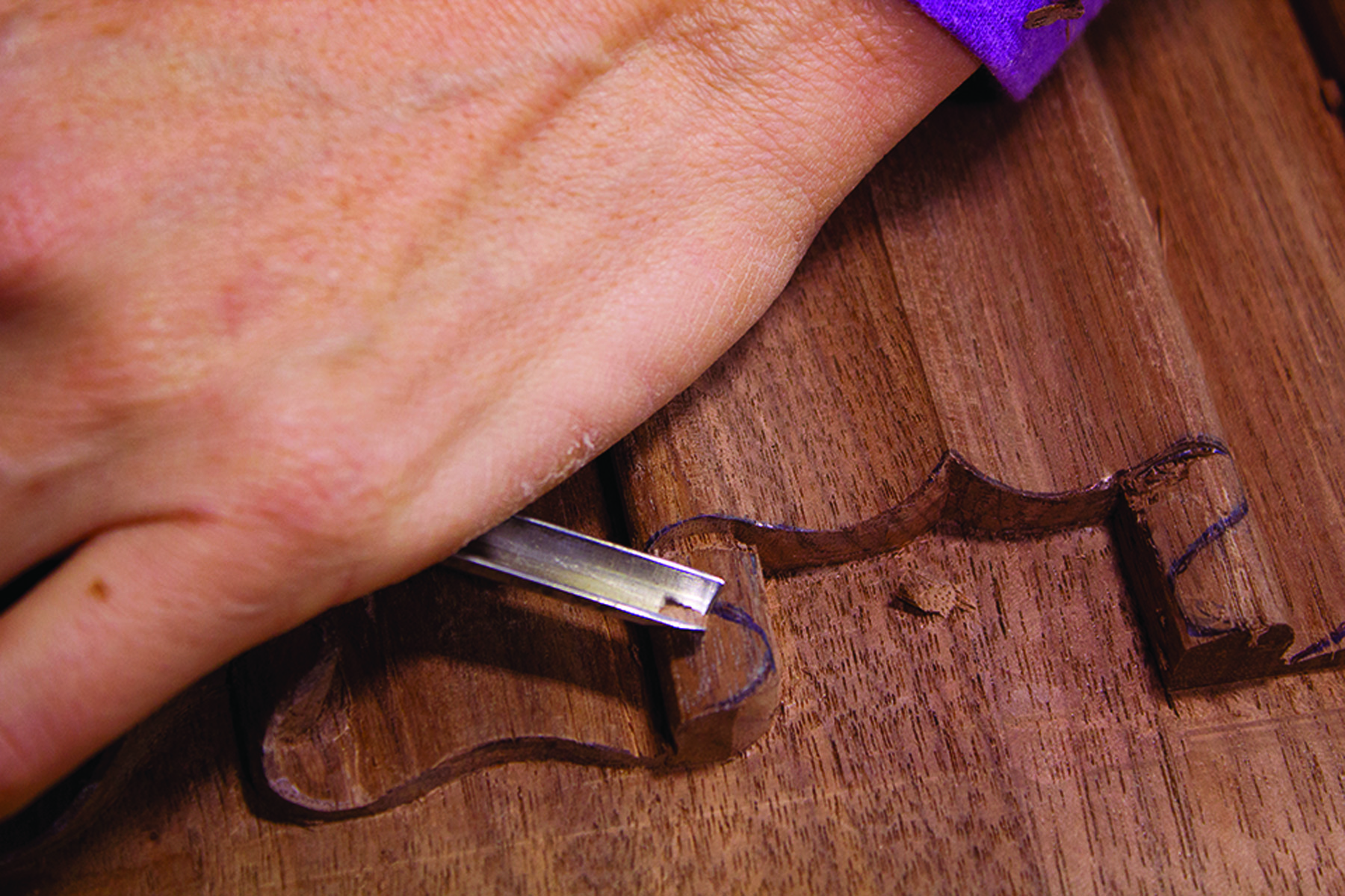
22. With a 6mm V-chisel, make a cut to define the middle twist in the cloth, leaving the line visible. Make this cut approximately 3⁄16″ deep.
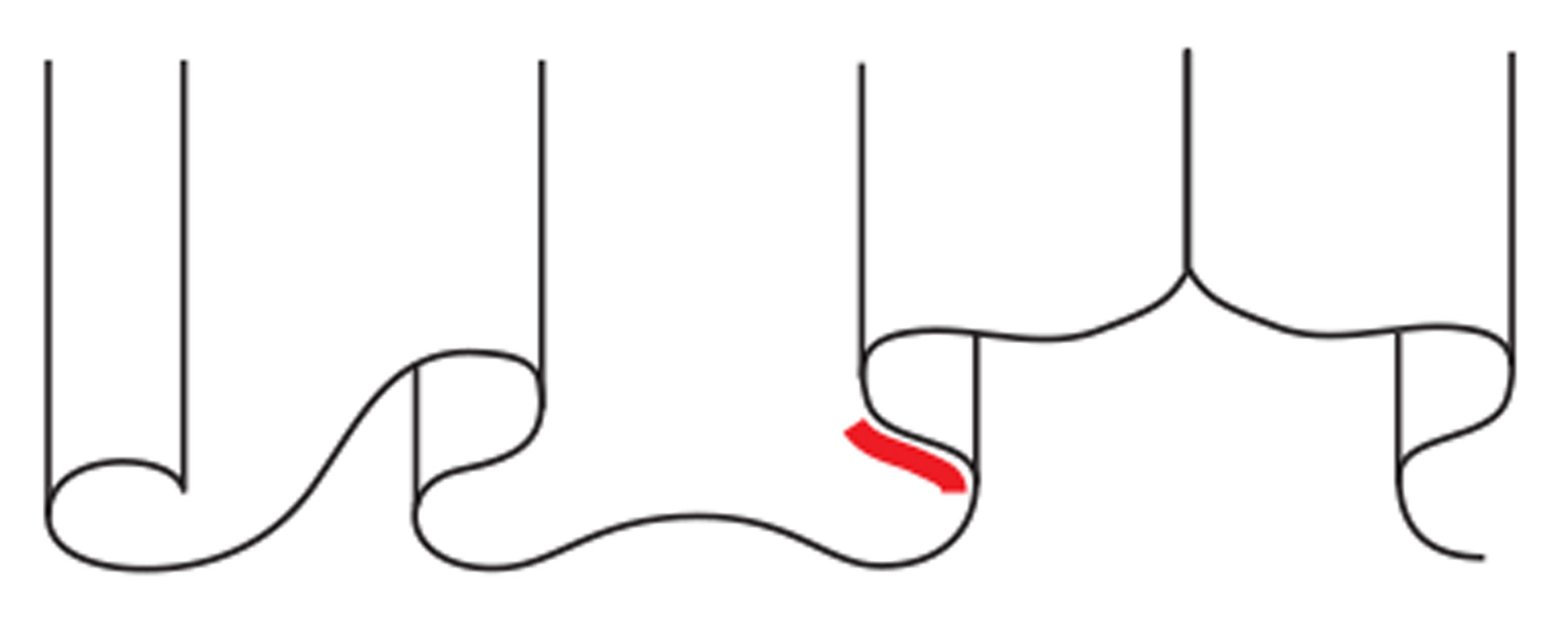
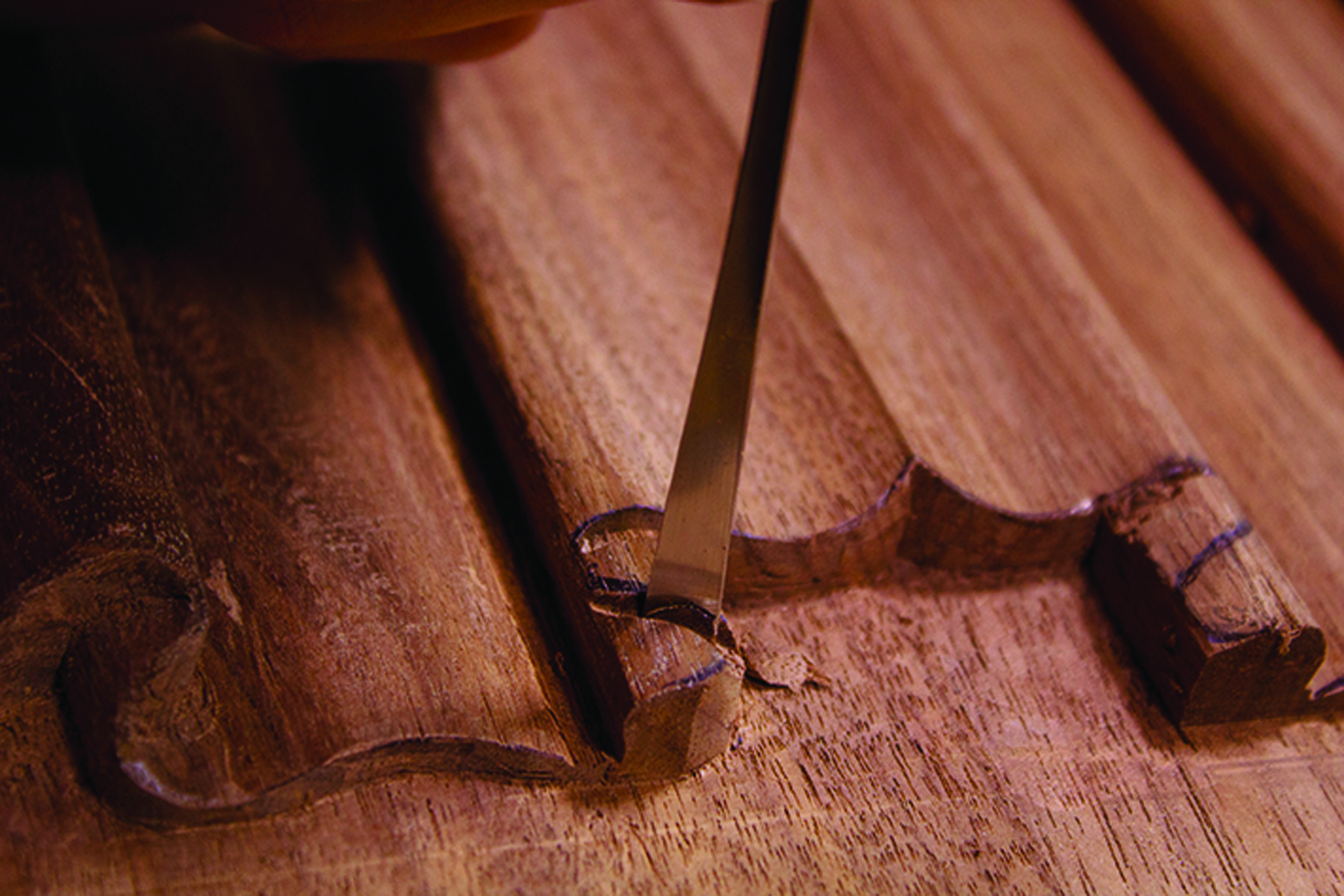
23. Use a 12mm No. 4 gouge and a 6mm No. 8 gouge to define the edge of the twist with a vertical stop-cut directly on the line. Make sure to not go over the curved edge or it breaks the continuous linenfold edge. This cut goes the depth of the lower twist (approximately 3⁄16″), not all the way to the background.
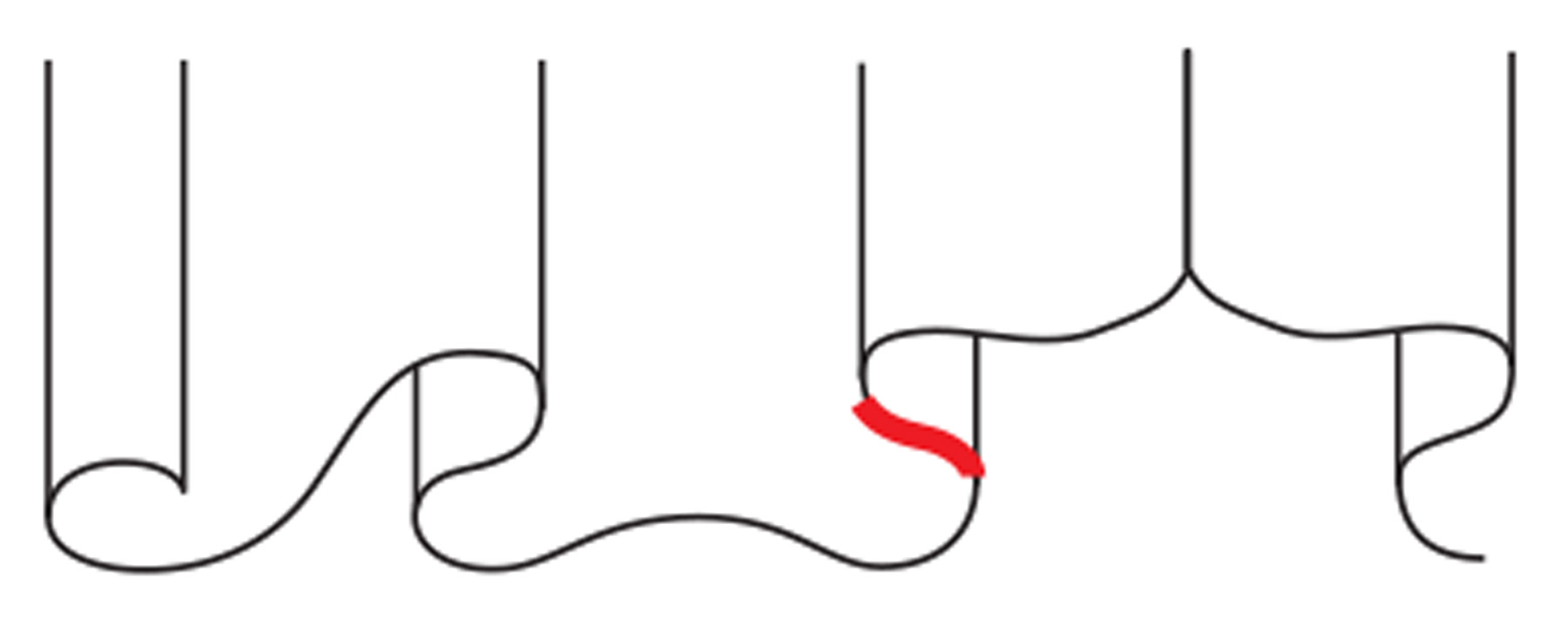
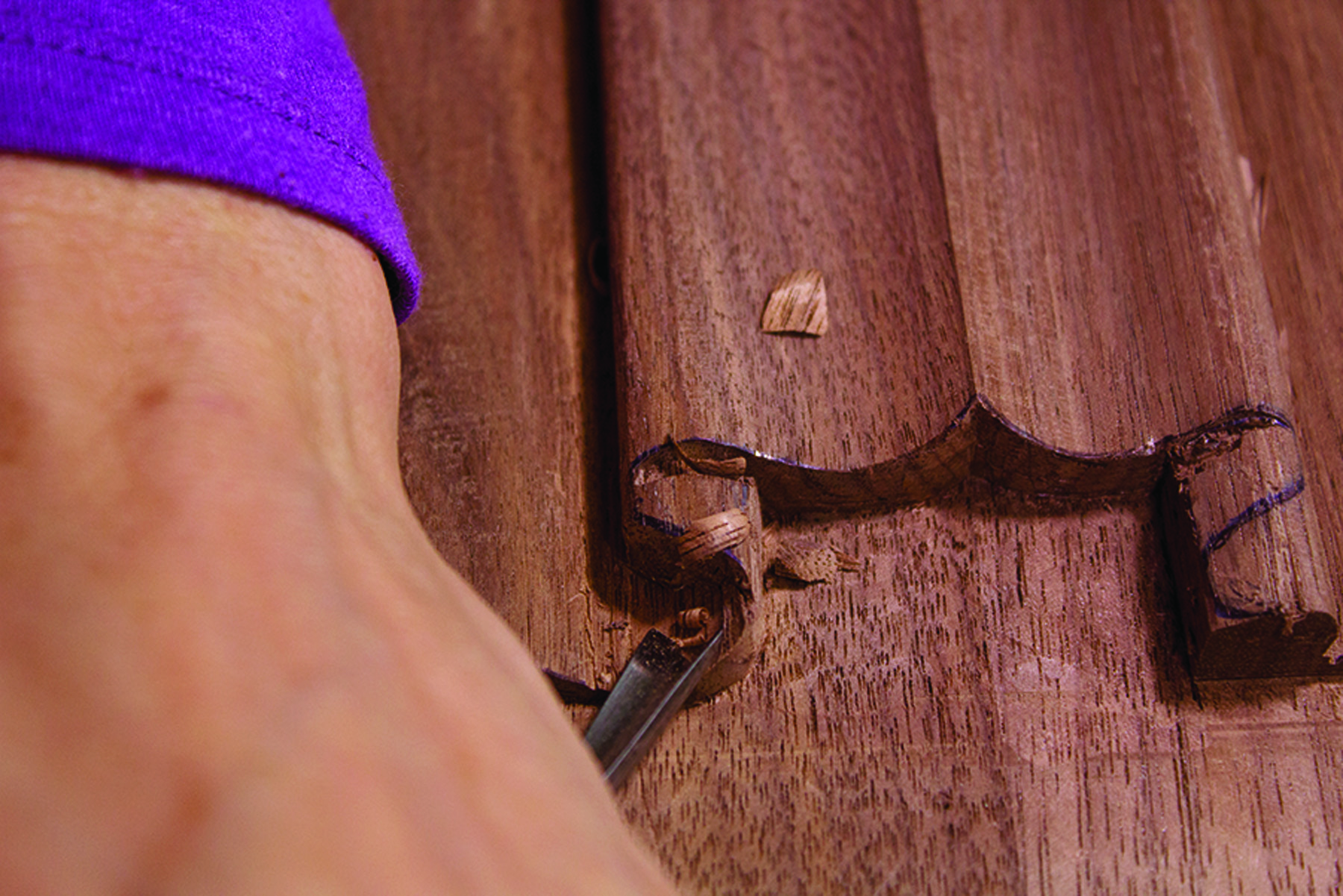
24. With a 6mm No. 8 gouge, hollow this section so it gives the appearance of flowing cloth. Flow this cut into the area that was shaped with the hollow moulding plane.
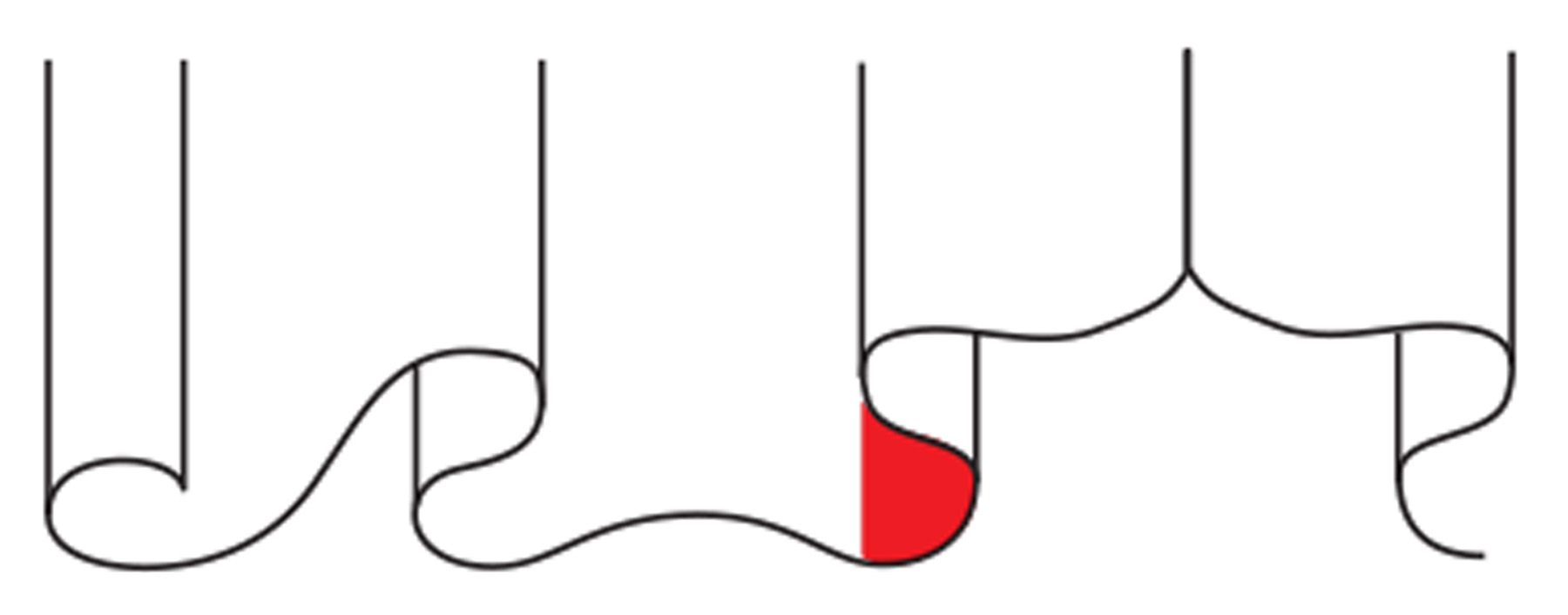
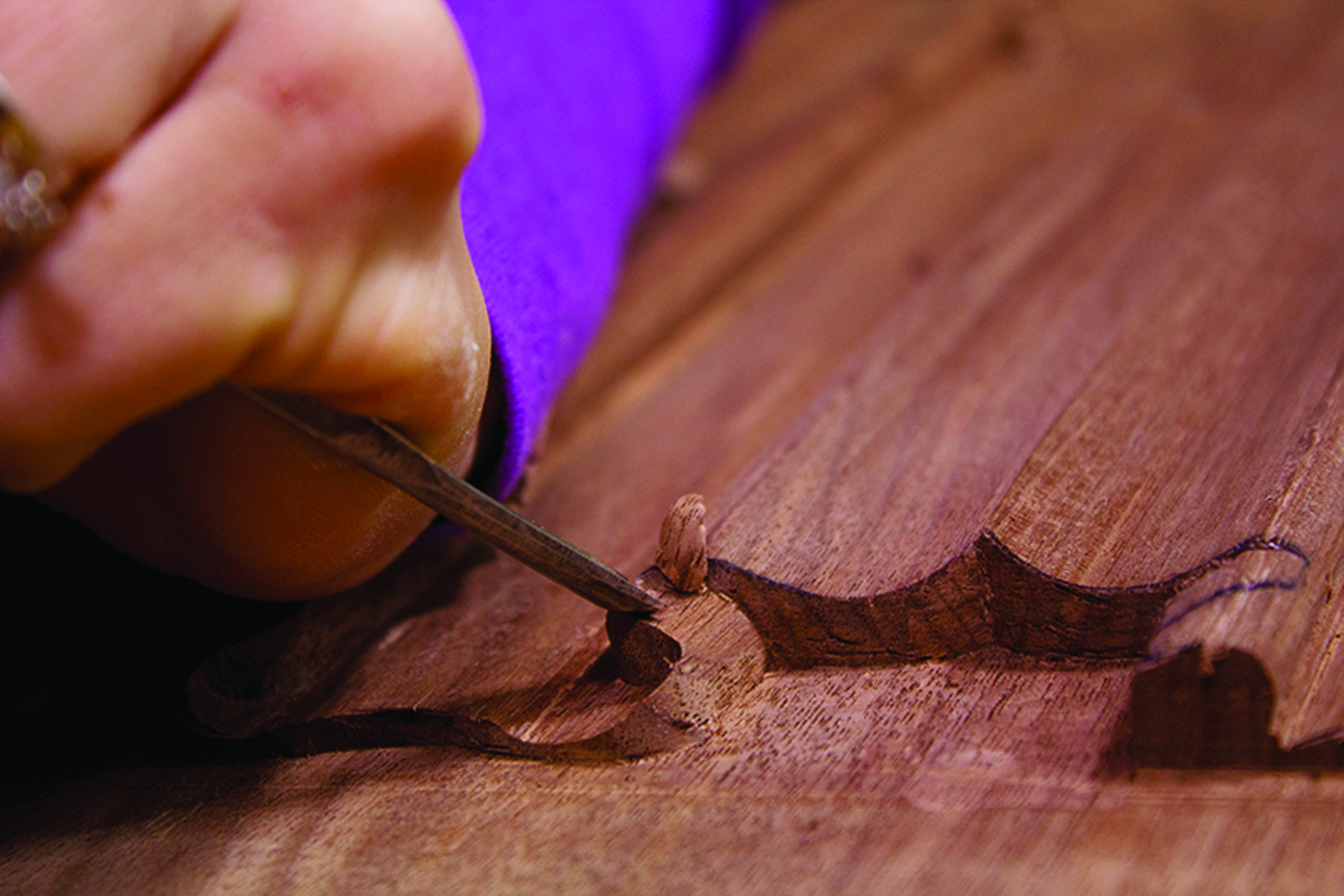
25. Using a 12mm No. 4 gouge and 6mm No. 8 gouge, make a vertical cut at the top curve of the fold to the depth of the middle twist (not shown), similar to step 9. With a 6mm No. 8 gouge, hollow this section of the fold.
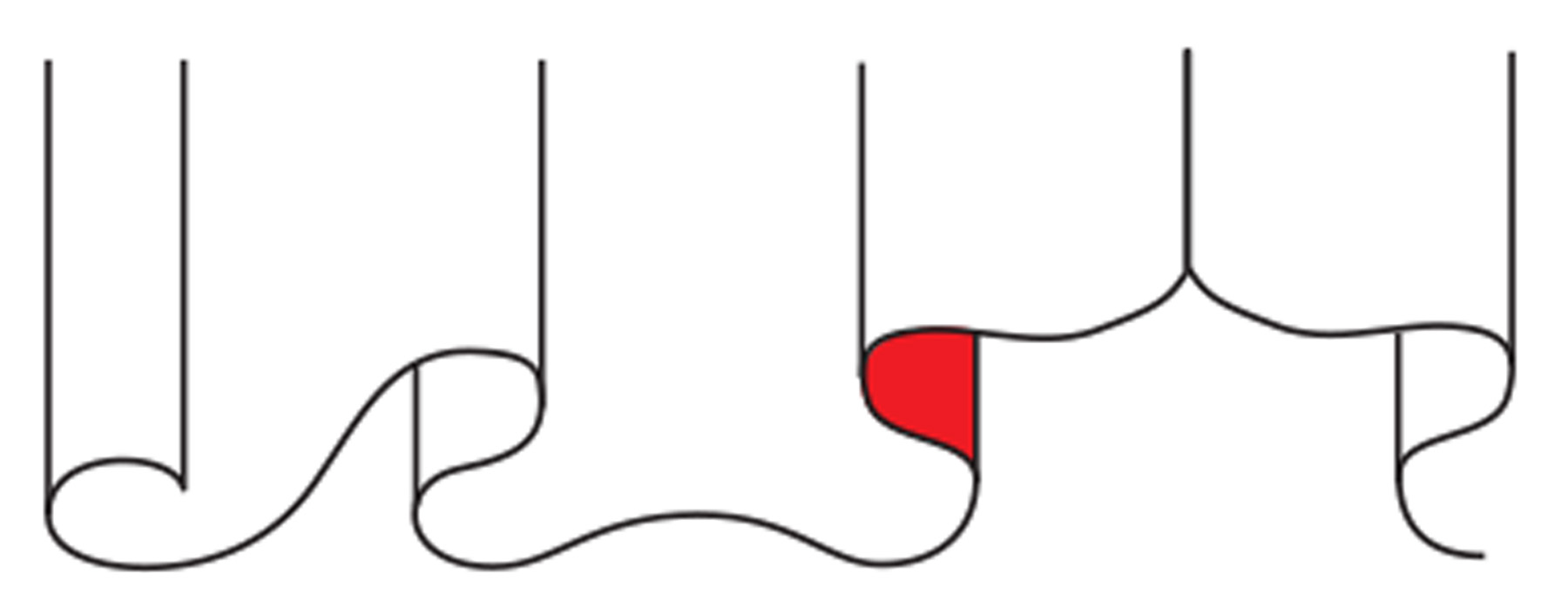
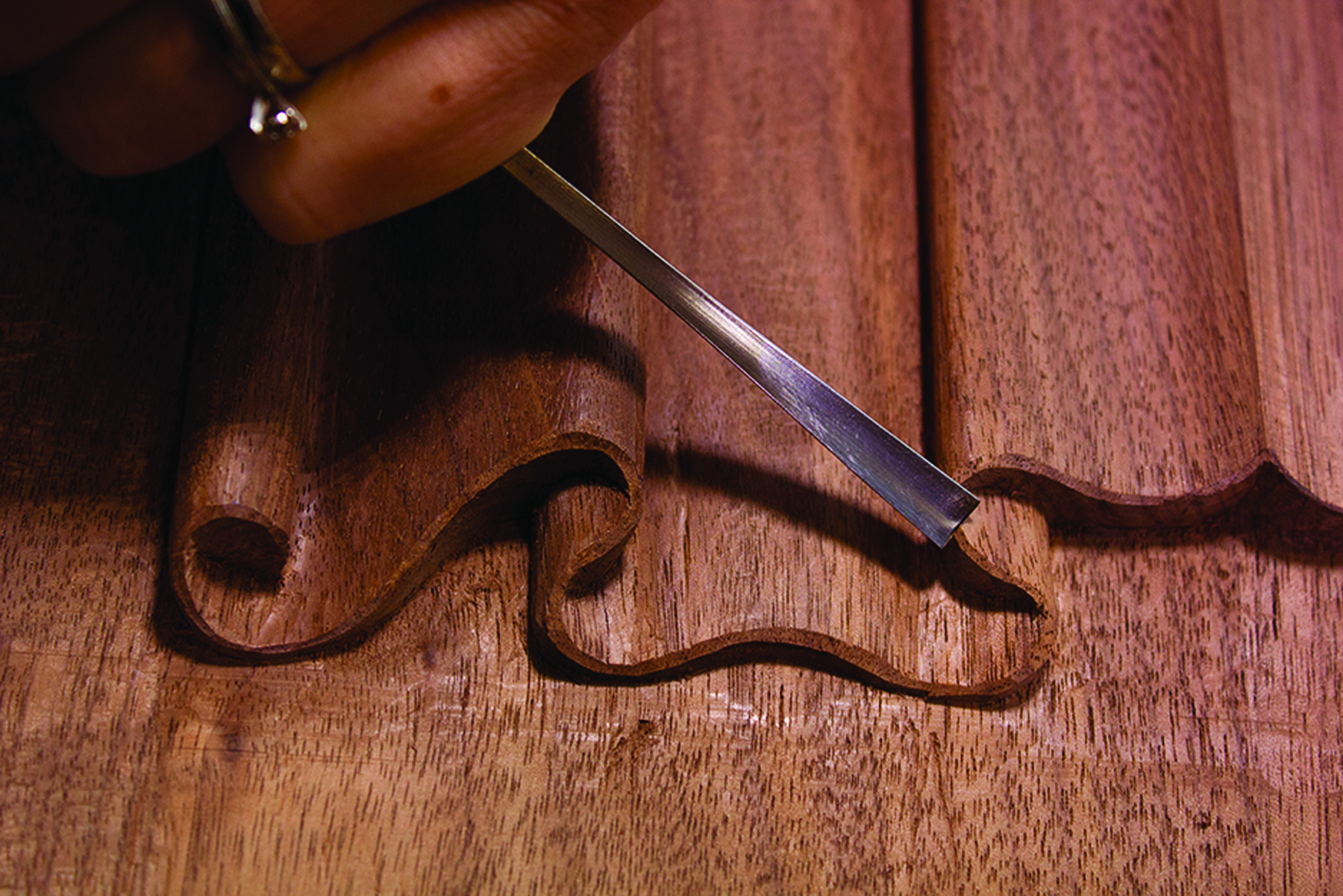
26. Use a 6mm No. 3 gouge to make a final 45º cut along the edge. This cleans up any rough edge and creates a nice shadow line.
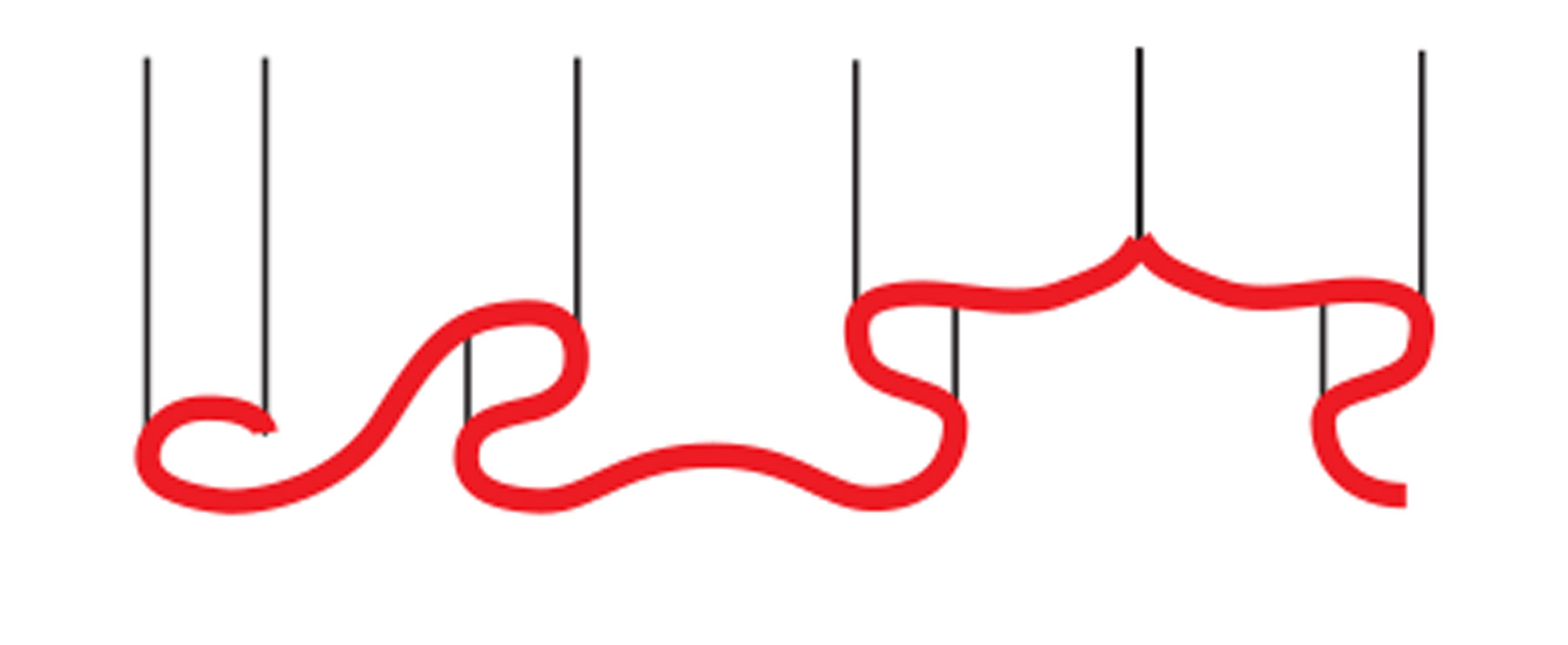 As a professional woodcarver with a workshop in Charleston, S.C., Mary offers classes in her shop and at a variety of other locations. She also offers instructional DVDs as well as an online video woodcarving school.
As a professional woodcarver with a workshop in Charleston, S.C., Mary offers classes in her shop and at a variety of other locations. She also offers instructional DVDs as well as an online video woodcarving school.
Pattern: Download a free, full-size pattern of the linenfold design the author used to carve the panel in this article: Linen Pattern
Web Site: Visit Mary May’s site for information on classes and to view a gallery of her work.
Blog: Learn more about linenfold carving as you watch the author work on her panel.
Here are some supplies and tools we find essential in our everyday work around the shop. We may receive a commission from sales referred by our links; however, we have carefully selected these products for their usefulness and quality.








